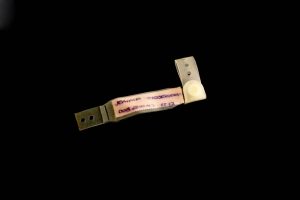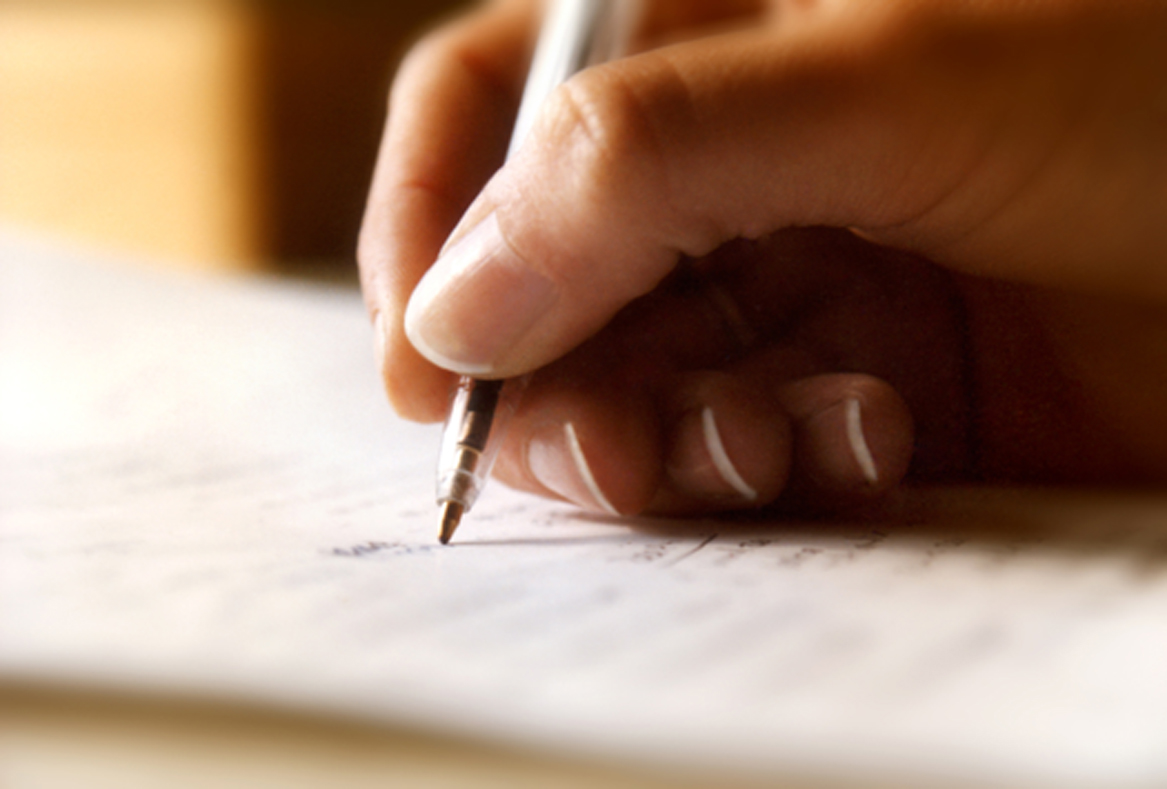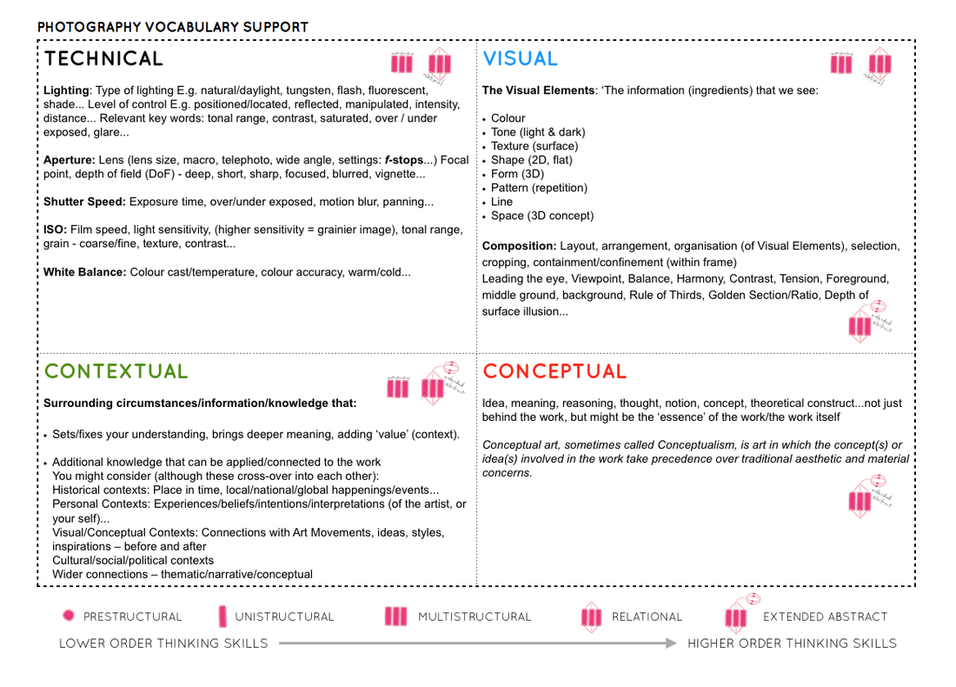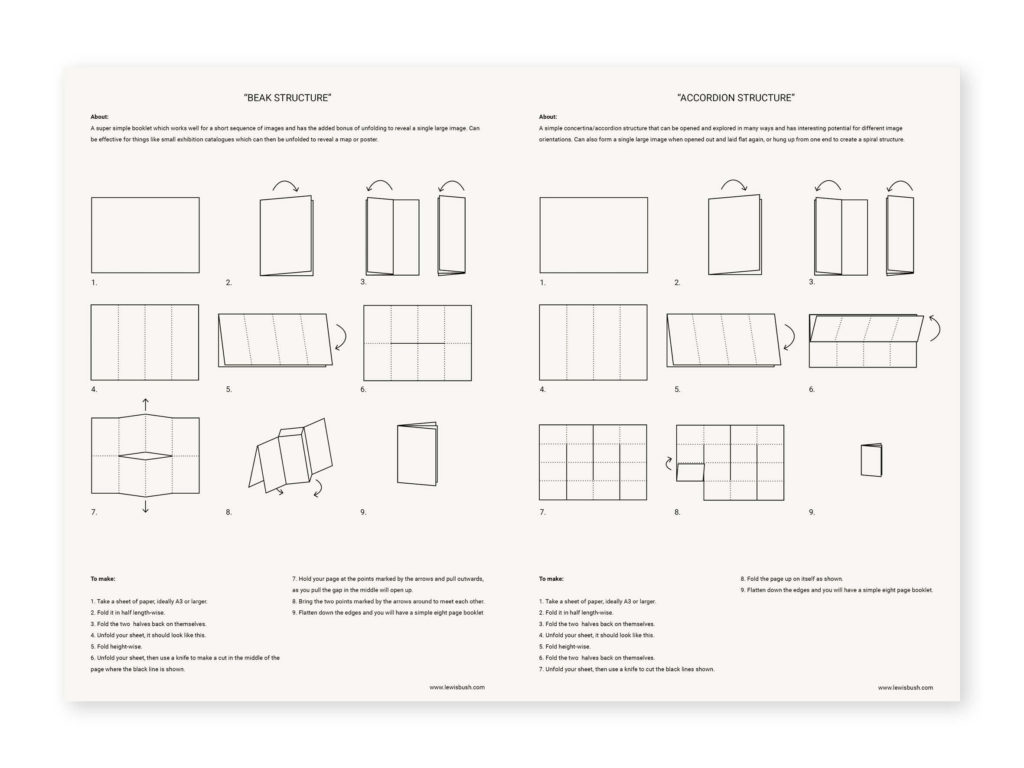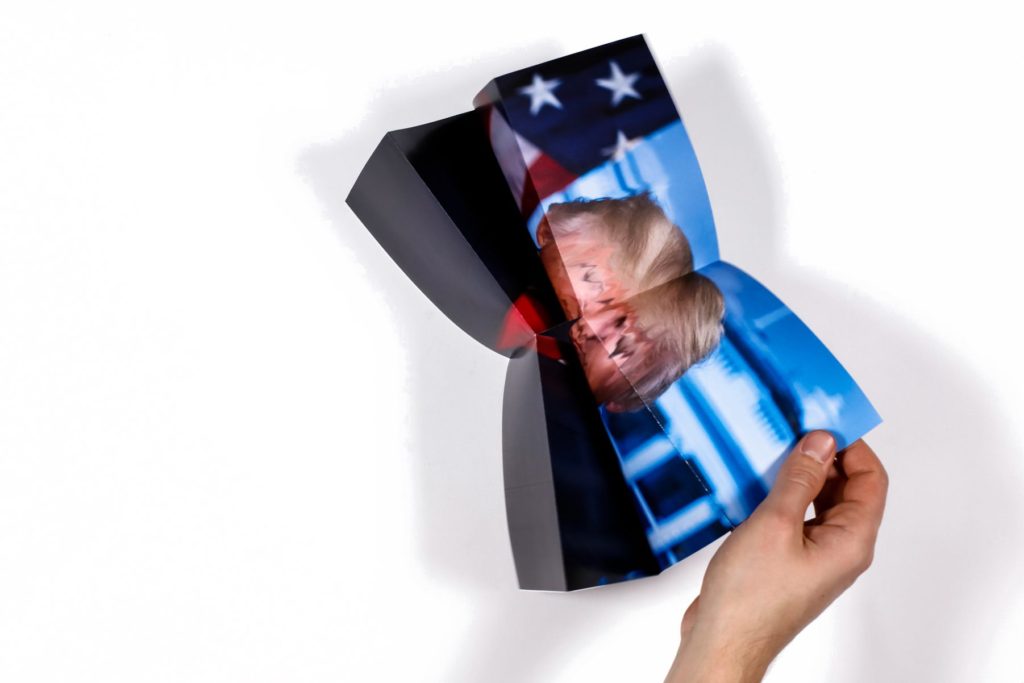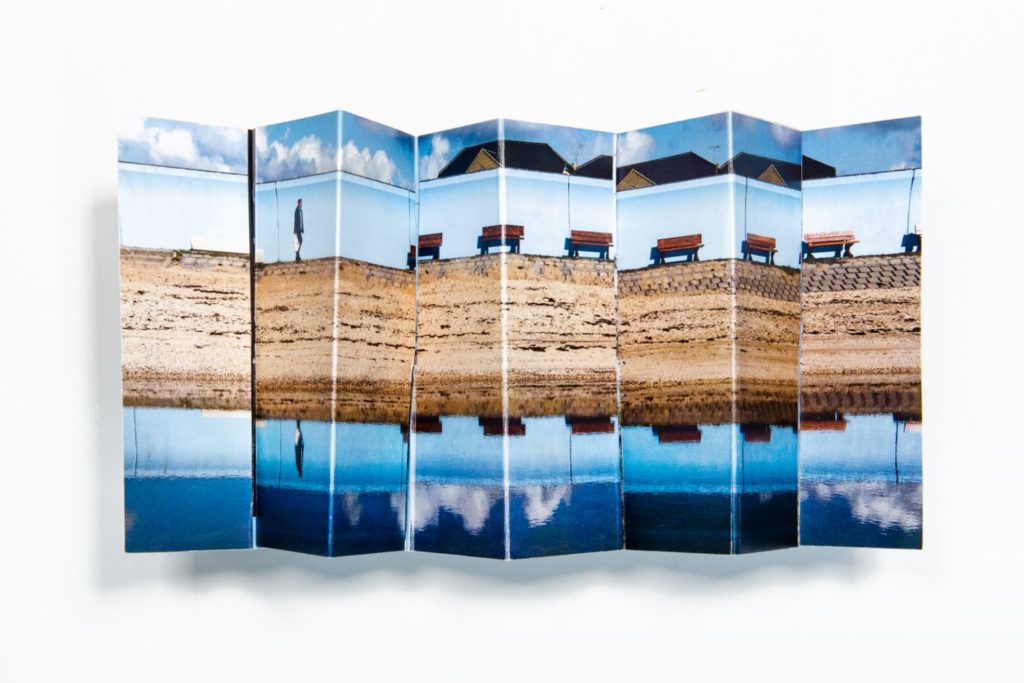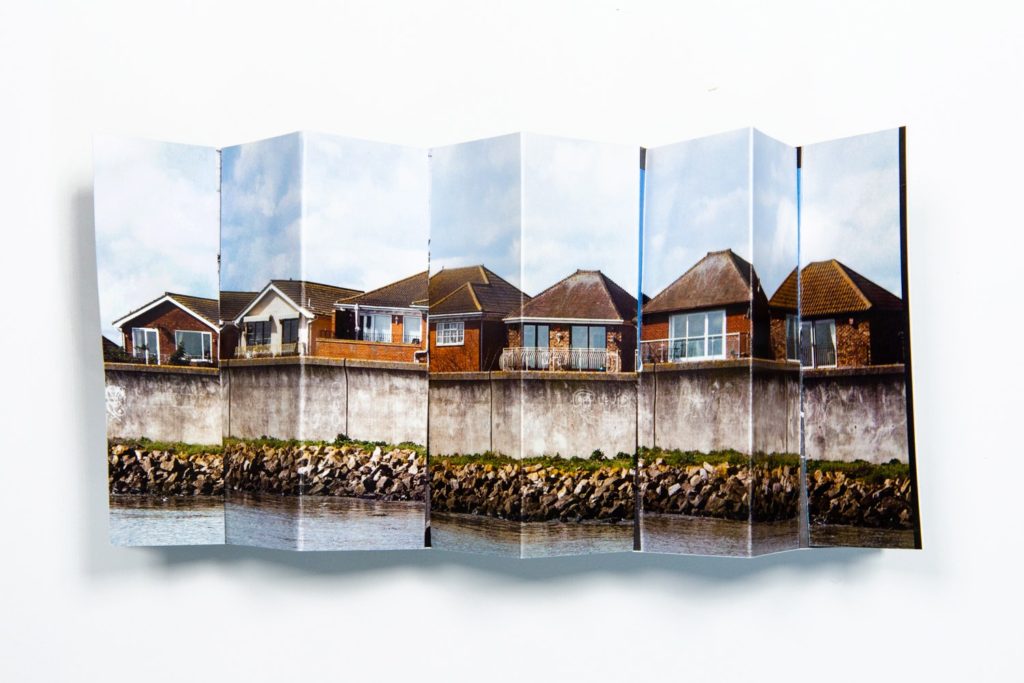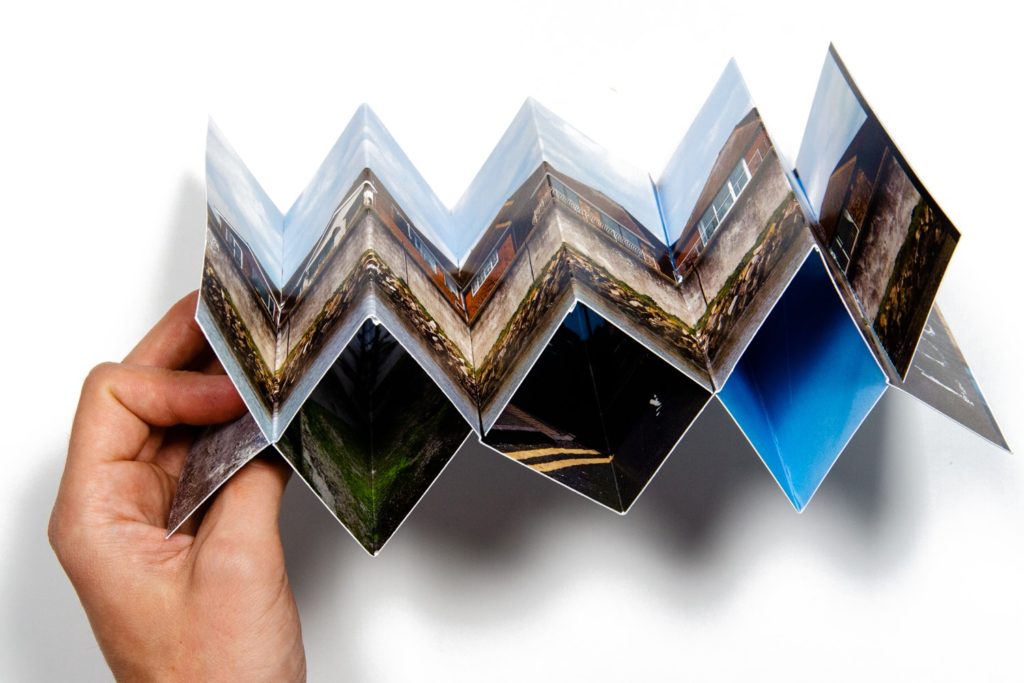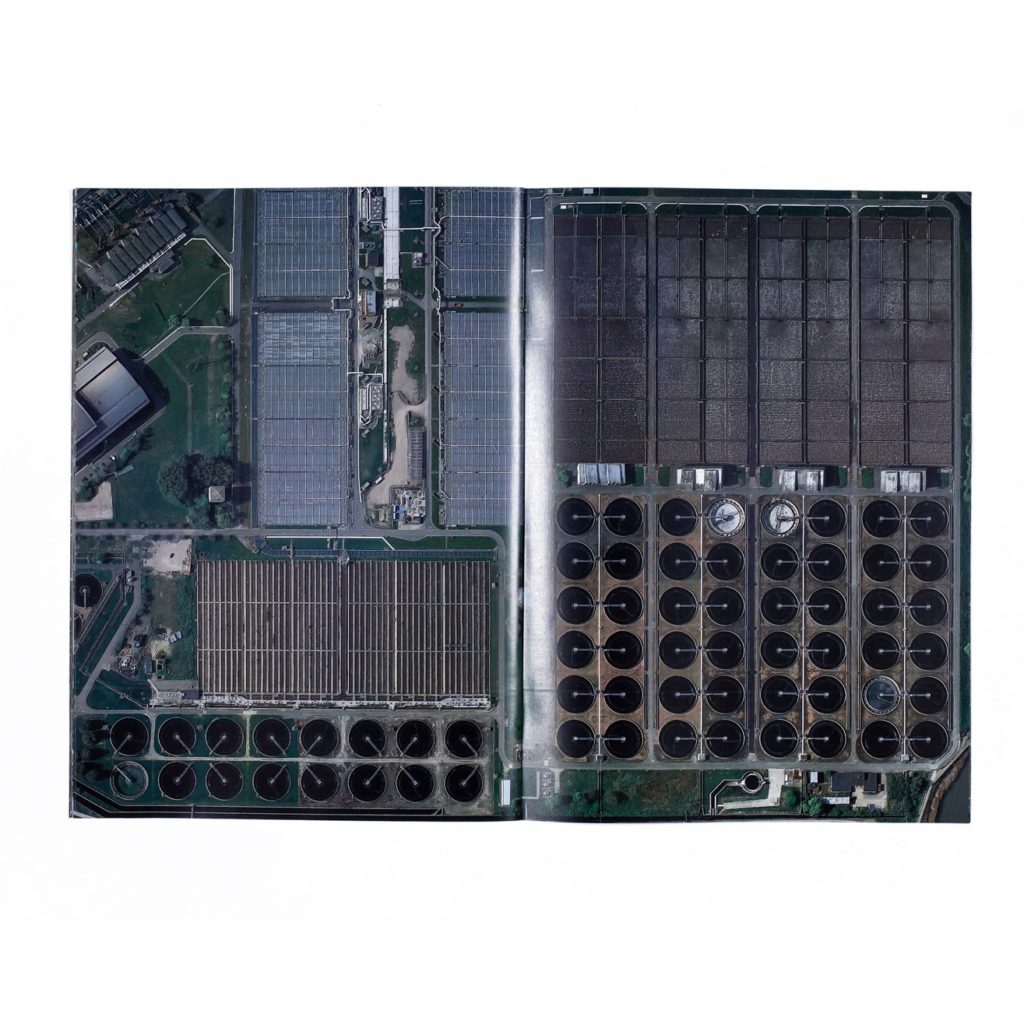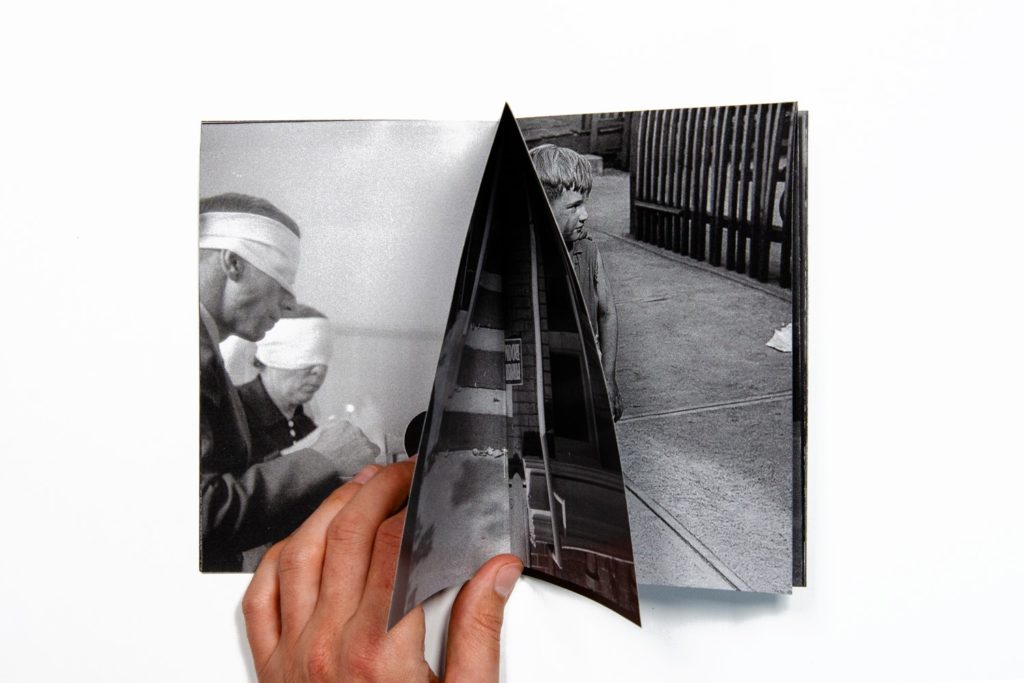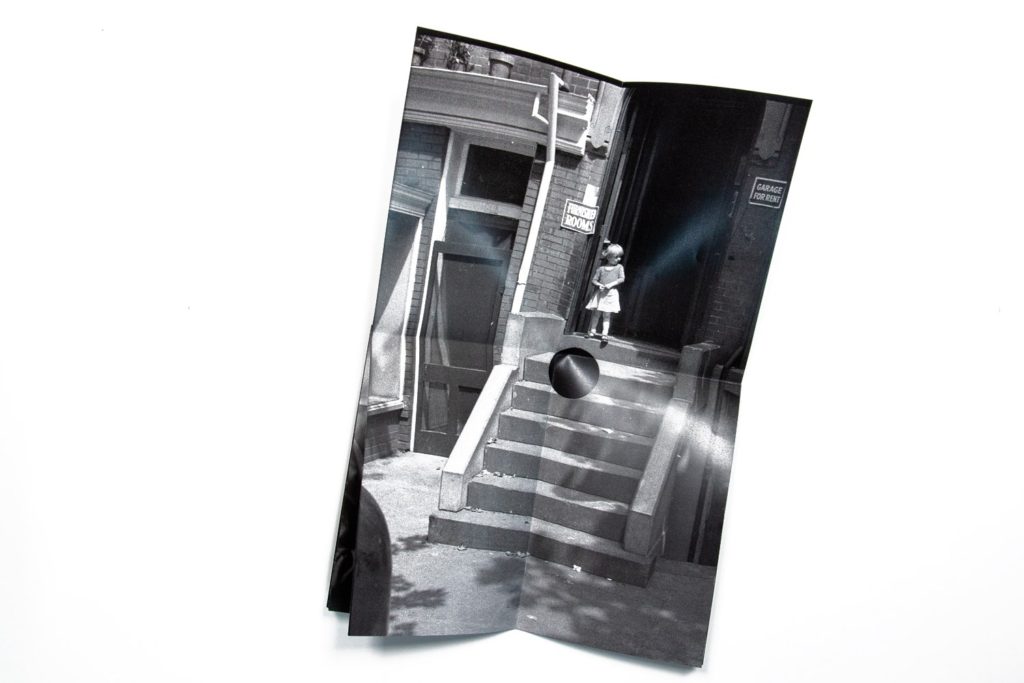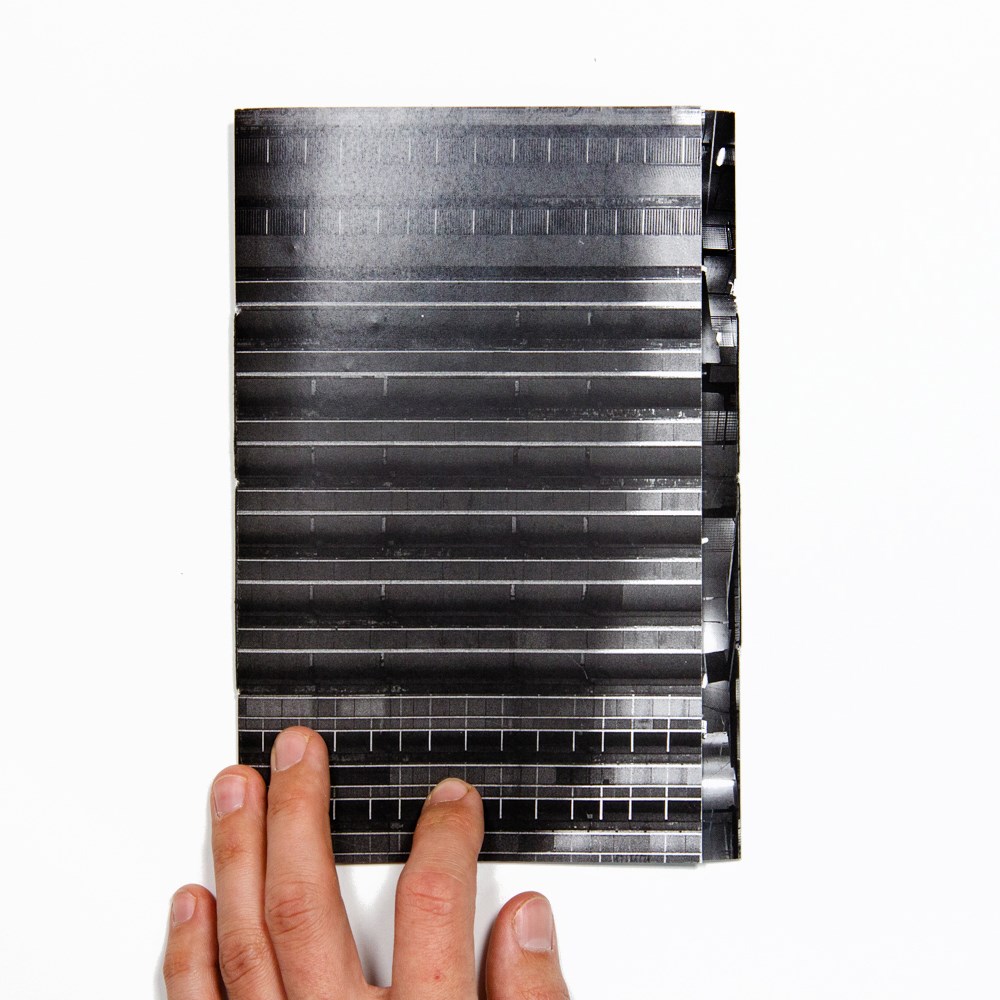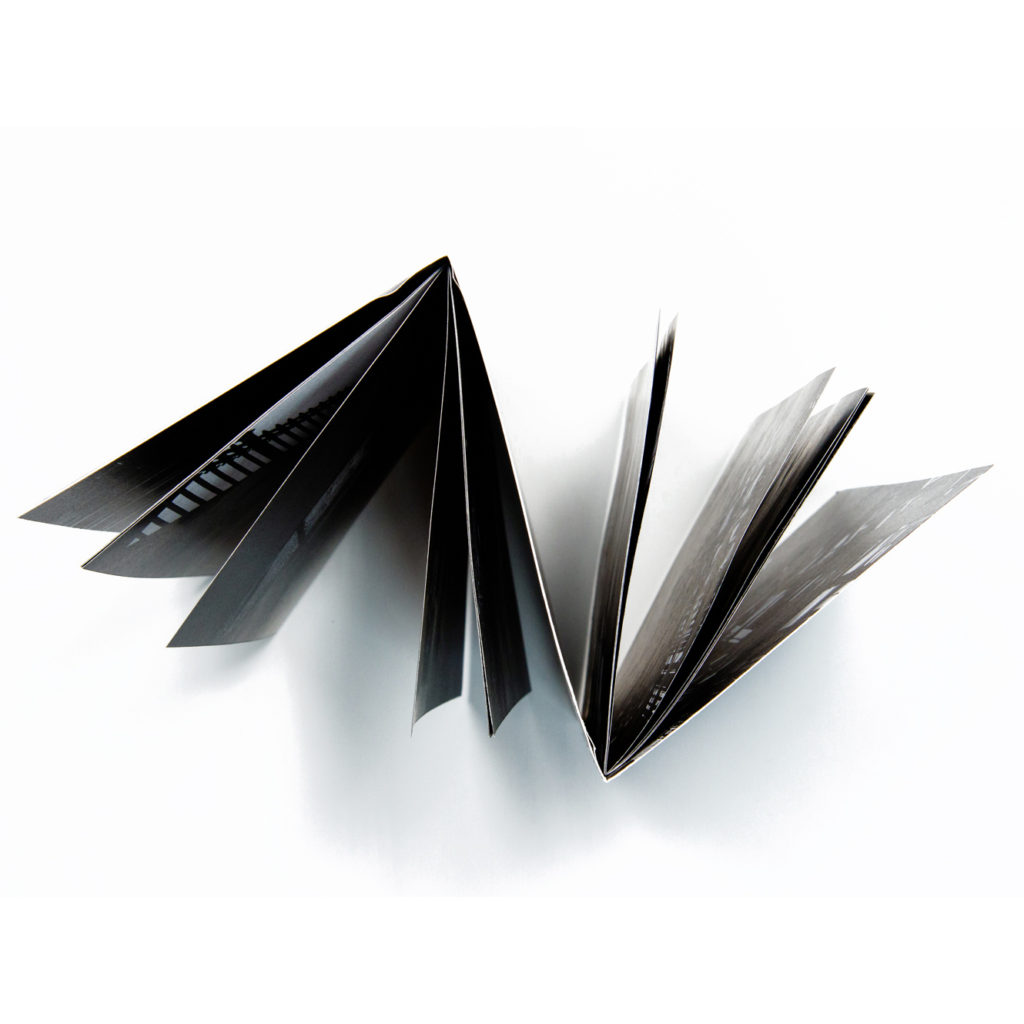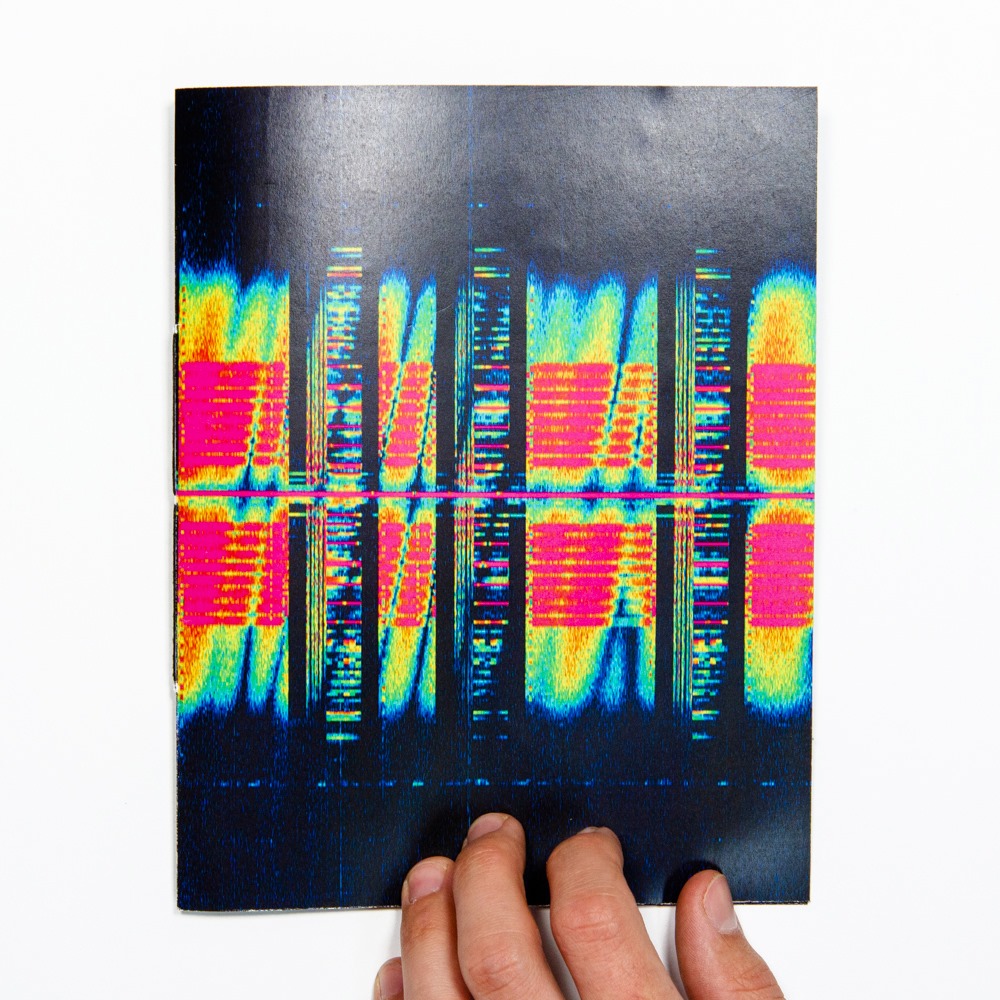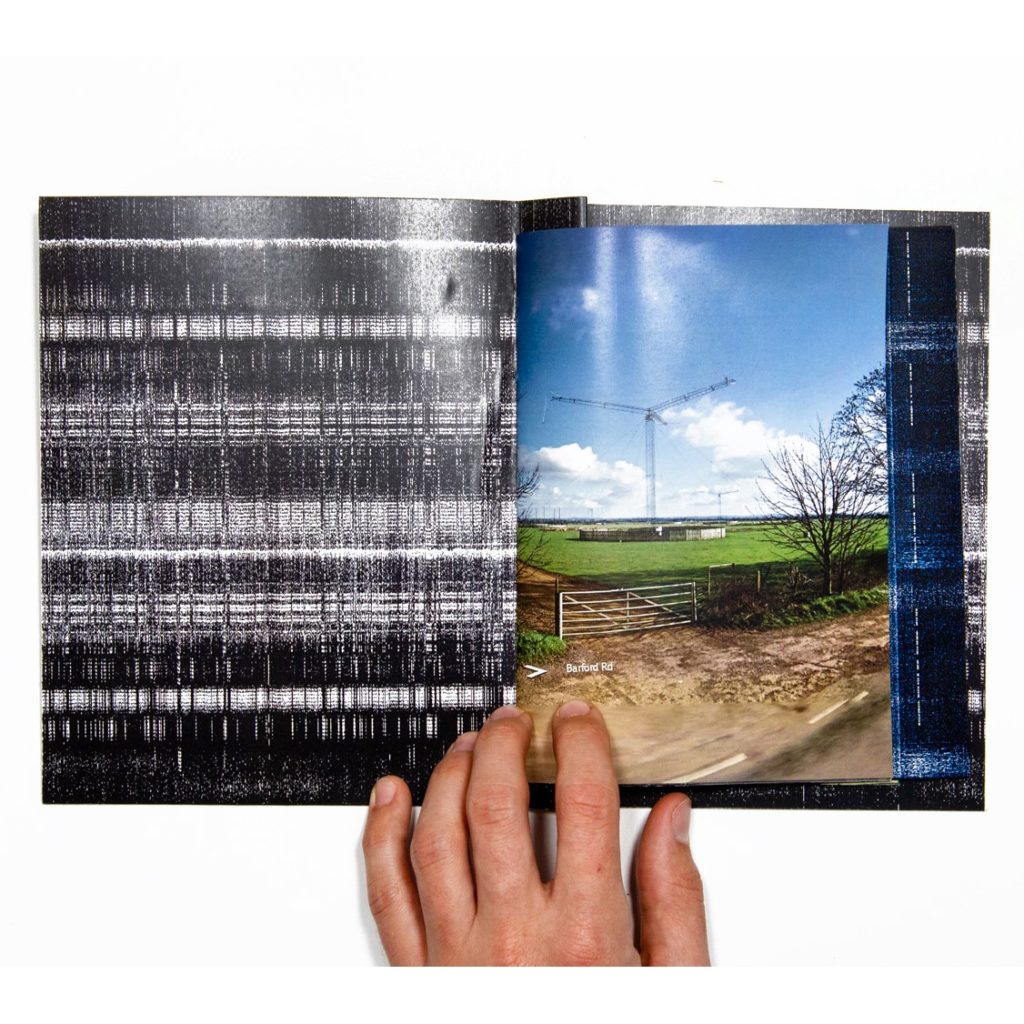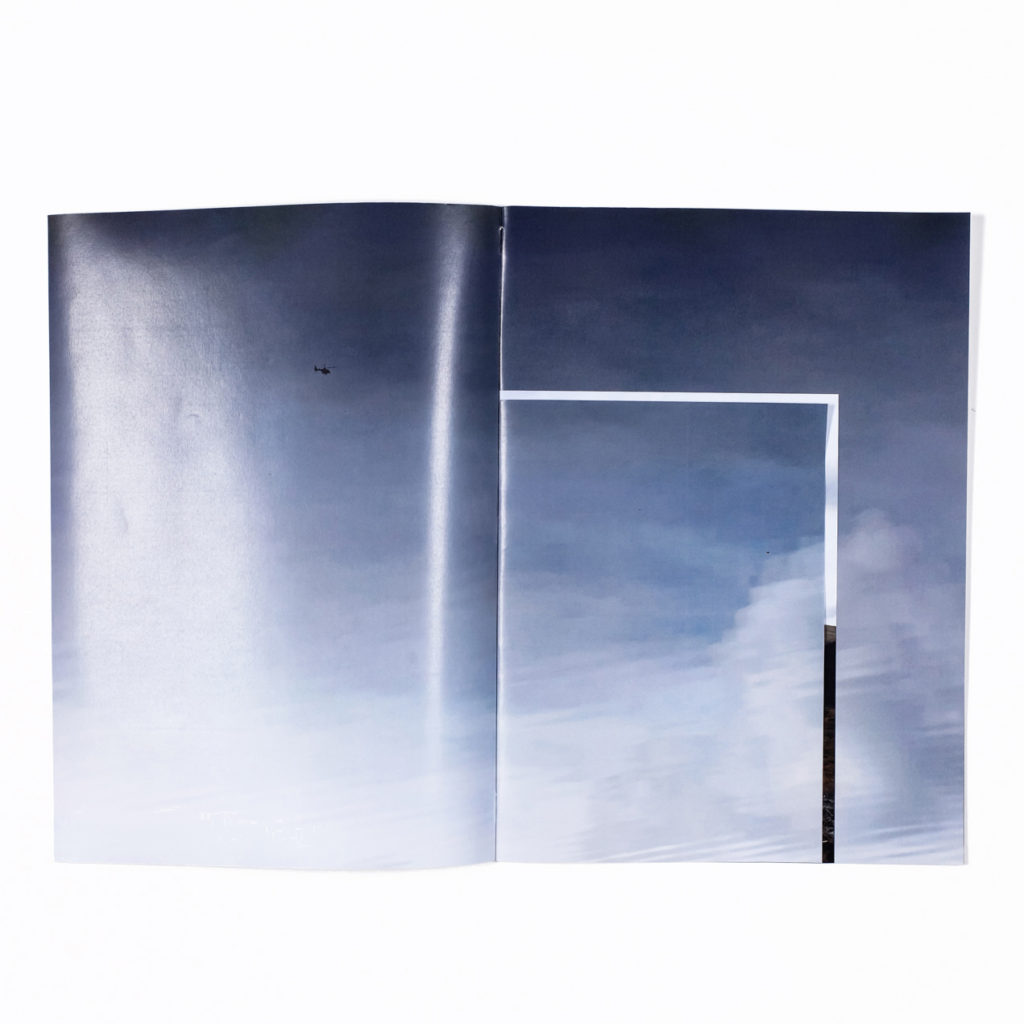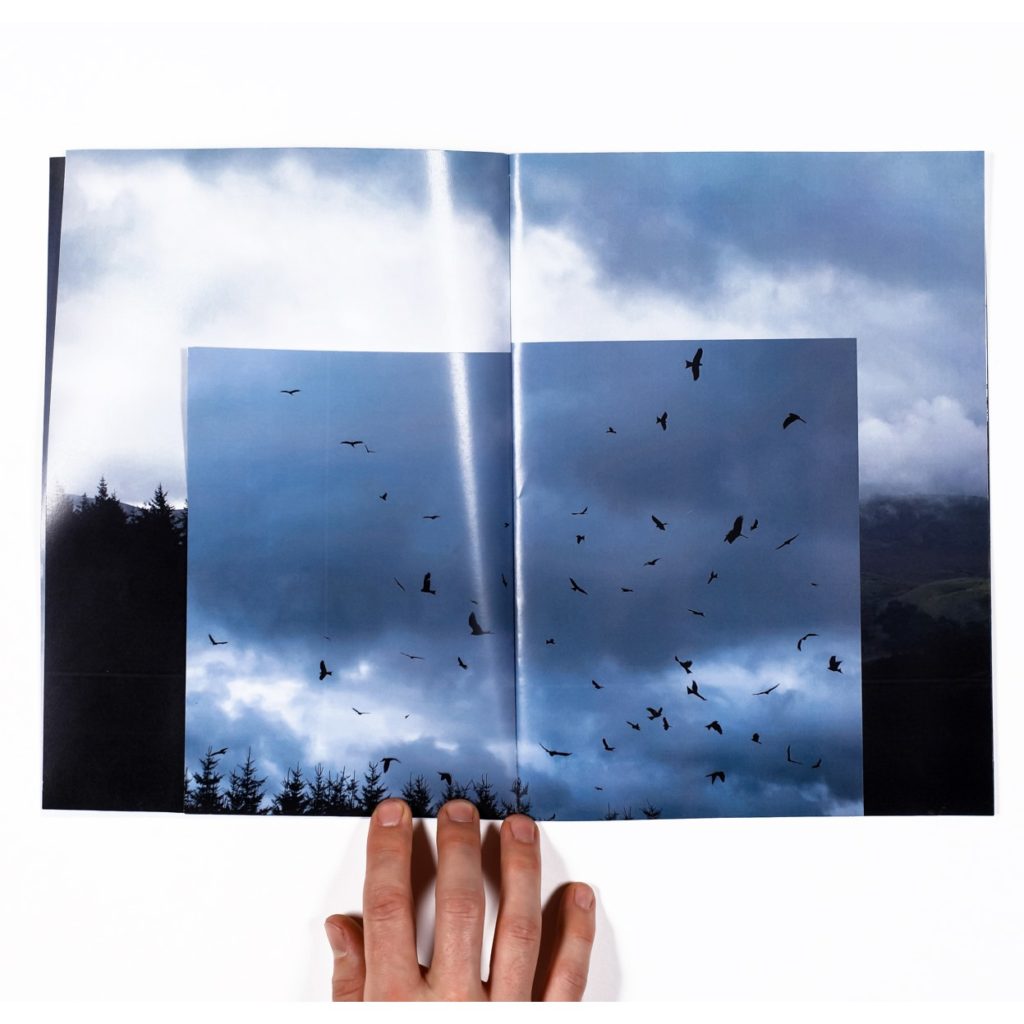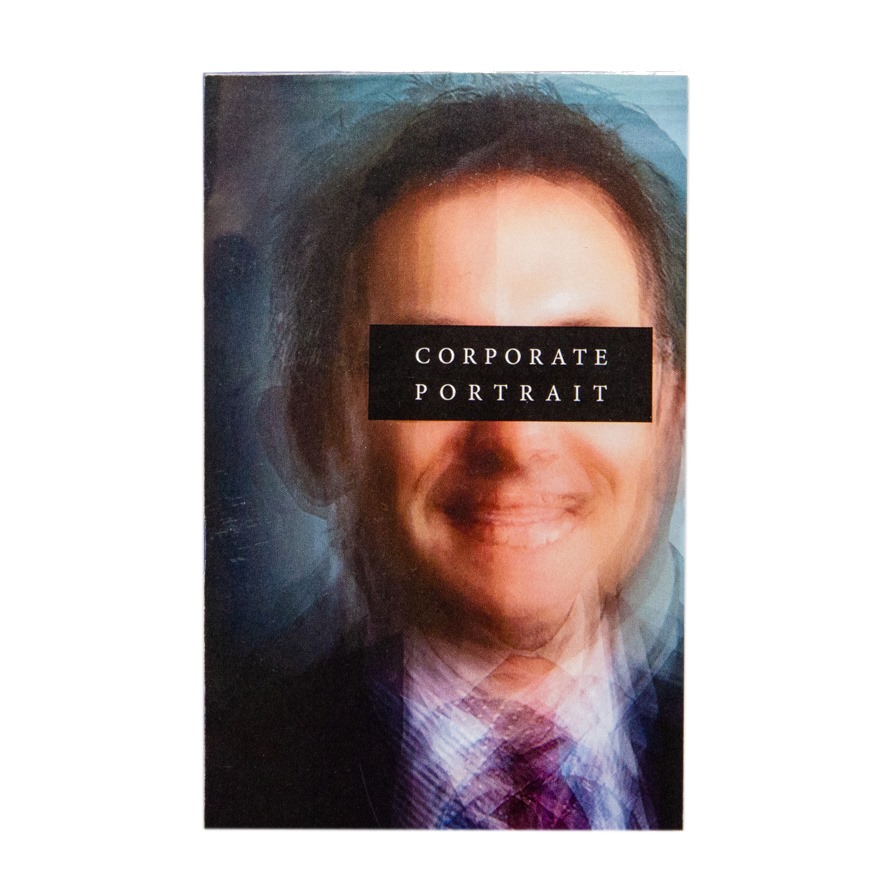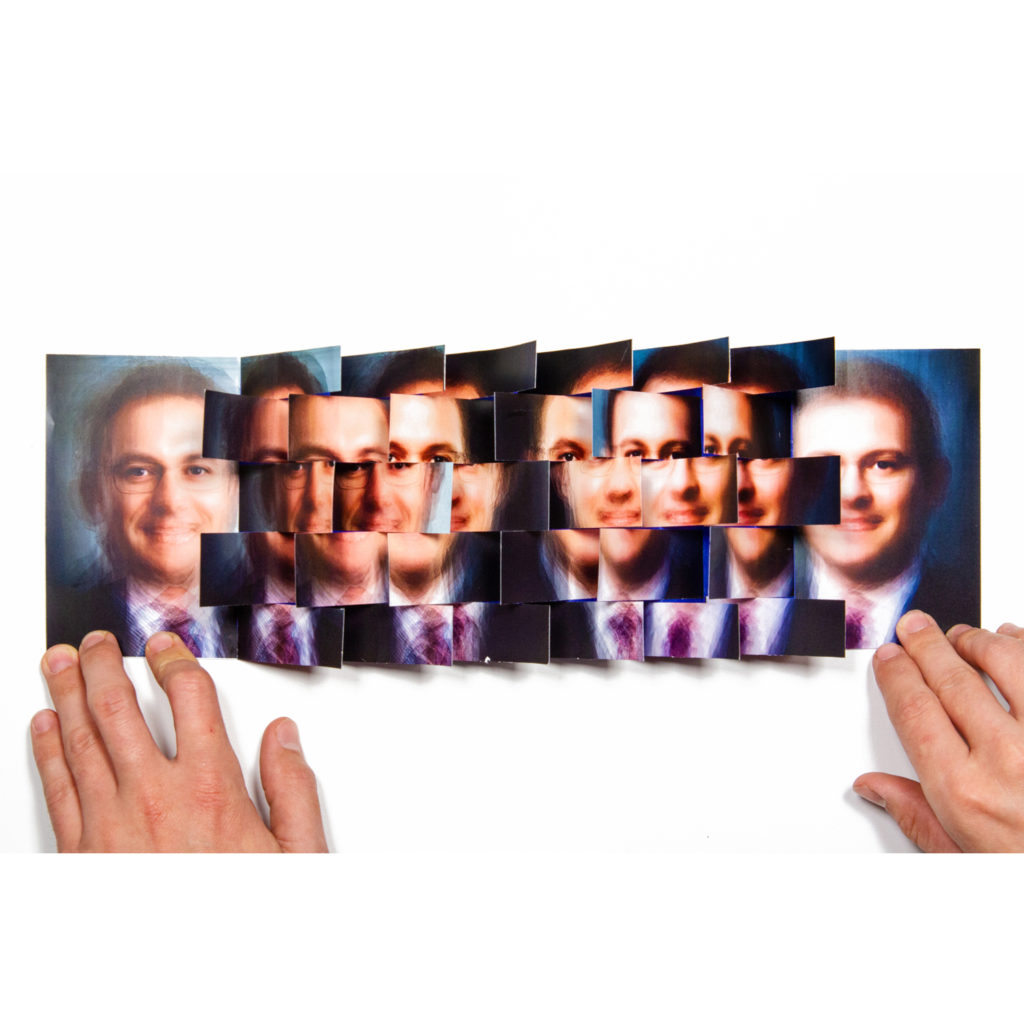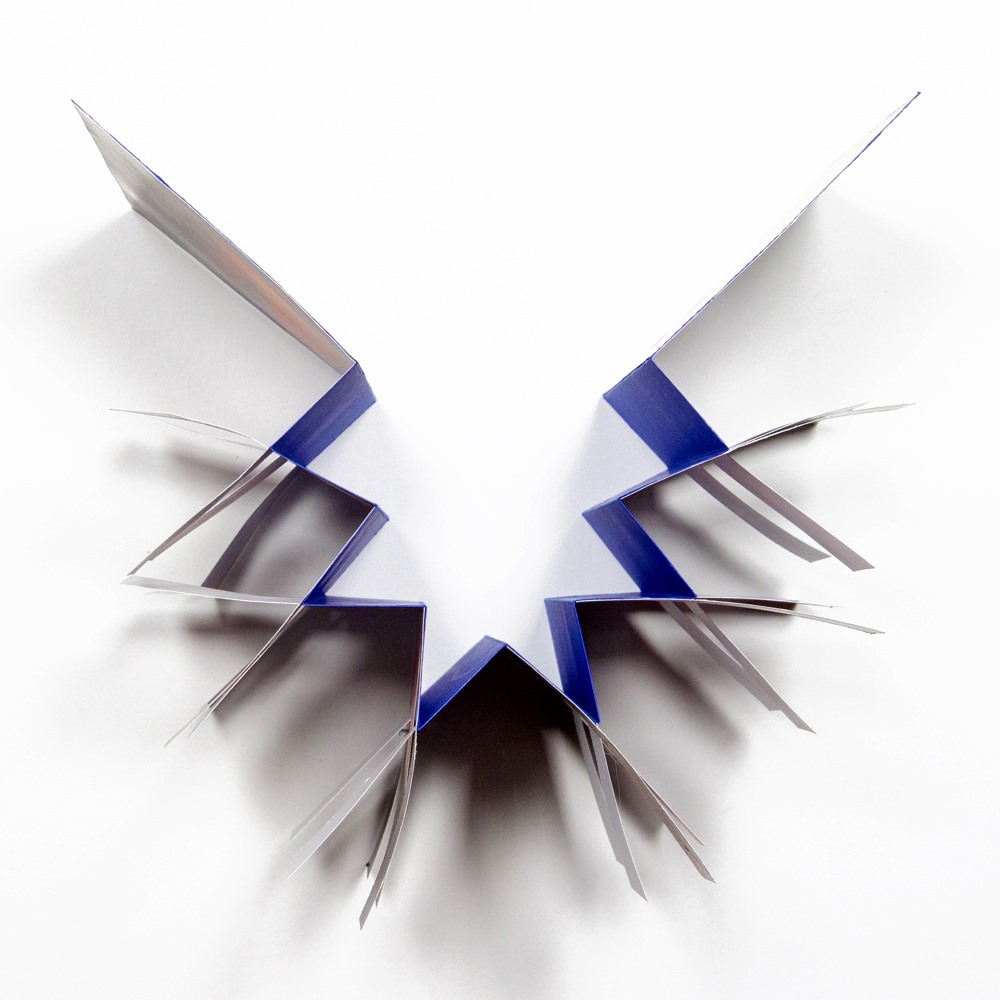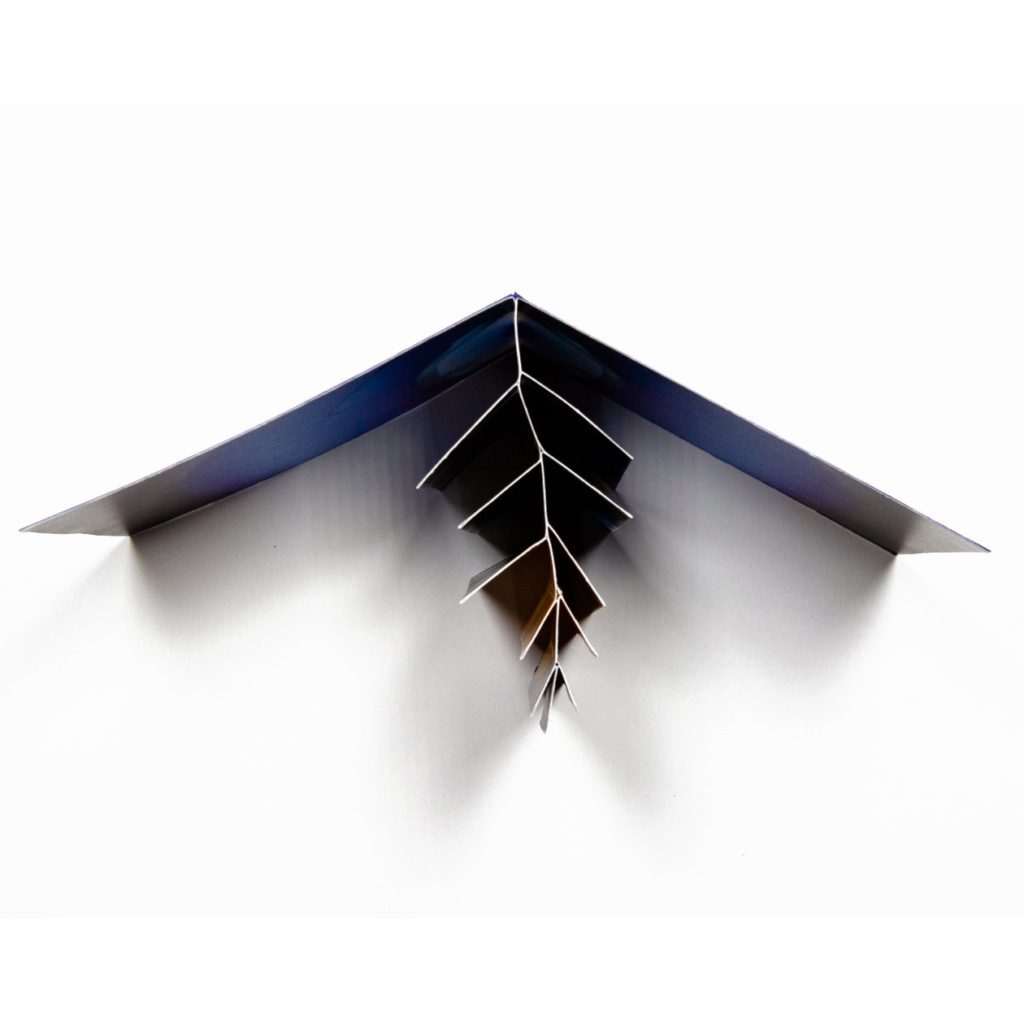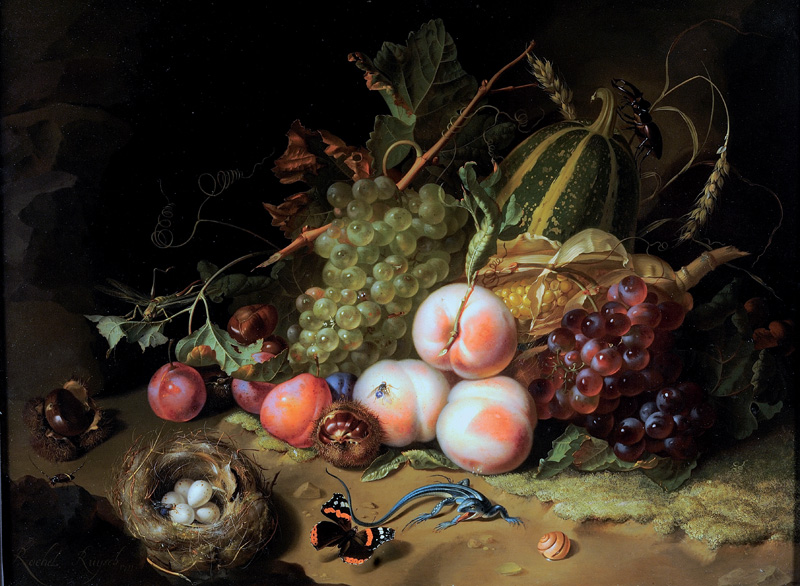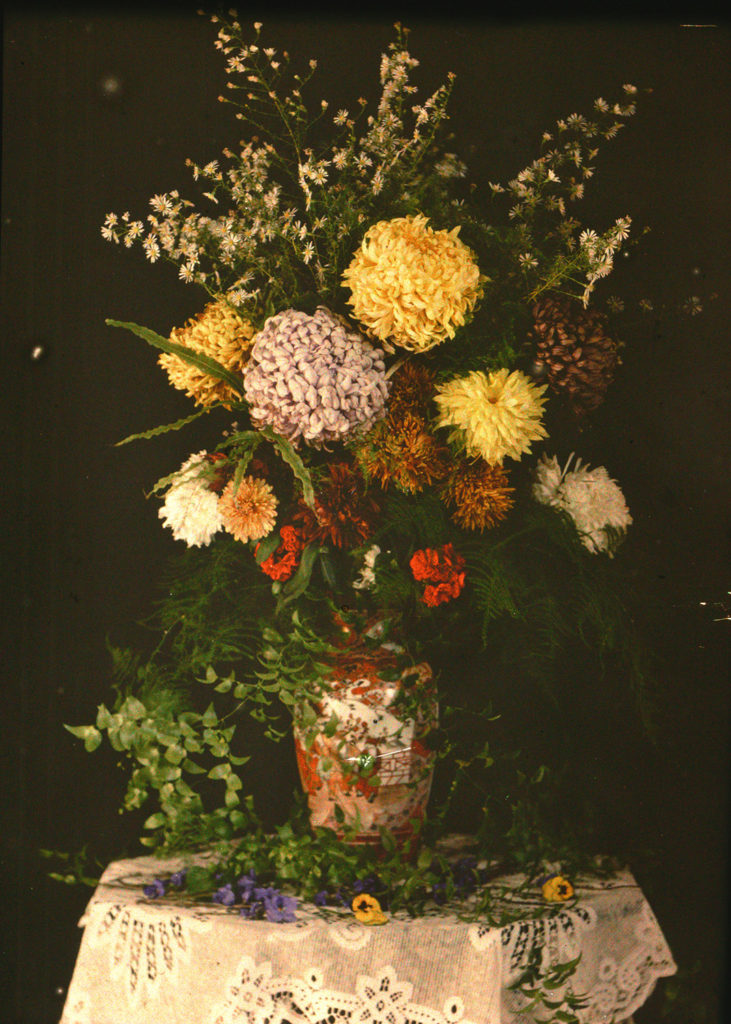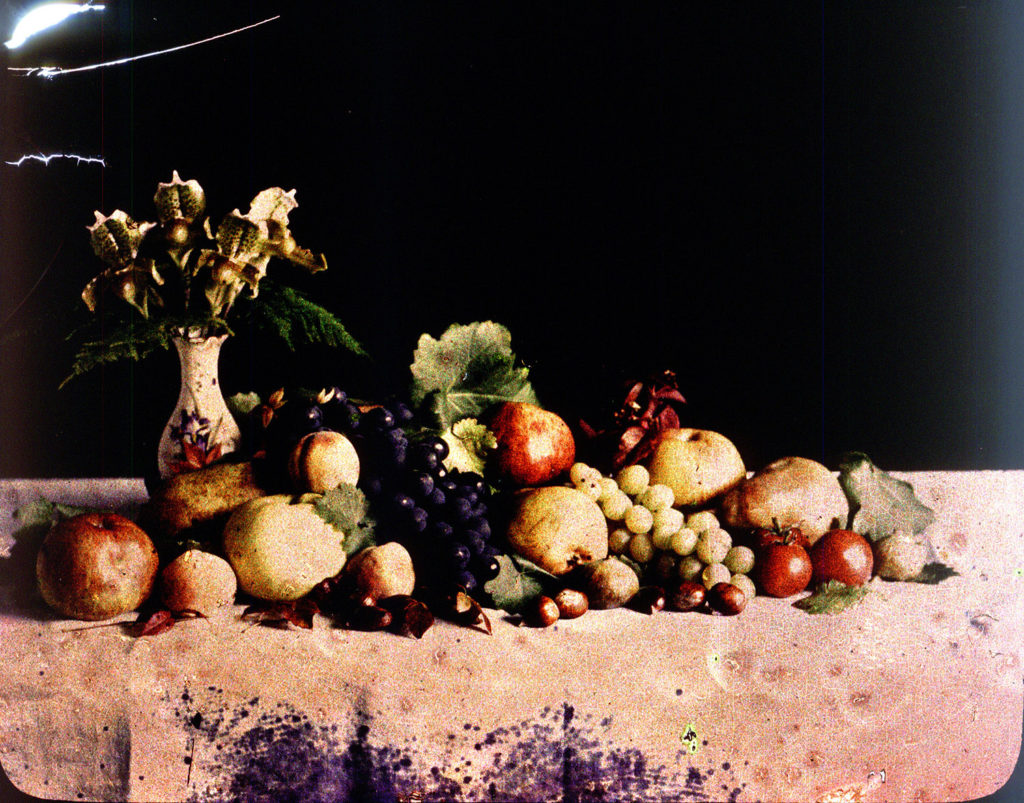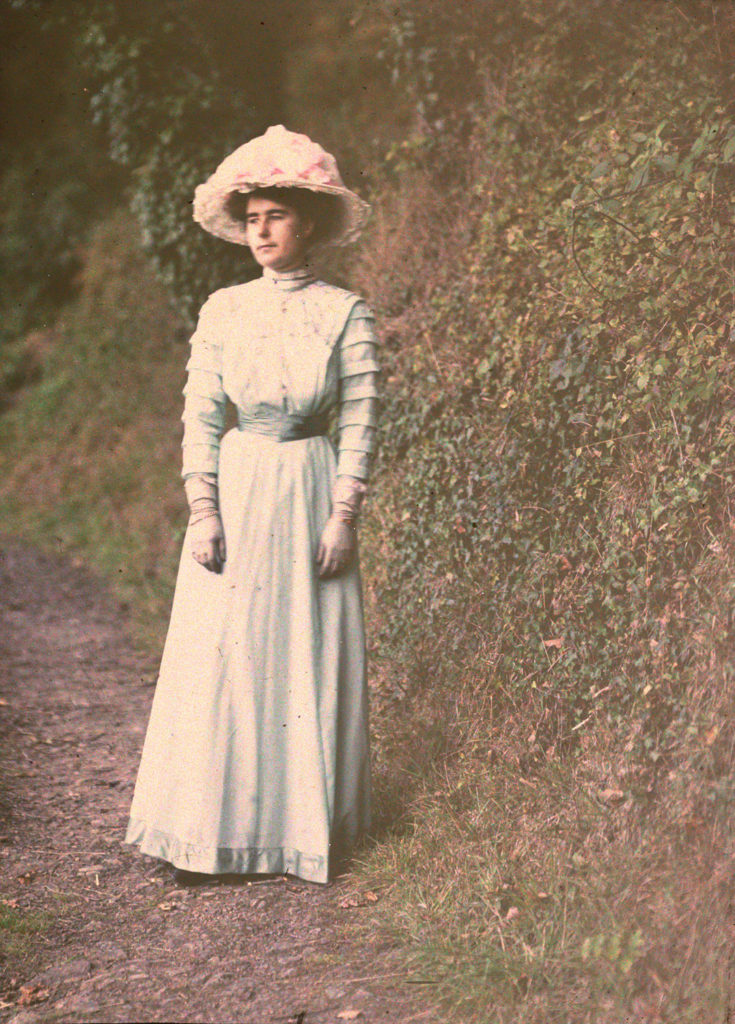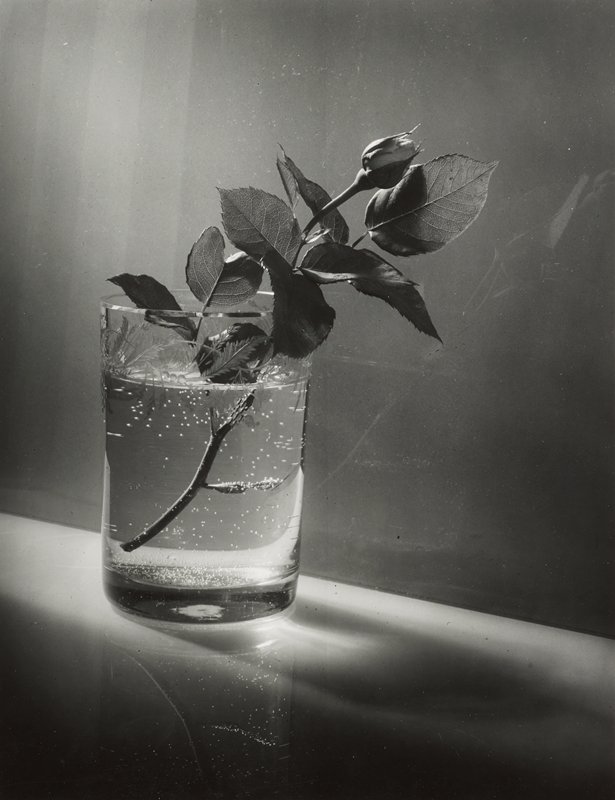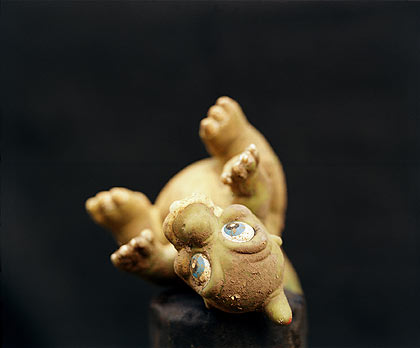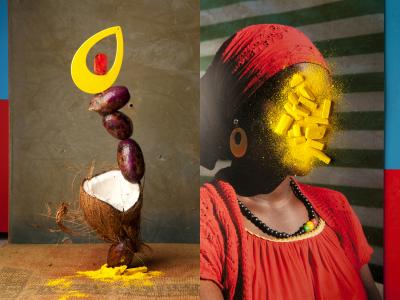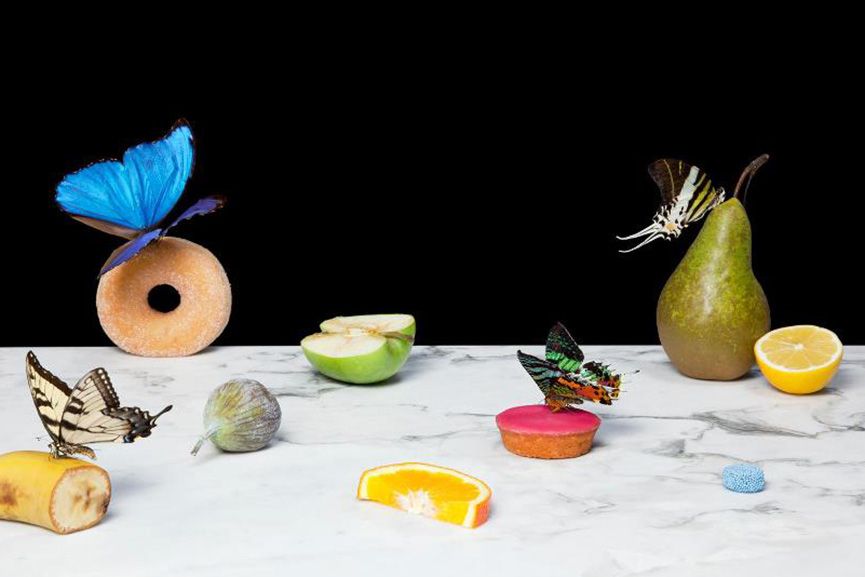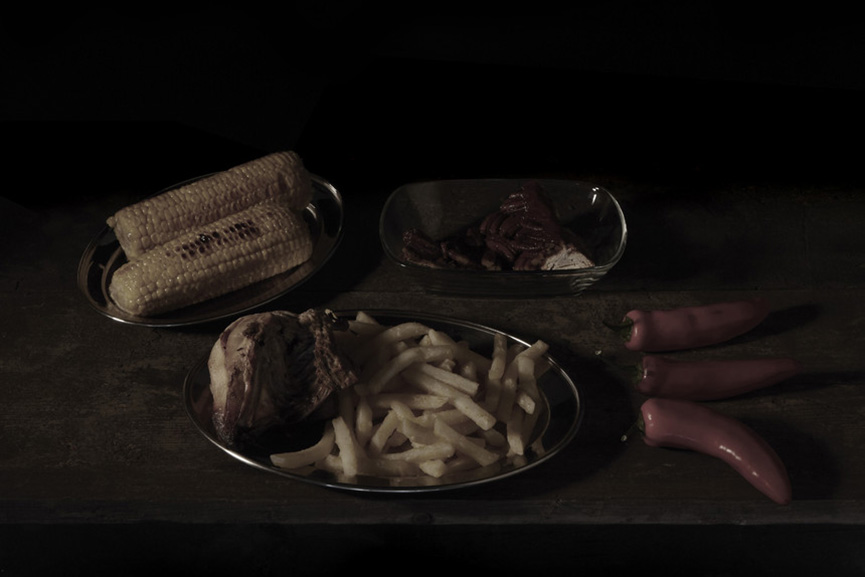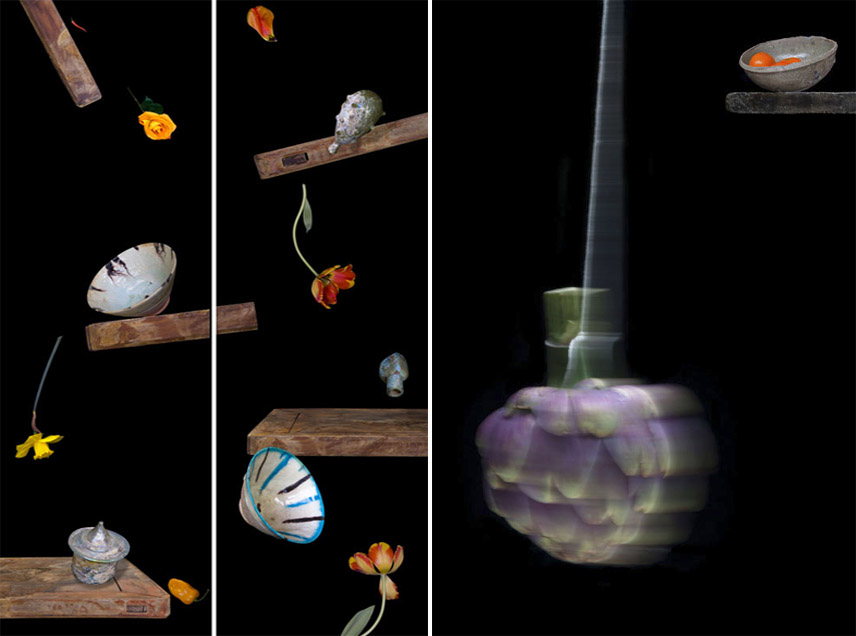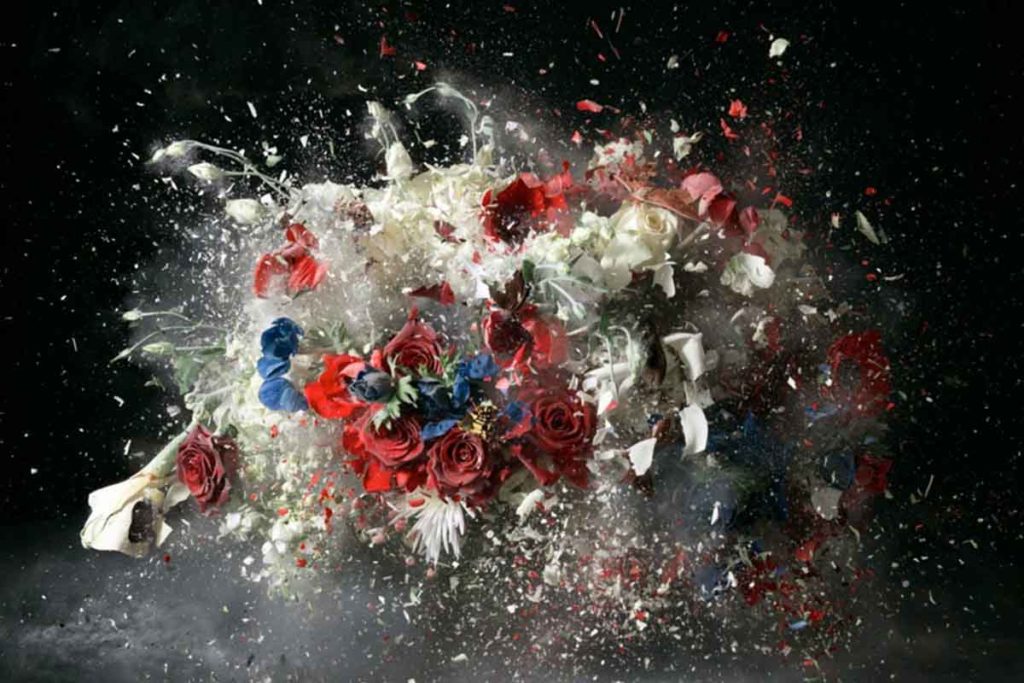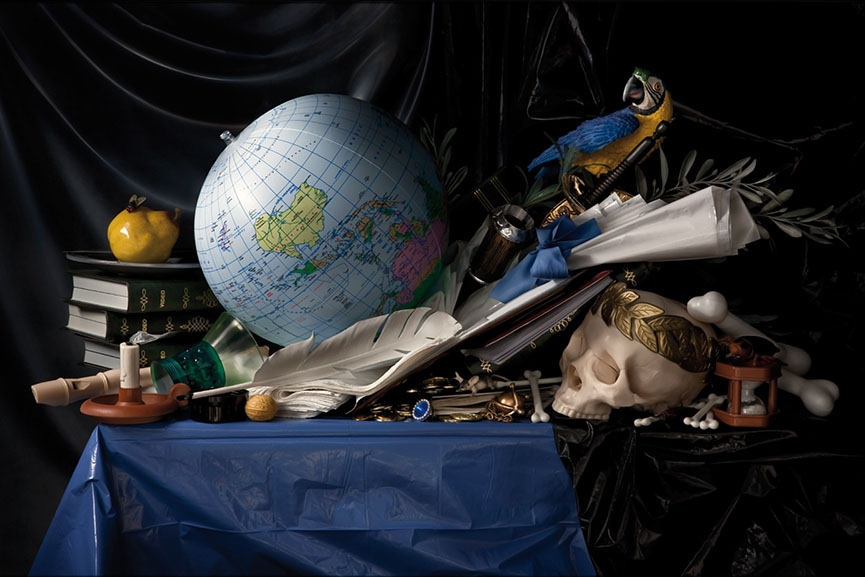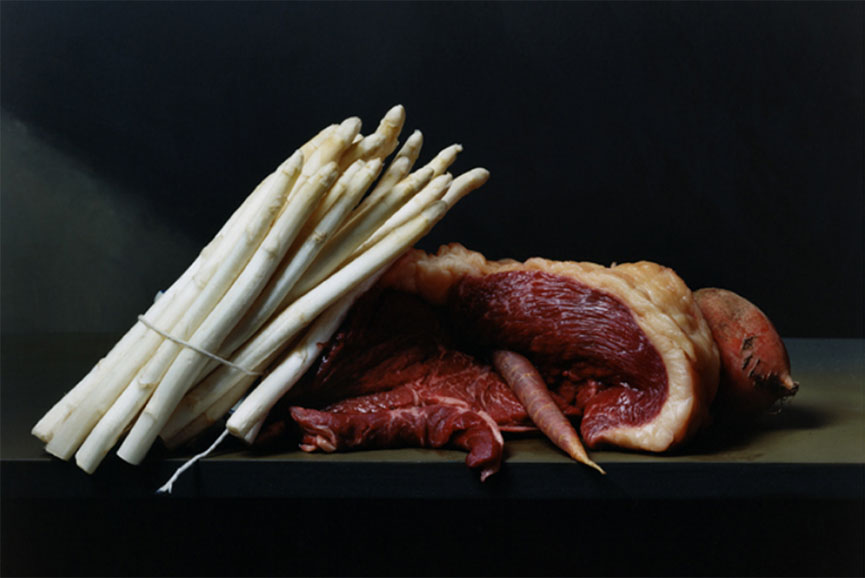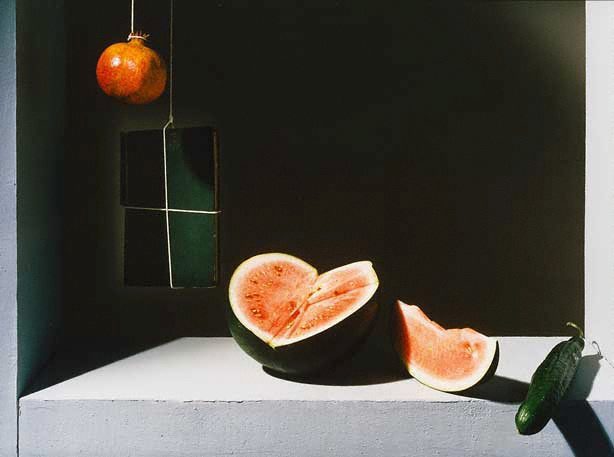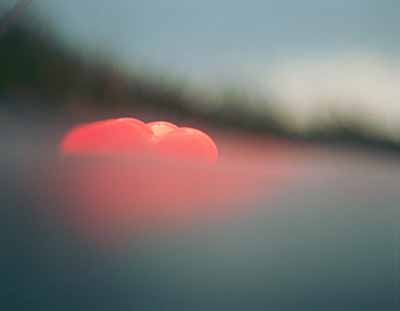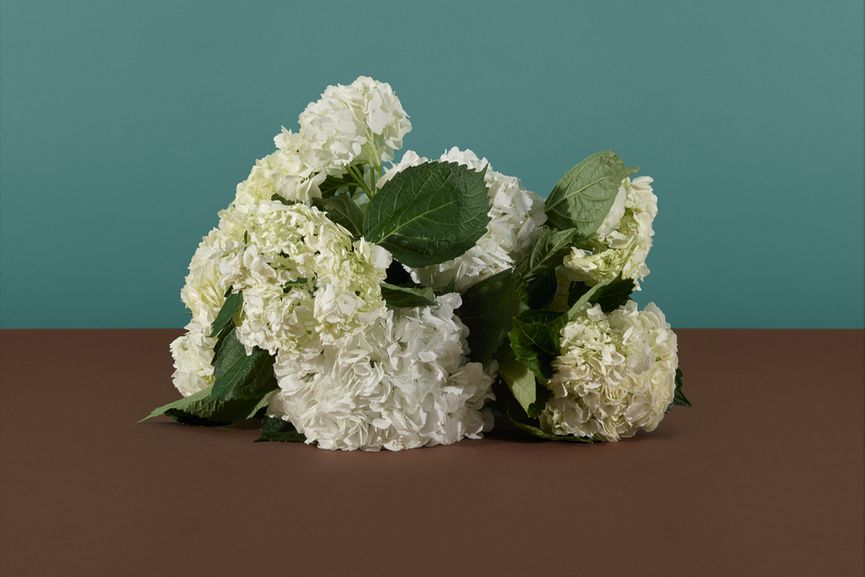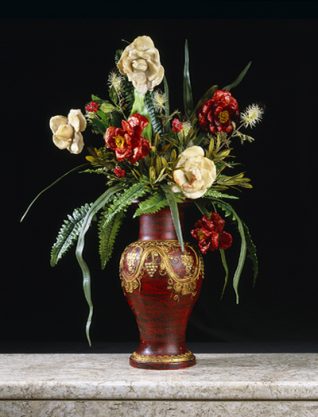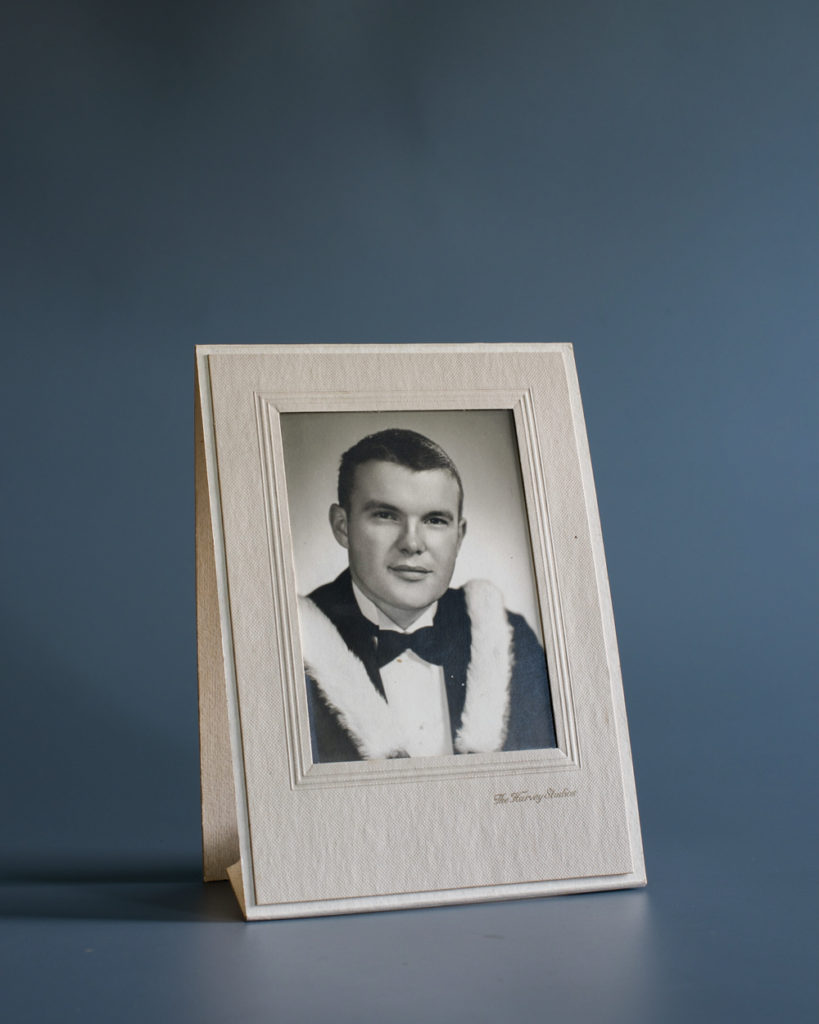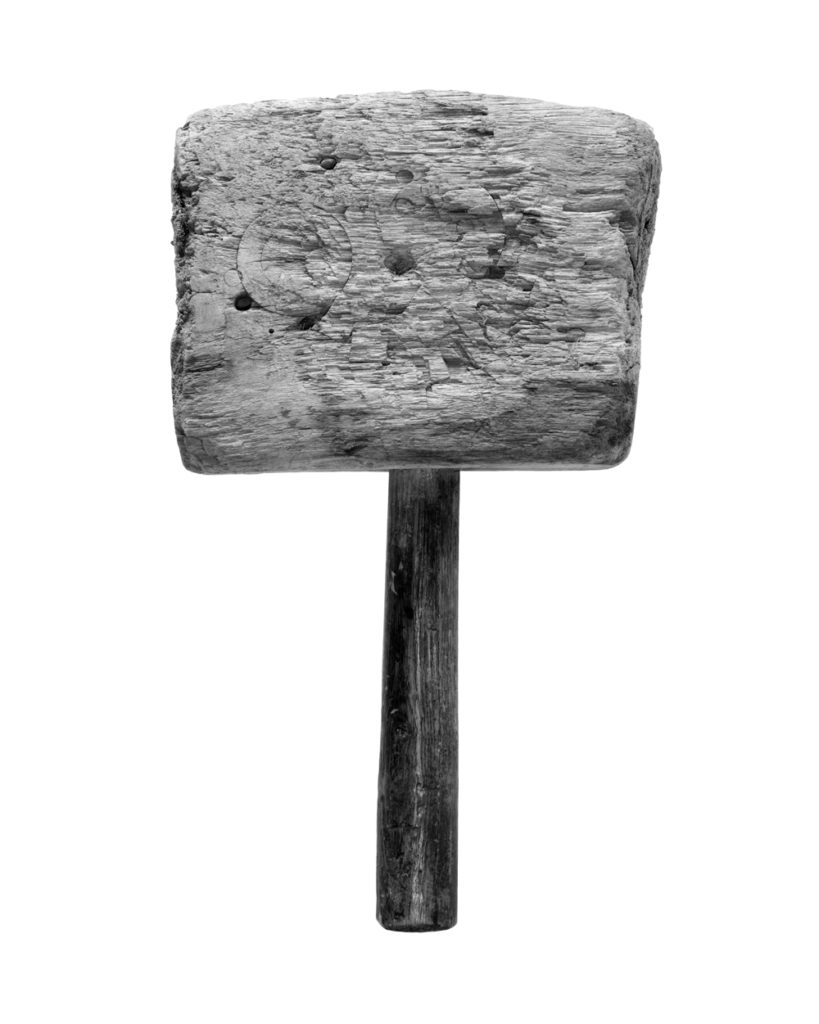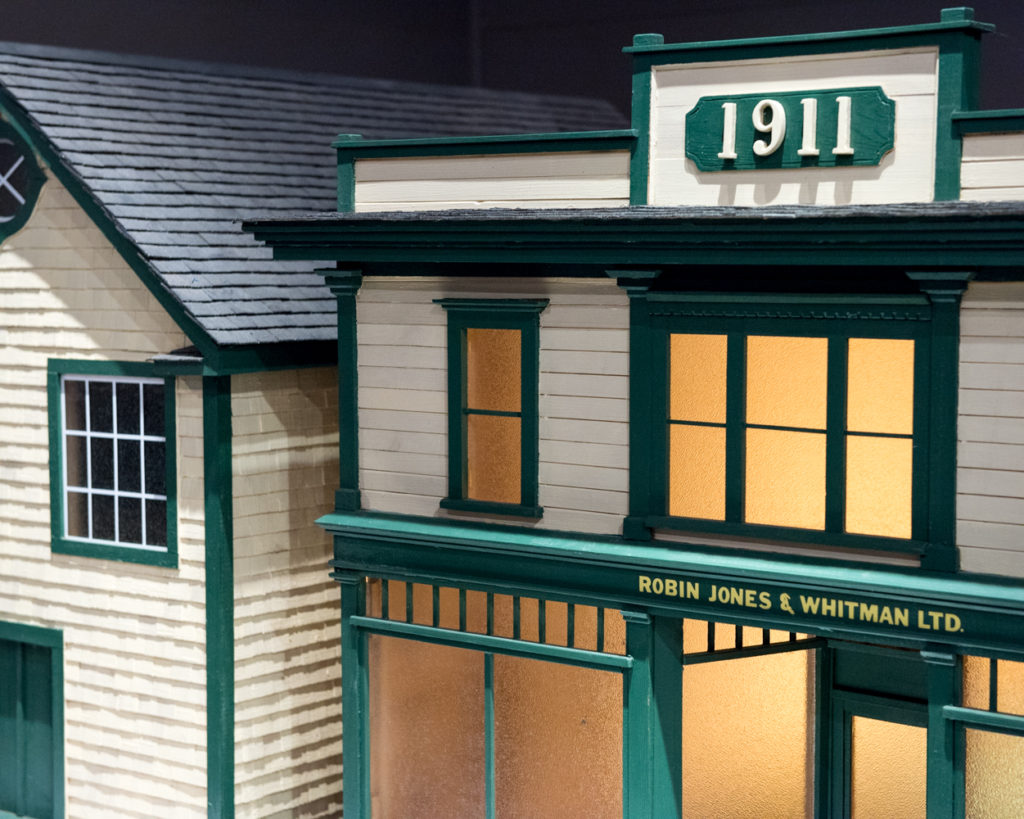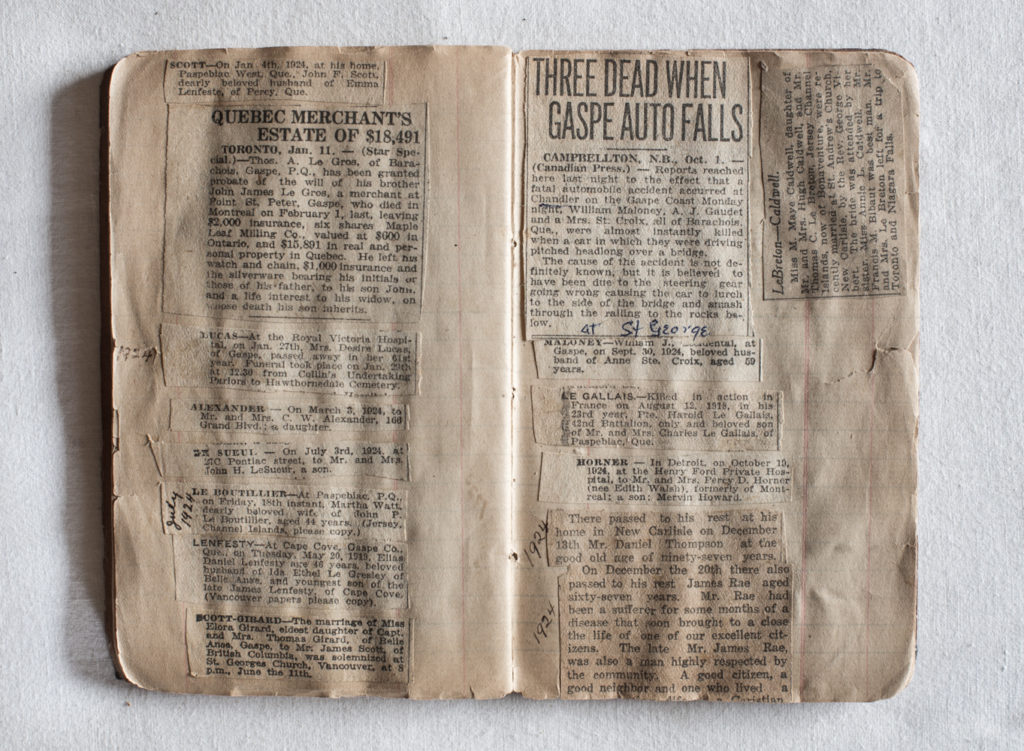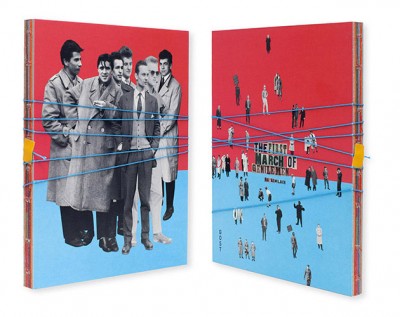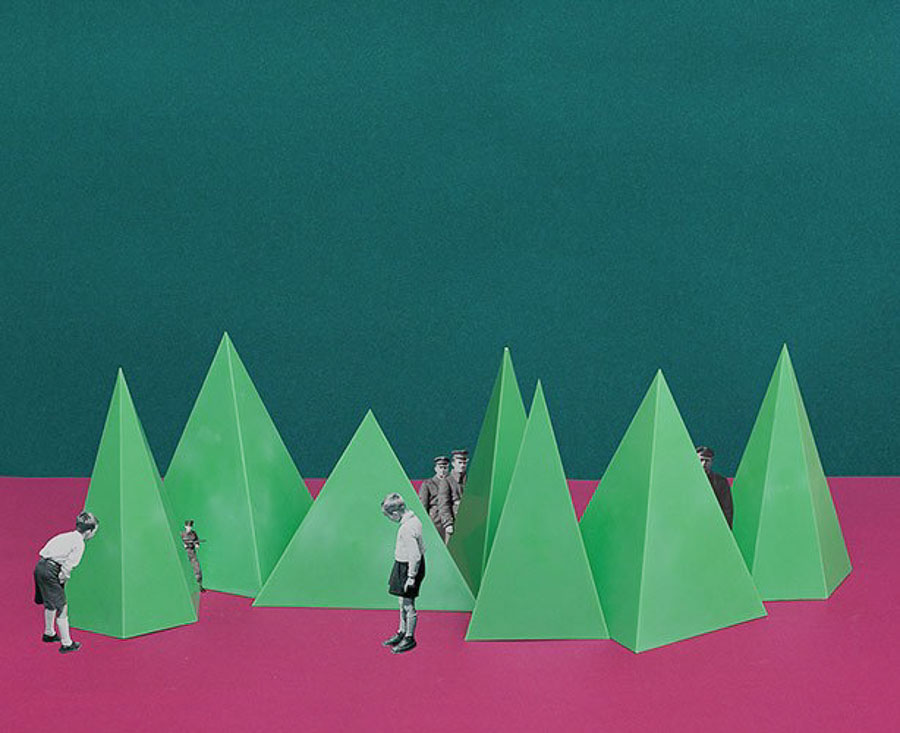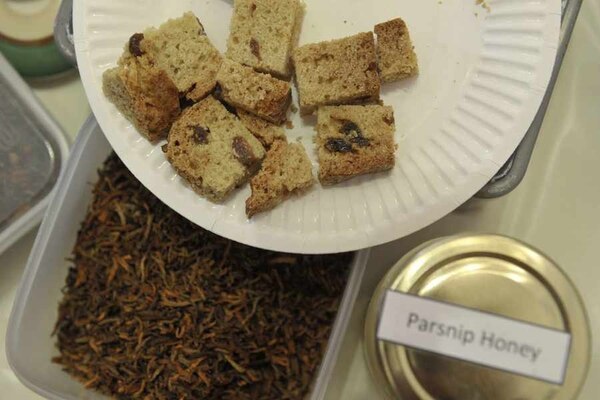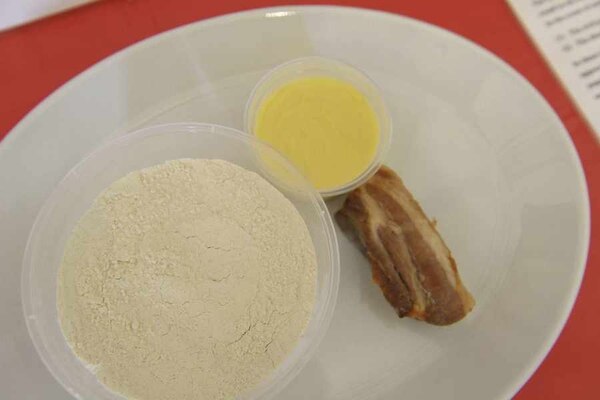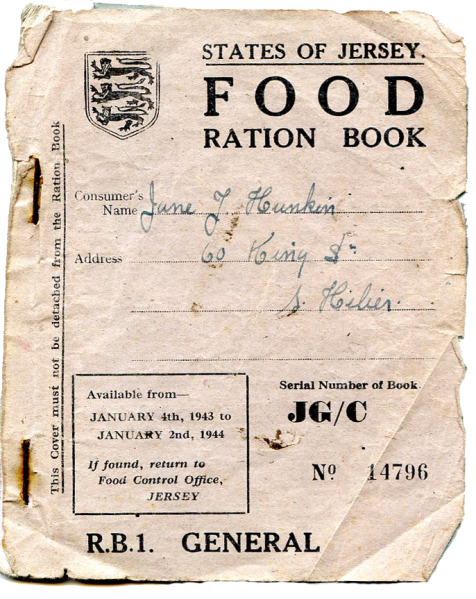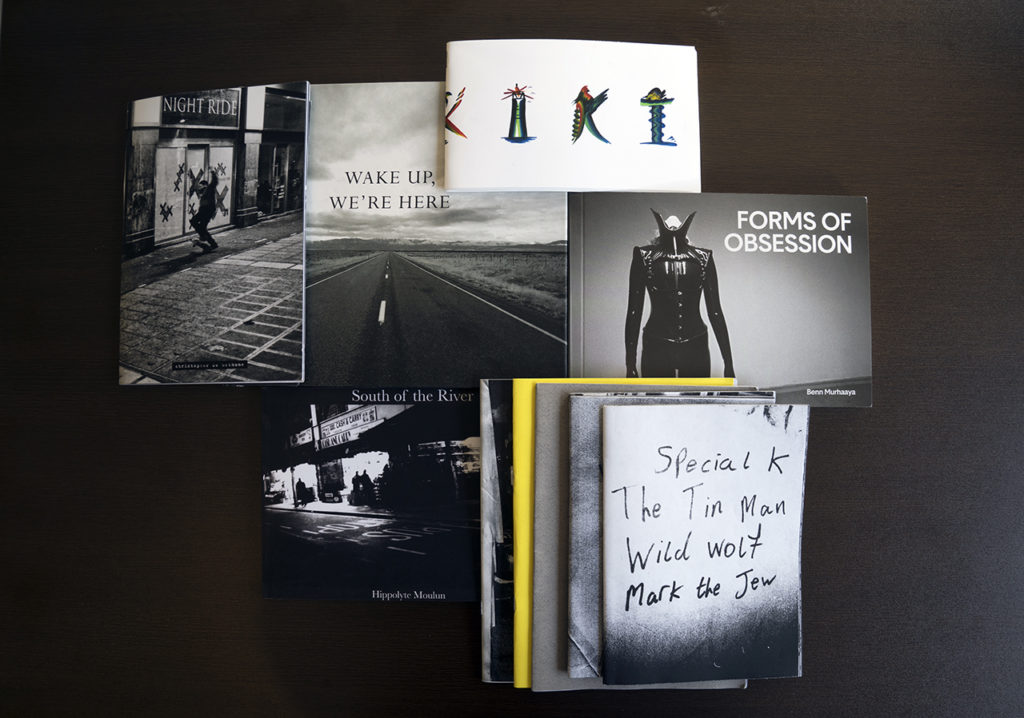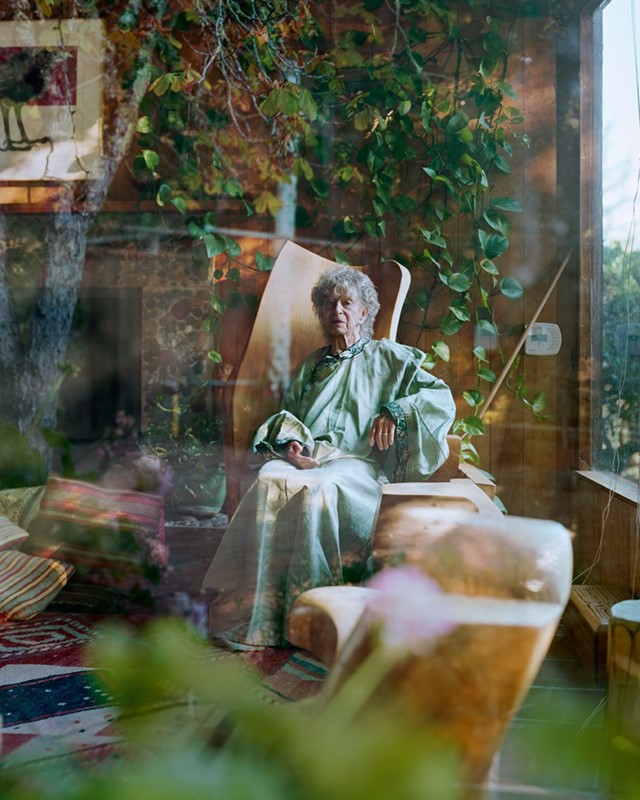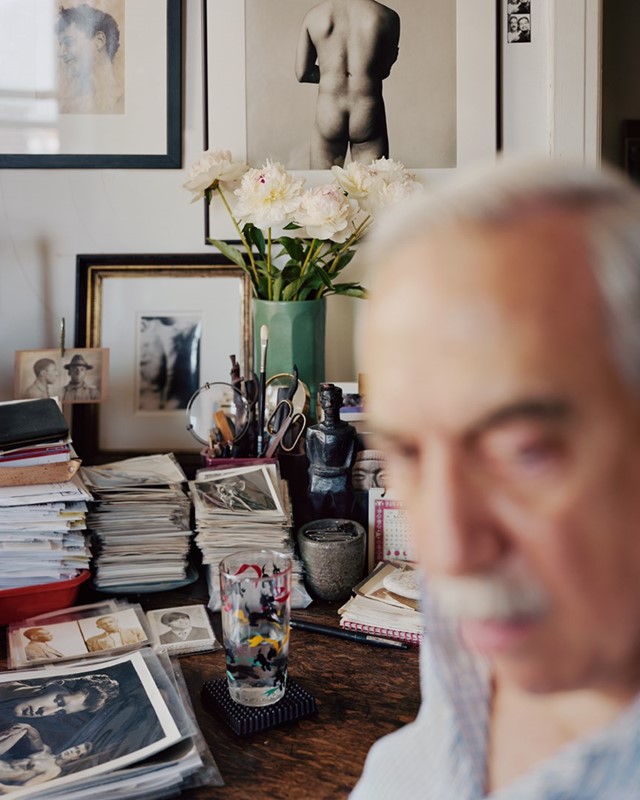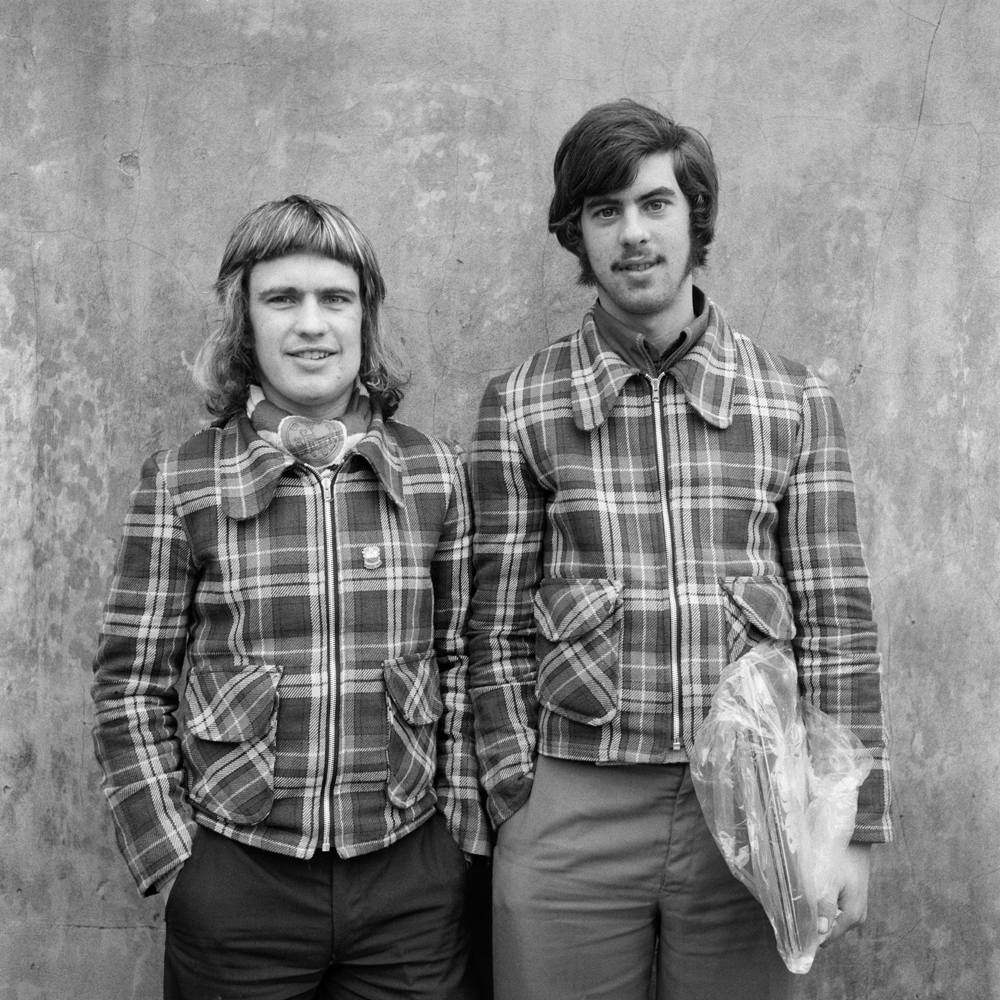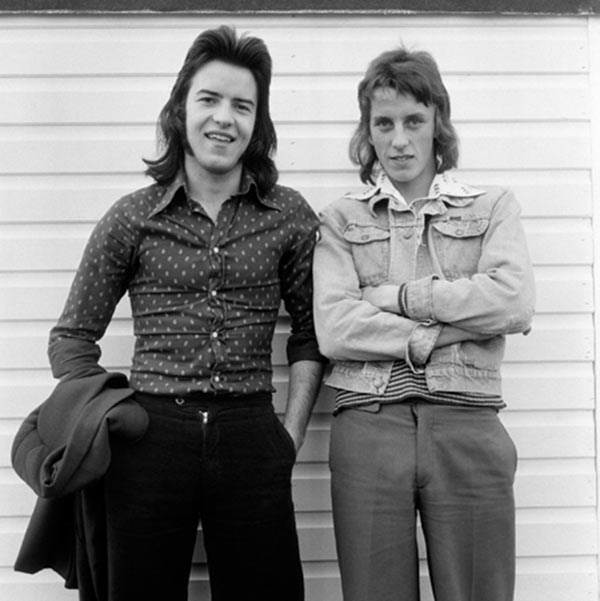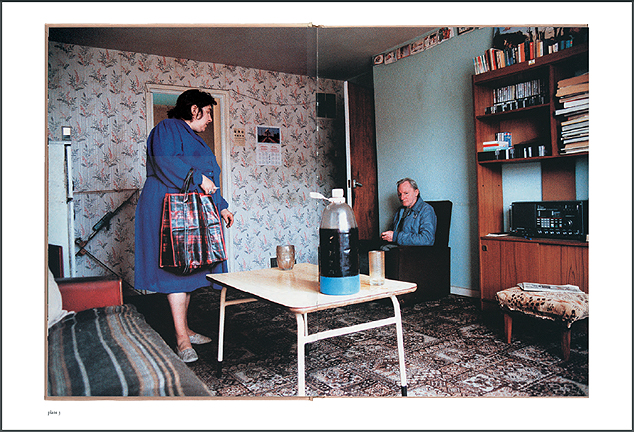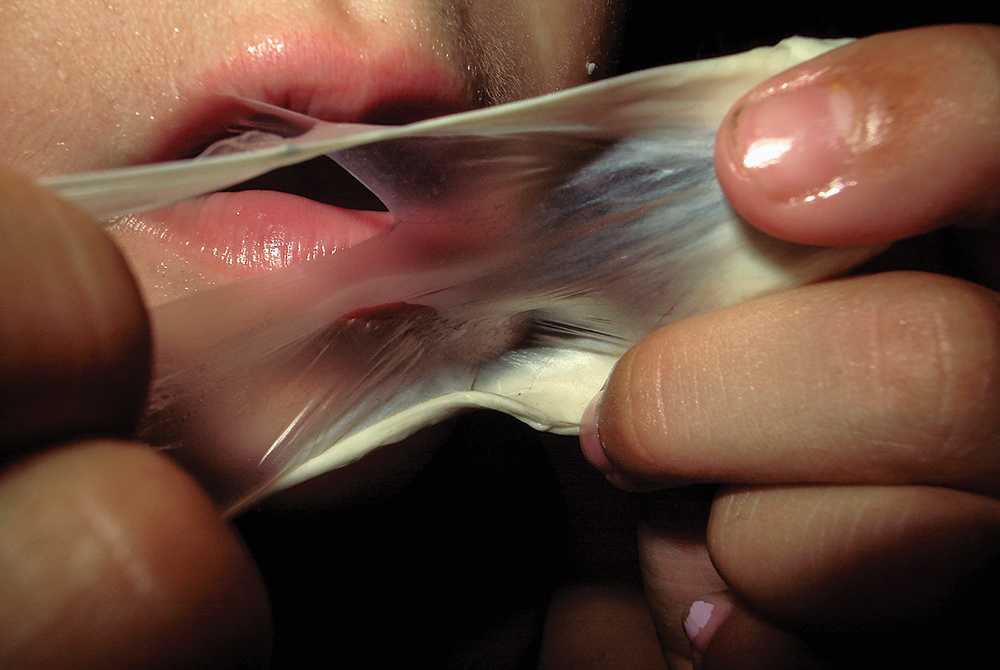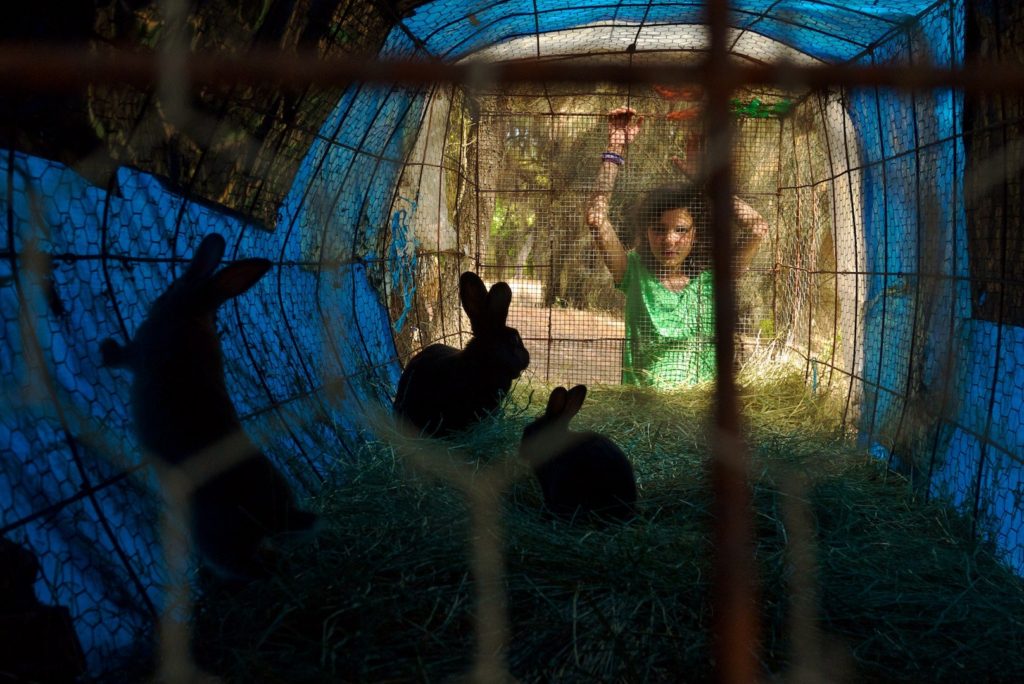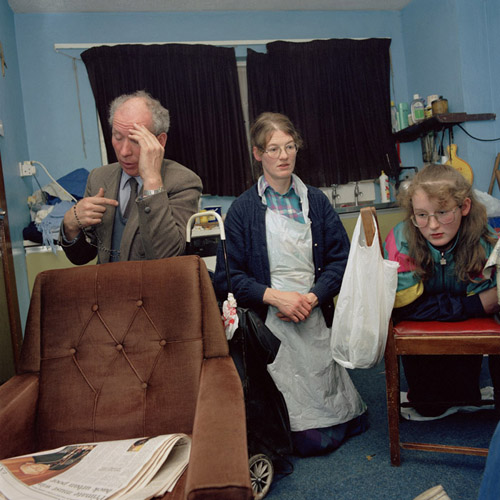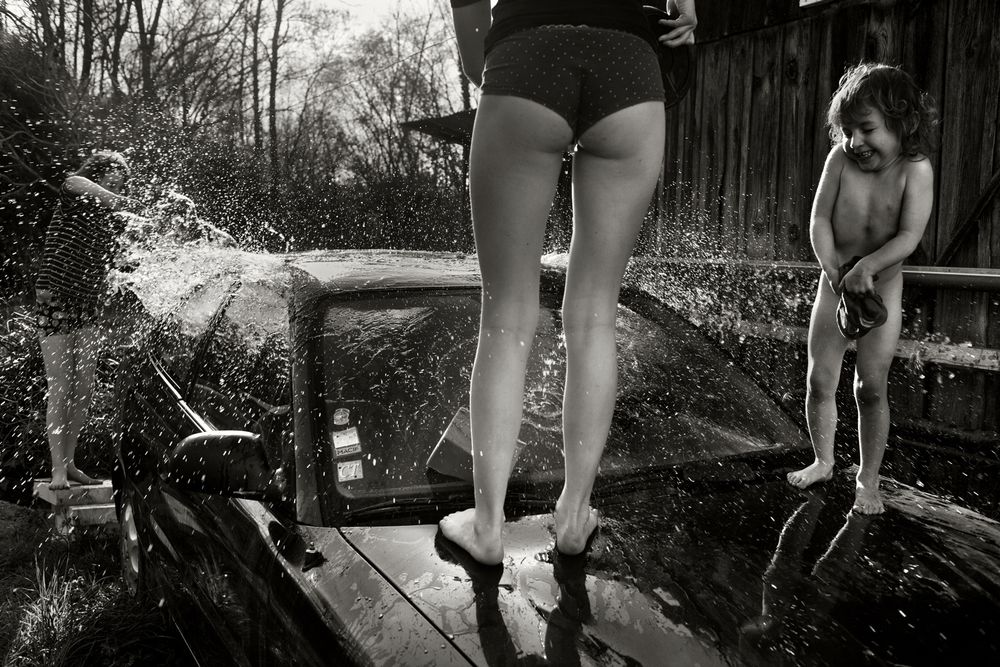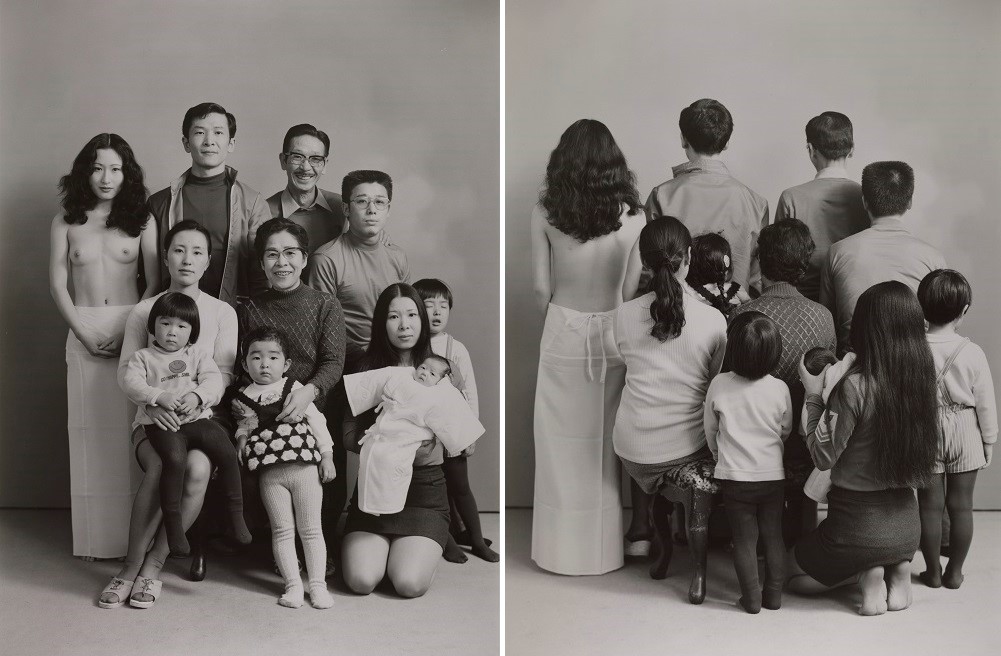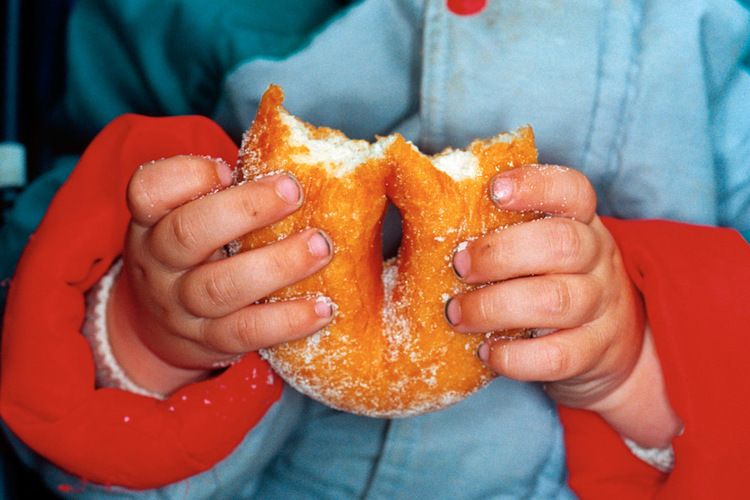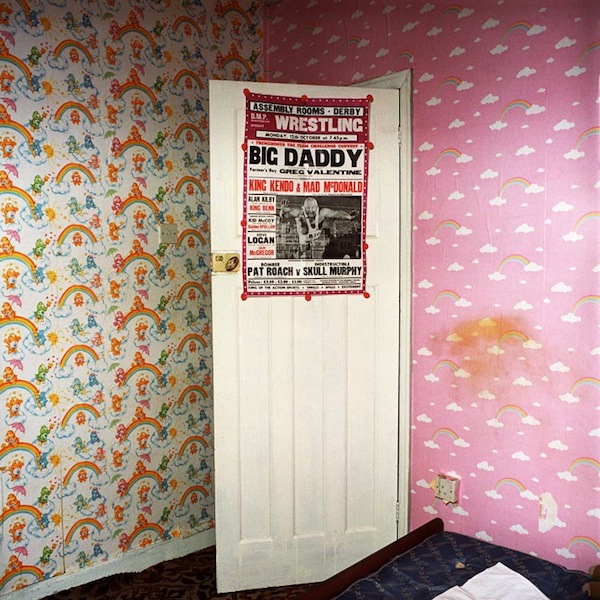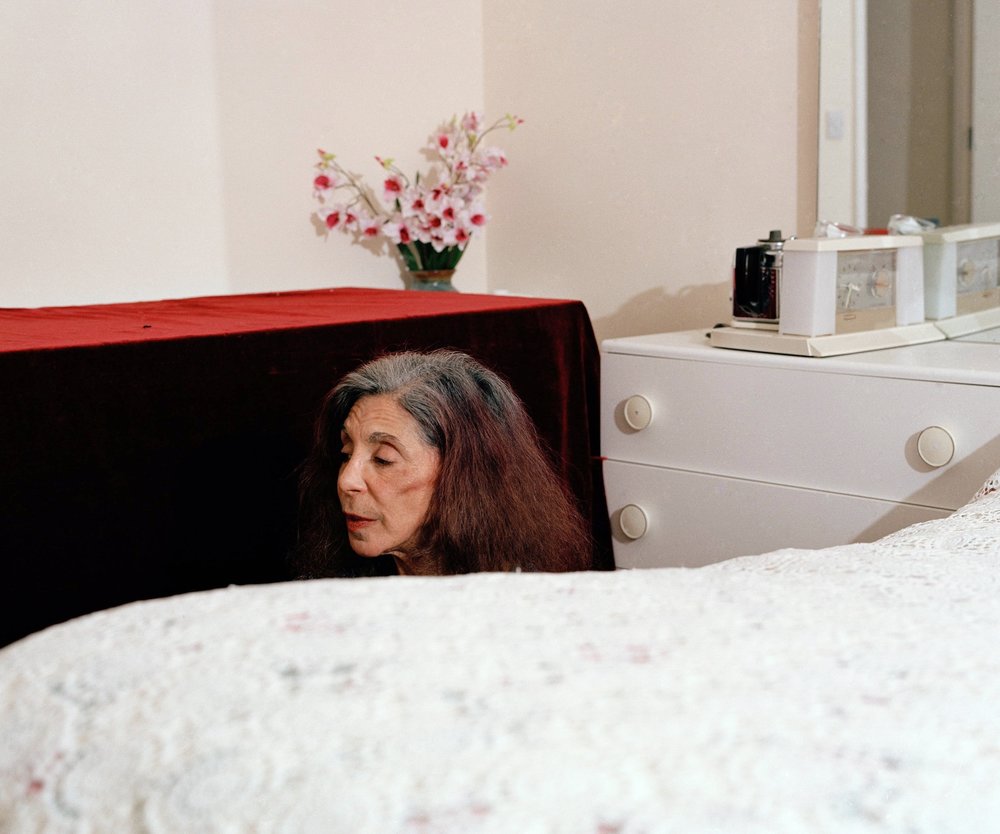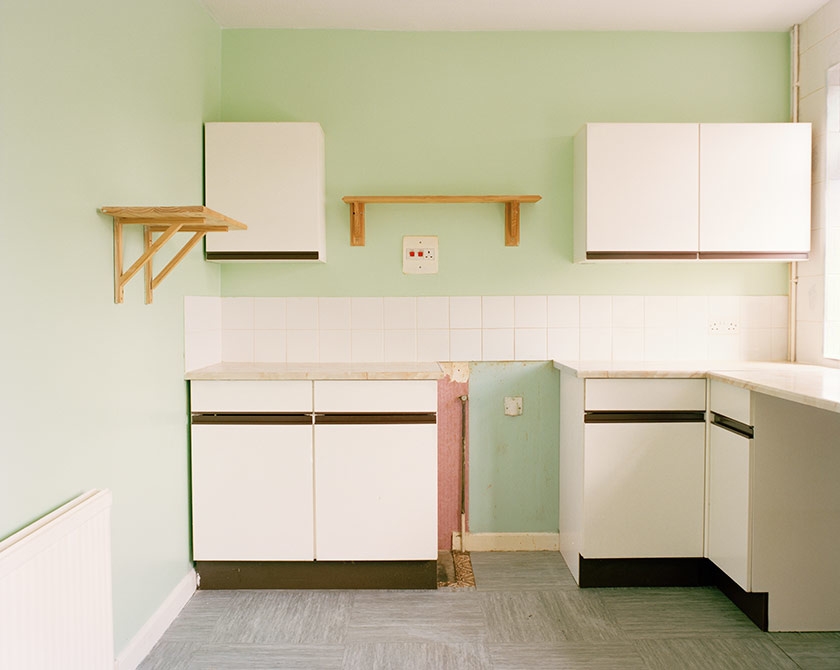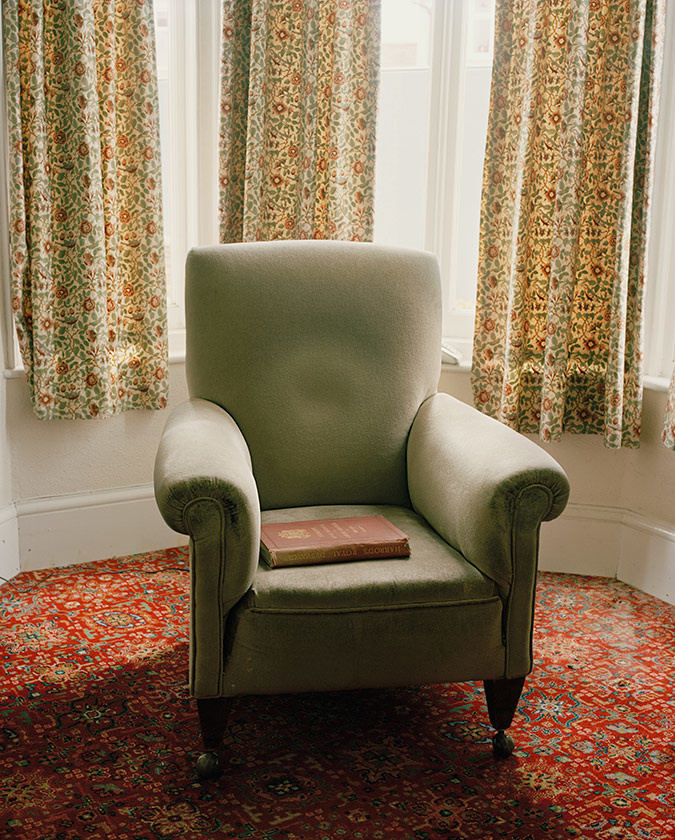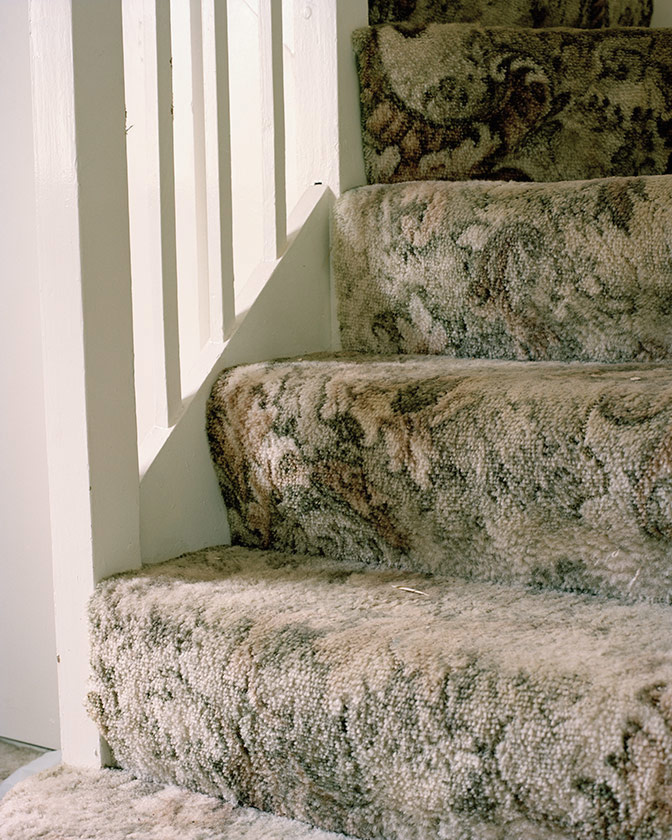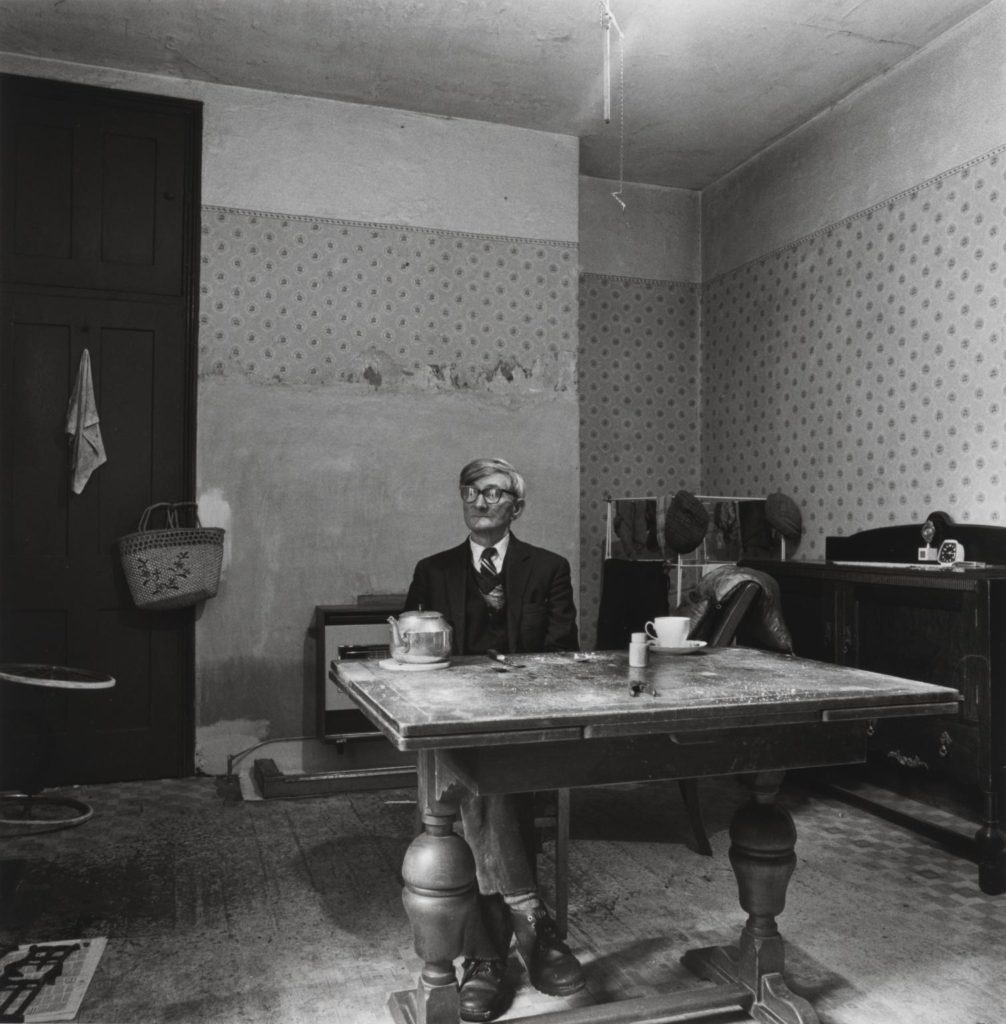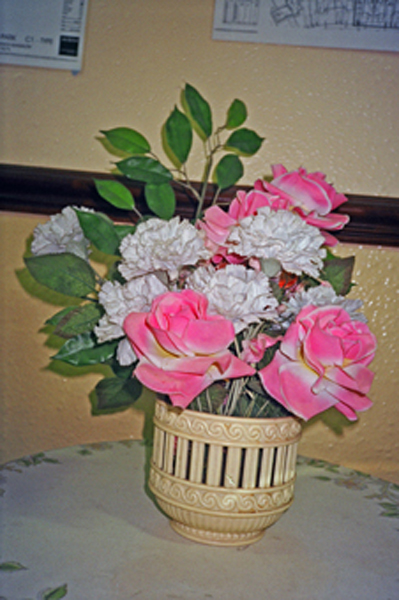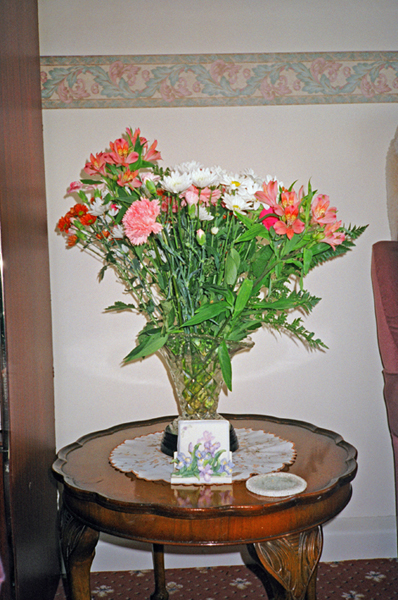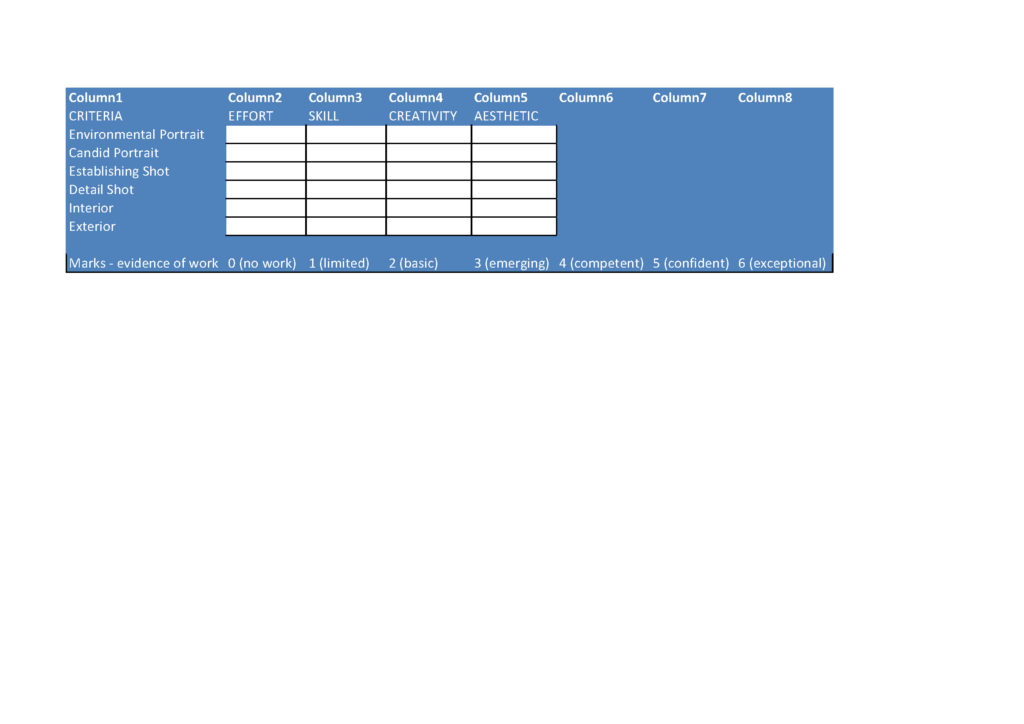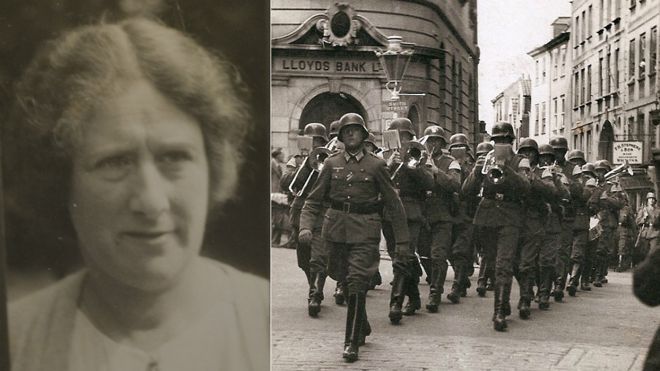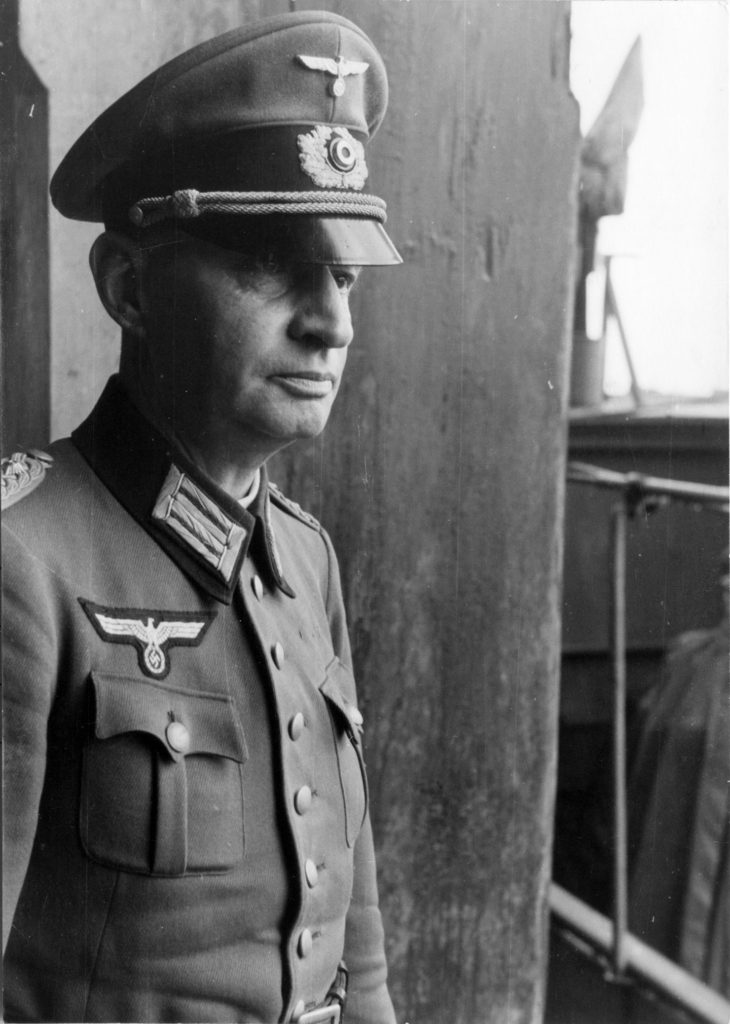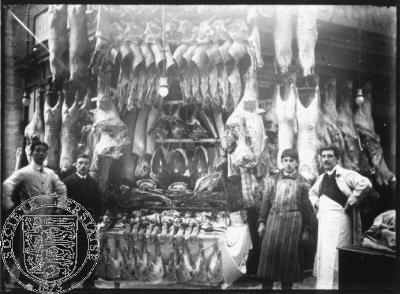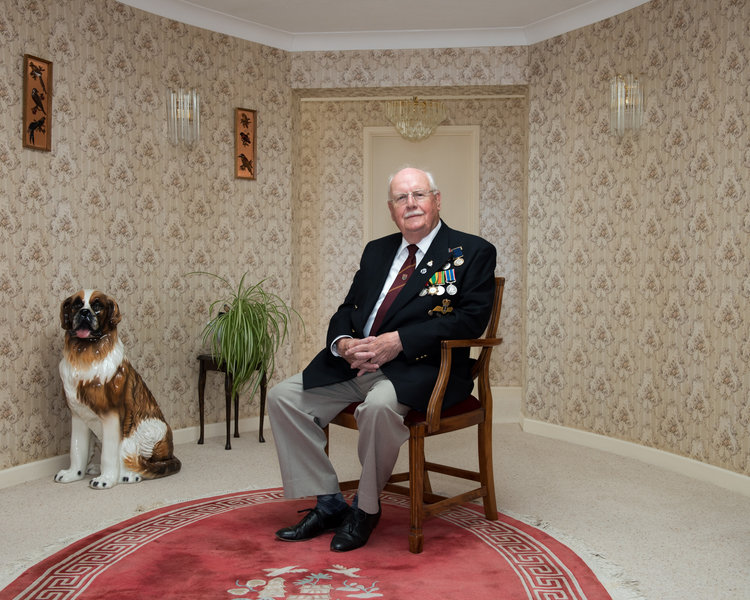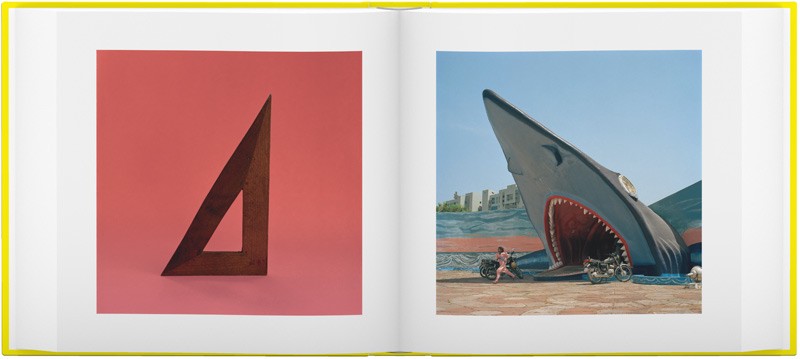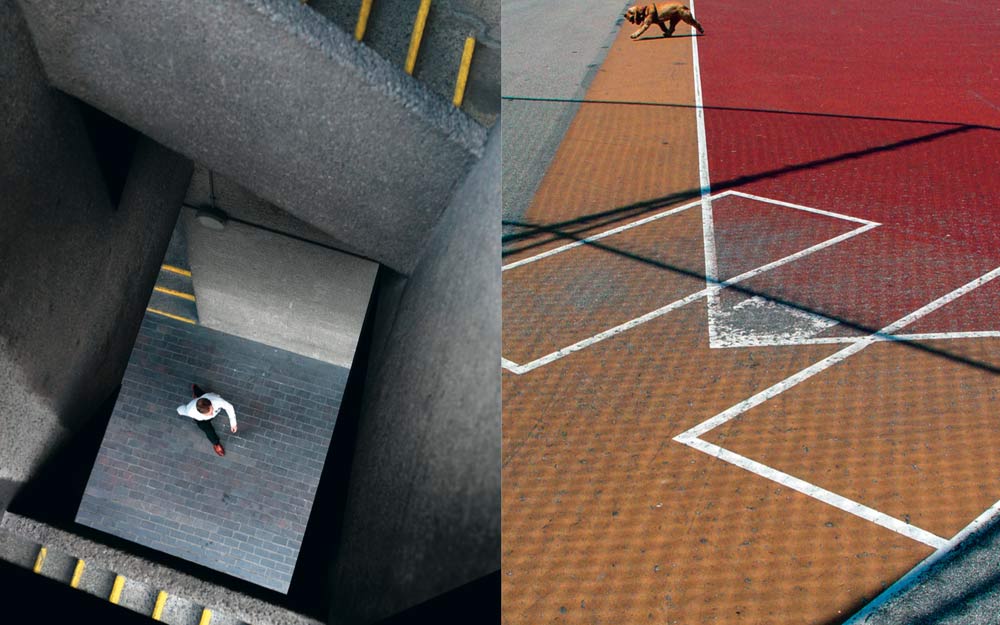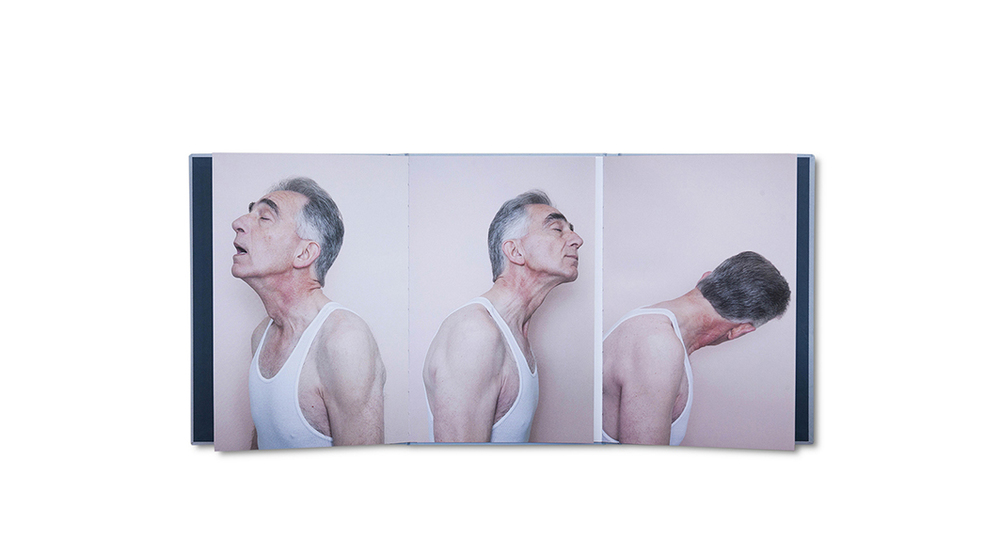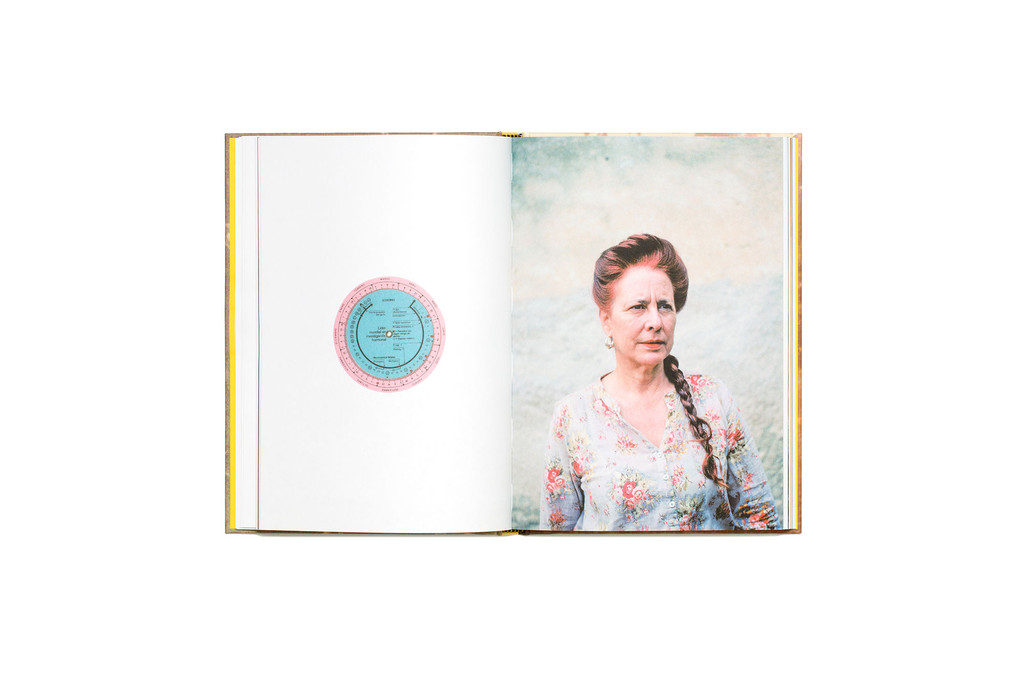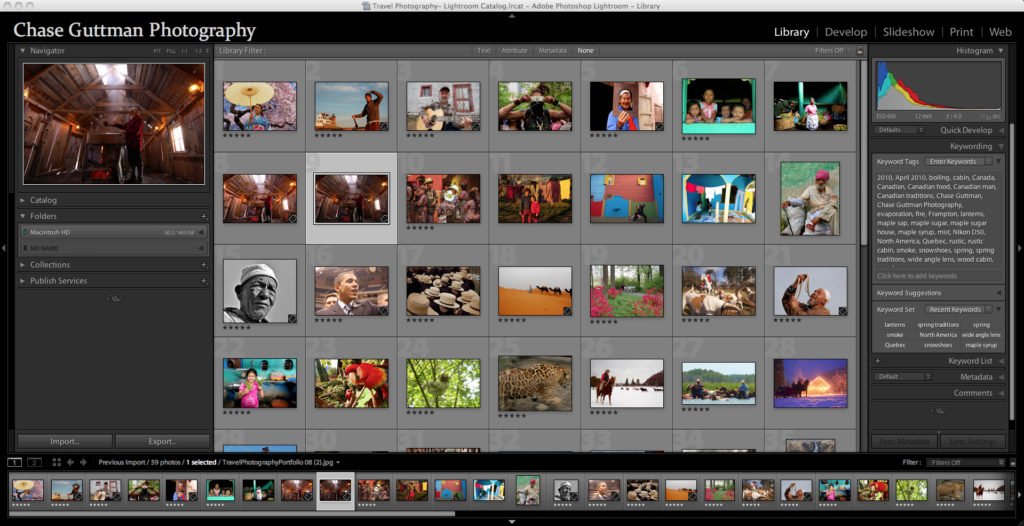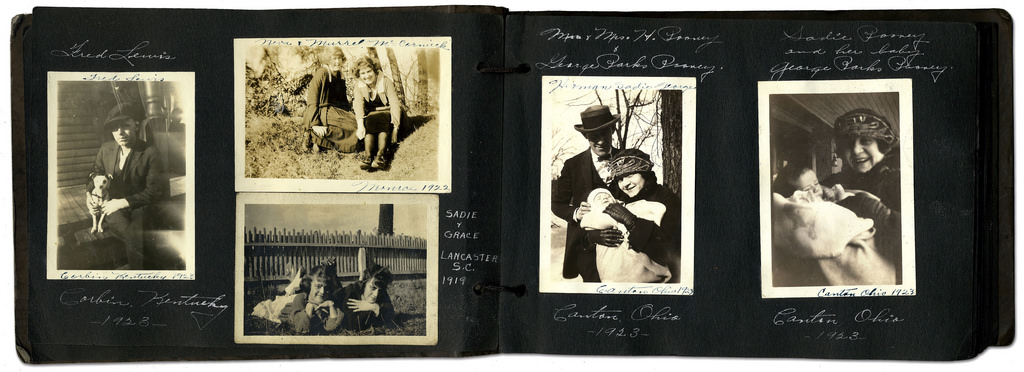Here are examples of excellent Personal Studies from last couple of years from students exploring very personal and mature subjects.
Sophie Marett: Escaping Wonderland
Link to essay: In what way have Robert Darch and Josef Sudek used their photography as a form of therapy?



Within my photobook I want to convey themes of comfort, security and warmth – an ethereal display of locations where I feel at ease within nature and/or areas at home. My narrative will tell the story of my imagination, a dreamlike collection of images in a Pictorialist style that get disrupted by waves of anxiety being represented by darker colder images. My narrative will consist of juxtapositions, comparing the feeling of unease to instant comfort – the photobook will be a journey through ‘Wonderland’ (representing a world where anxiety is calmed but reality isn’t quite real, certain comforts may feel a little too perfect). With landscape images being broken up by still-lives of flowers and objects, it is as if this perfect world of calm and tranquillity is breaking down to reality; escapism can only be a comfort for so long before reality hits.
Read more on her BLOG
Olivia Mooney-Griffiths: Manufactured Memories
Link to essay: In what way are family photographs extensions of our memories as well as our identities?



My photobook narrative will present the story of how my grandparents put their family first and worked hard to provide them with a comfortable life. This photobook will use both old and new photographic images to retell the stories that are often not mentioned in my family, such as the dedication of my grandma to help bring up my grandad’s siblings after their parents moved away, as well as my grandad’s tireless work ethic that persisted through various economic struggles. It will also touch on my family’s Mancunian roots and their move from there, for my grandad’s job. In essence, this photobook is a form of appreciation to the older generations in my family for the comfortable life and opportunities they have proved me with, as well as celebrating our strong bond and love for each other.
Read more on her BLOG
Matthew Brown: Bouley Bay
Link to his essay: How can photography capture and explore an environment, and accurately record it’s atmosphere to a viewer?


My idea is to make a photobook in which I explore the area Bouley Bay, overall I want to capture the activity, views, and close ups of key feature such as rocks, shells, heritage, the hill climb, and the bay. I could also look into the history of the bay and the Jersey Folklore, involving the Black Dog. It is important to me as I grew up in that area, and have many memories of it. And I hope to capture it in the same way in which remember it. I wish to develop my project by exploring the bay and collecting lots of objects to photograph in a studio, and also to take long exposure, aerial, and underwater of the bay, as I have been inspired by many photographers, such as, Martin J Patterson (@ mjplandscapes on Instagram), Jaun Munoz (@ drjuanmdc on Instagram), and David Aguilar (@ davidaguilar_photo).
Read more on his BLOG
Bethany Mildren: Inked
Link to her essay: How does Jono Rotman and Danny Alexander use portraiture to represent different identities?

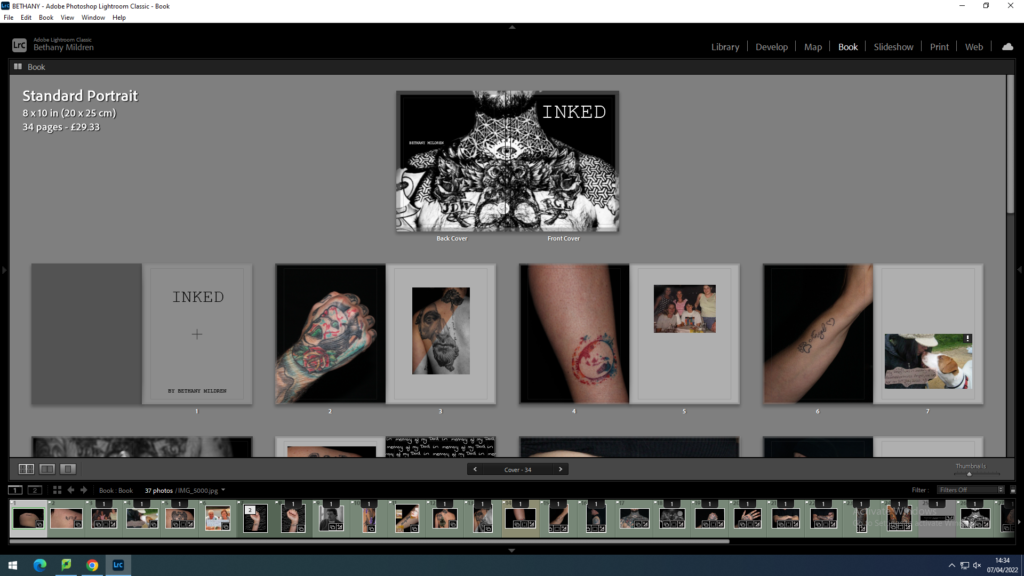
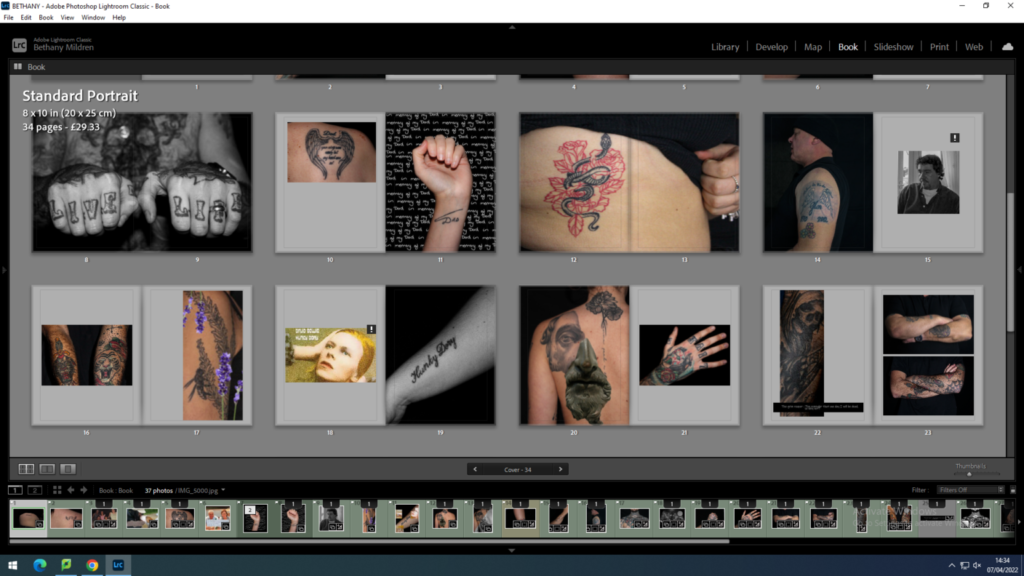
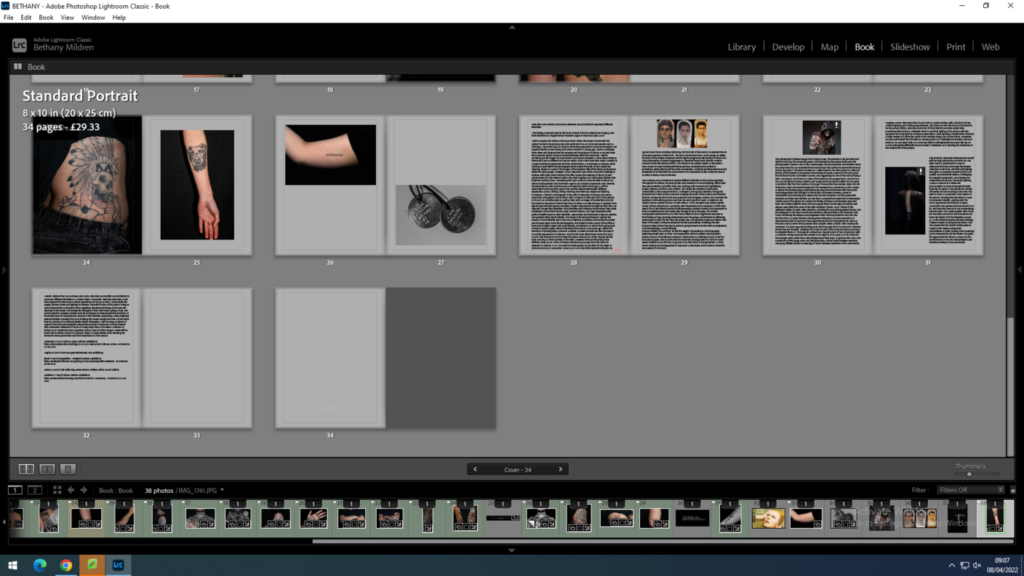
My aim is to explore the question that I have about people’s identity ; How do you present who you are? I wish to dive into the expressive forms of tattooing, the permanence of a part of who you are. Over the year, I have had the continuous stream of questions like ‘Why would you do that to your body?’ , ‘You know that’s permanent right?’ and ‘I could never do that to myself?’. There has always been a stigma around people with tattoos which upsets me as it can be a beautiful artform to express your identity. In this project I will document my friends’ and families’ tattoos and pair the photos with what they mean to them, either a handwritten note from them or an object/photo that ties in with the meaning behind. I’m exited to do more research into this subject matter, including the history and culture values which i can add to my final piece if appropriate.
Read more on her BLOG
Anna Houiellebecq: Inside Out
Link to essay: How-and-why-do-photographers-use-the-human-body-to-physically-express-hidden-emotions (1)
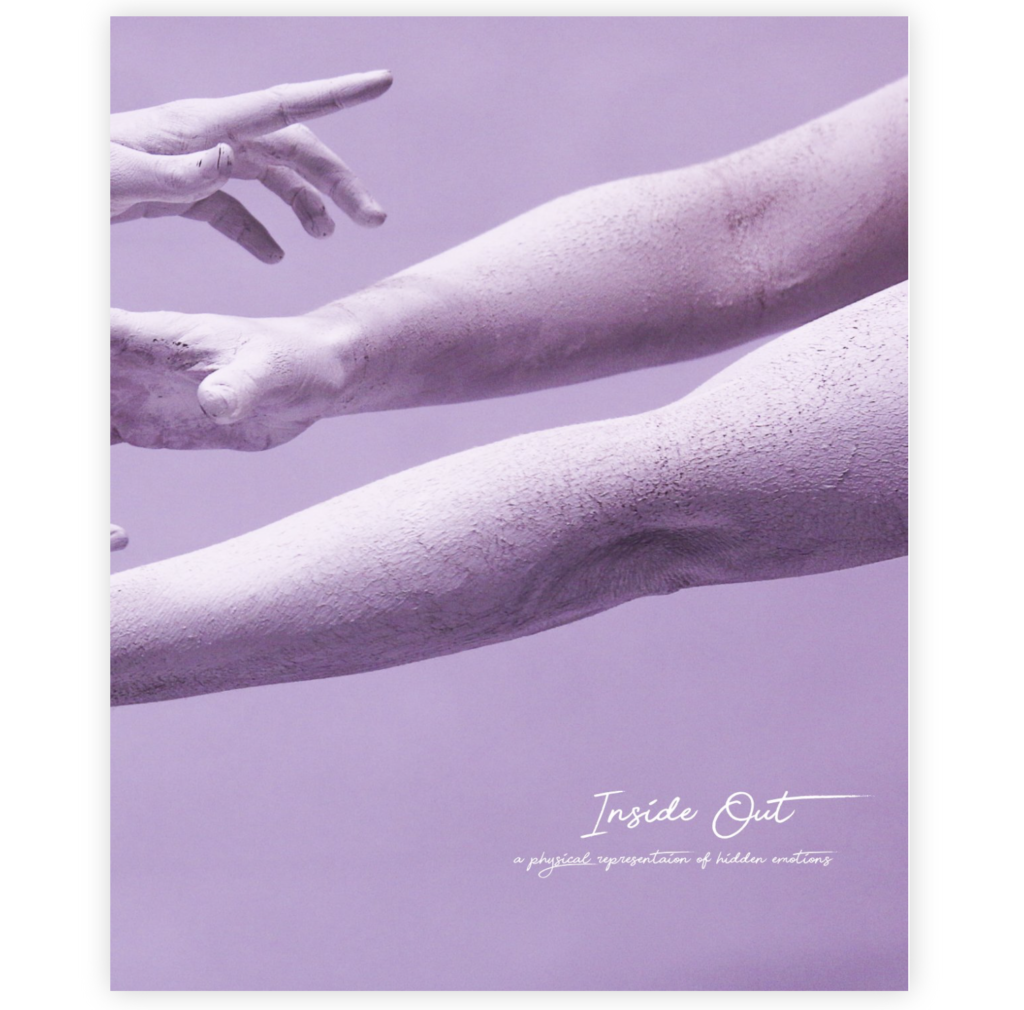
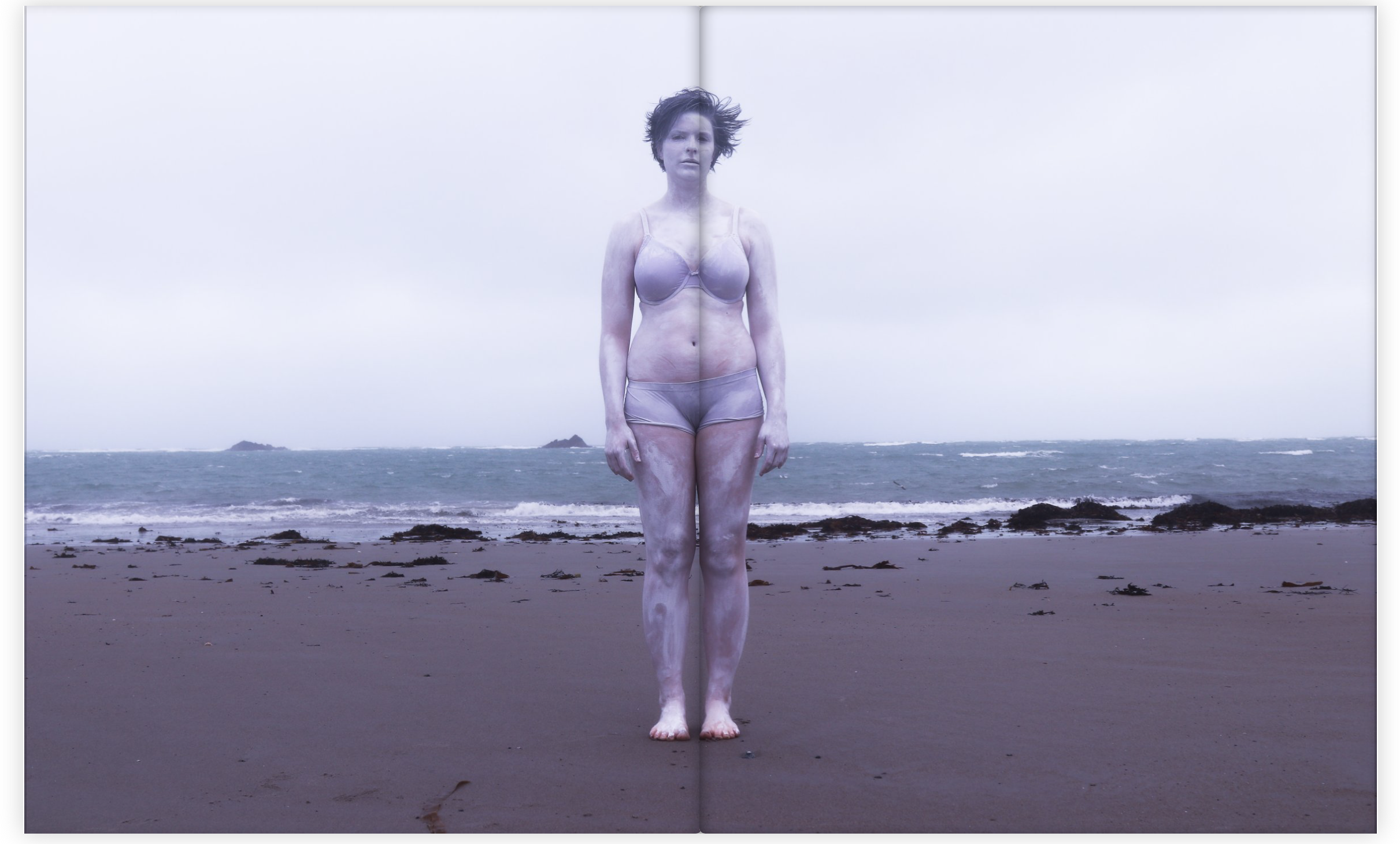
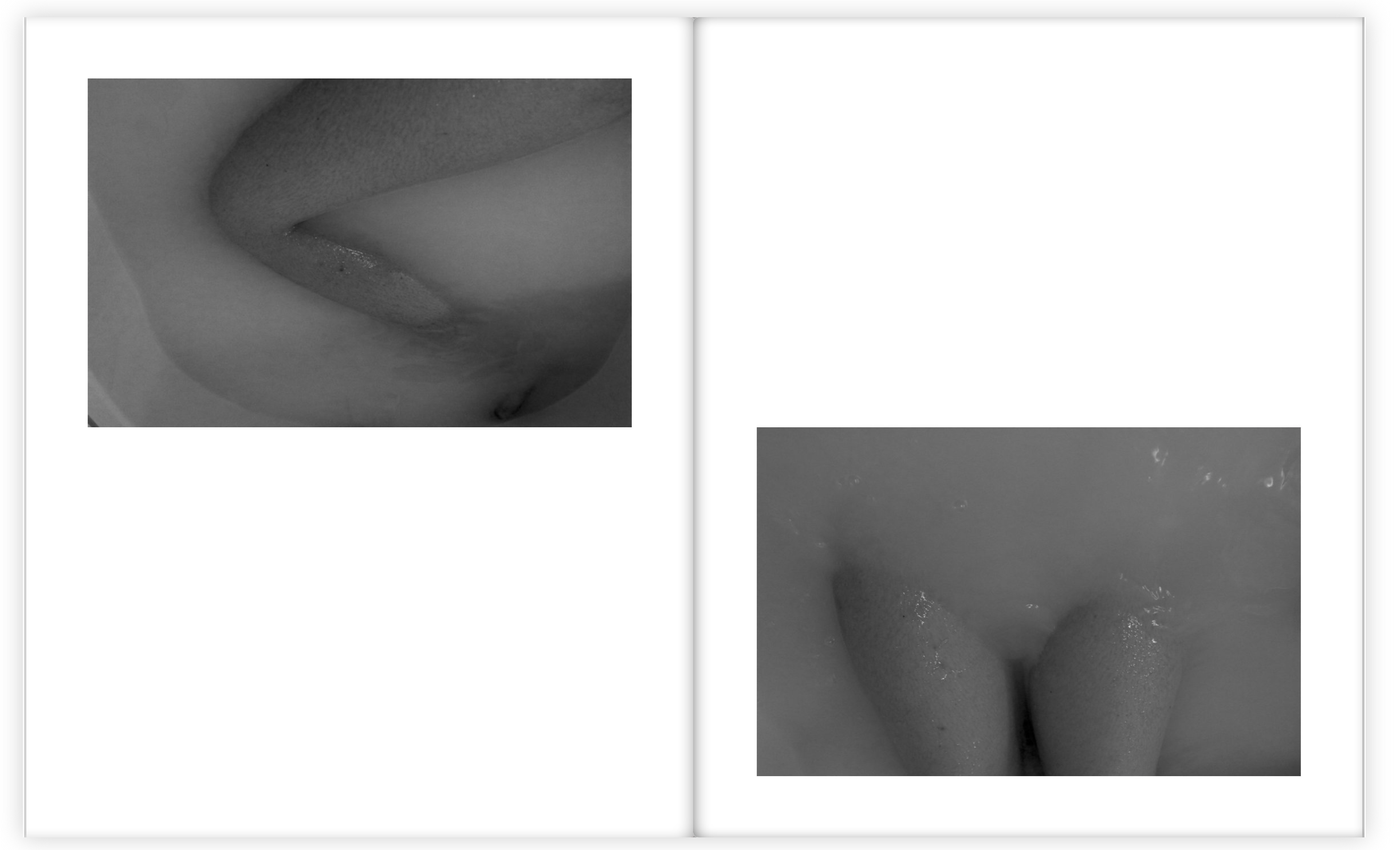
My body image project is about capturing a physical representation of hidden emotions. My book “Inside Out” includes images of subjects posing in a certain way that represents a specific emotion such as pain or happiness. The title Inside Out, concludes what the series is about in a very simple way. The book contains images where I’ve focused on particular body parts, such as the face or the hands. I’ve captured them in a creative way where the shapes and movement that they create represent certain emotions. The book contains a certain aesthetic that flows throughout. It has a very contemporary feel because of the way of using the human body and also the use of the bright colours and abstract visions. The book contains a variation of sizes of images, ranging from half page images to full page spreads. I decided to use a portrait orientation for the book because it was the best way to display my images. Although I didn’t want to categories my images into different sections of the book, I also didn’t want a completely random structure and sequencing. I therefore displayed images together that linked in some way, to do with colour or subject.
Read more on her BLOG
In her exam project Anna produced another photo book, Wabi Sabi.
Here is the Link to the Final version of my Wabi Sabi film.
Read more on her BLOG to learn about her research and experimentation
My book Wabi Sabi is about the freedom of viewing the world in our own unique way. Its about capturing the insignificant details that we would usually ignore or not notice, and appreciating the pure and spiritual elements of the imperfect details of our lives. The Japanese term, Wabi Sabi fully explains what the series is about in a simple way. The definition of the term, “a way of living that focuses on finding beauty within the imperfections of life and accepting peacefully the natural cycle of growth and decay” concludes the project well. Throughout the book I focus closely on the tiny details of objects and scenes that we witness all the time. An example of scenes that I’ve included is the Sky at evening time, and the movement of the sea. Within these scenes Ive focused on and framed particular elements that interested me. My aim was to fragment specific details that were insignificant yet beautiful.
Jude Luce: All My Love



My plan for my photo book is to produce a detailed and insightful exploration into my family life, with me centered within the middle. This is the running theme throughout and I hope to show it through poetic, still images of landscapes or objects which may have no direct meaning at its face value but has a deeper meaning once inferred. As well, the portraits in my project are intended to be collaborative and intimate to show the relationships I hold with the people in my life but the portraits are intended to show the emotion of each being as well. I have contrasted yet shown the similarities of my mum and dad’s relationship when they were together to that of my relationship with Lucy now and the overall look I hope to achieve is that of a fun, vibrant, light-hearted but quite solemn and sombre image-based diary about how I am still developing through the events if life and the attachments I have built from the event which shaped my life – my mum and dad’s divorce. I want their to be an obvious existence of the theme of attachment but also an underlying theme of detachment. Although these themes are the main focus for my book, they are underlying themes which are subtly hinted at every now and then by a sequence which develops upon the understanding of love. Memory is fragile and I use this notion as a driving force for my project made up of diaristic photographs, which, when come together, create an album of moments in time which in-turn lend themselves to never be forgotten. I have attempted not to avoid the subject of my mum and dad’s divorce but felt it easier to express this and my feelings towards it through other subject matter, being my relationship with my girlfriend and the other people in my life, such as my individual relationships with my mum and dad and how I view them in solitary opposition to one another.
Read more on Jude’s BLOG
Harrison Cummins: Over The Fence
Essay: How do photographers Doug DuBois and Robert Clayton represent social divisions in their work?


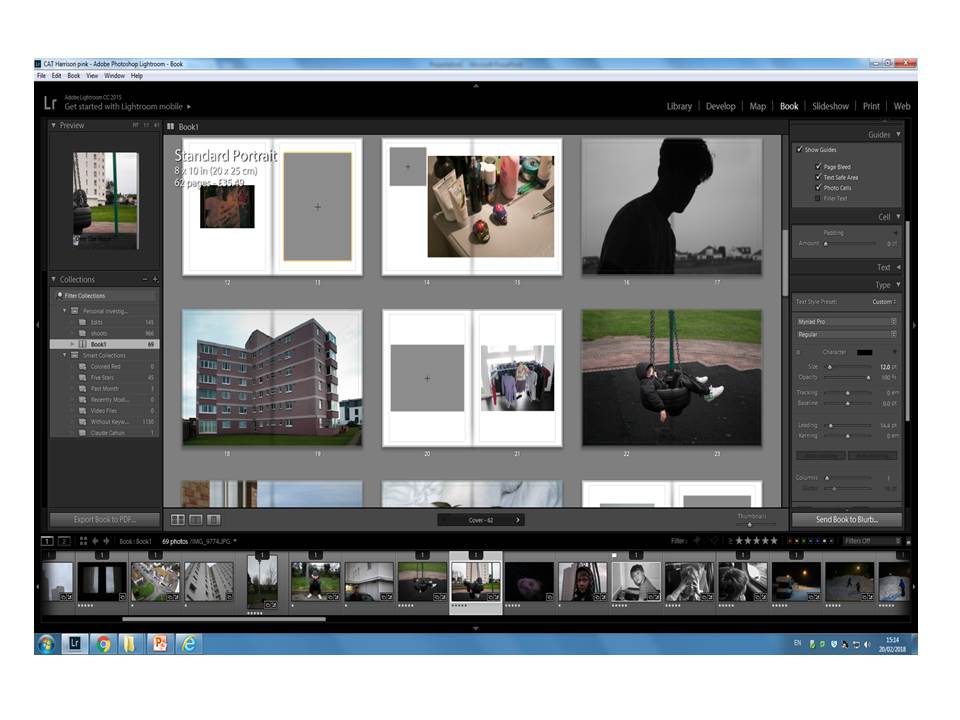

For the majority of my coursework, I focused primarily on my first photo book by capturing and sifting through 1600 images, editing the ones I thought best-suited my project and then becoming accustom to the online book publication ‘Blurb’. In retrospect, I struggled with this particular project as I found the content rather intrusive and the self-reflection into my own feelings was an intrinsic exposure I had never experienced before. However, I am glad I studied what I did as I believe I have become more self-aware as well as starting to make a conscious effort into helping my step-brother through the process I had once undergone. I steered my attention to my socio-economic surroundings in my early life by capturing Noah in his current environment, giving the perception Noah is a reincarnation of my younger self. When I began the project, my teacher had requested I focused on something thats personal with depth and meaning, and when it came to the planning stages of my project, I realized I was drawn to capturing former situations which I experienced. By focusing on this subject, I believe I created a unique narrative which focuses on what I’m looking at, but the subject of each image I am looking at is reflecting back at me and revealing small but significant elements of my childhood story. Overall, I didn’t enjoy photographing my photography coursework as it invaded my personal emotions and feelings, but in retrospect, I believe that’s what elements are photography about; pushing yourself to identify or explore minor subjects in a unique perception.
Link to Harrison’s Blog
Sky Ailing-Philip: Loved
Essay: How do images of P.H.Polk and Khadija Saye, show change of representation of black identity?




My book is a mixture of images of the people, places and objects that hold meaning in my life. Looking back and how the growing up in Jersey a place in where there is a significant lack of diversity regards to the black in the community. Also that my parents have separated and I live with my mother, how this has effected my relationship with my father and if in some ways that I have rejected that side of my life so I became less connected to him.
Link to Sky’s Blog
Nathan Healey: Mr Ronald Welling and Mrs Welling
Essay: To what extent can we trust documentary photography to tell the truth about reality?




On a basic level I believe my exploration into the terms of occupation and liberation went well. The terms were broad and allowed me to consider many different opportunities to explore, but I felt looking at the occupation my Grandparents lifestyle was a perfect fit. At first I was a little worried as I knew my portraits were not always my strong point within photography, but I knew it would allow me to refine and develop me skills within this area of photography. Using artists such as Walker Evans, LaToya Ruby Frazier, Laura Blight and many allowed me to explore different ways to present my Grandparents lifestyle through portraits and landscapes. Initially, I wanted to focus of both my Grandma and Grandad but as my project developed I made the decision to place the central focus on my Grandad due to his higher position within the family hierarchy and how he considers himself the backbone of the household. At first, I looked at just capturing portraits and understood that my narrative of my book would need a change of pace and so I decided to explore the interior and exterior of their house and the relationship between landscape and person. In terms of photographic styles my project follows a documentary style as I try and capture the reality of my Grandparents lifestyle. I often found it challenging to produce reliable imagery as I did not want to ‘intrude’ on my Grandparents, but I felt as the project went along the bond between me and my Grandparents became stronger allowing me to decode their lifestyle more.
Link to Nathan’s Blog
Peter Le Gal: Please, Father Help Me

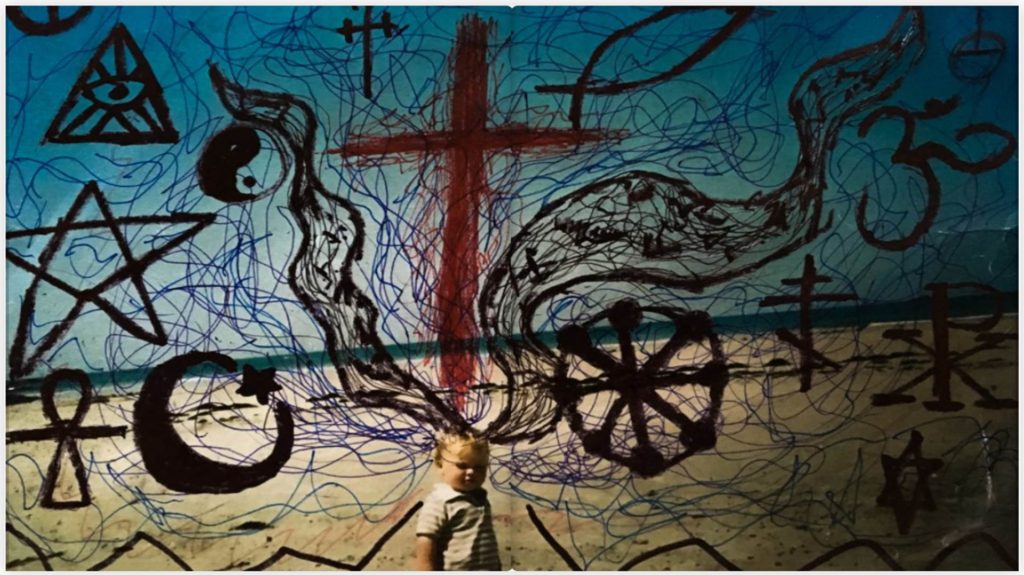



My intentions were always to have a book that explores family and how a belief and faith can connect a family as well as help it. Throughout my book I have placed photos like the one you can see below. This was useful to break up the photos as otherwise it could be considered very repetitive. Many of these family archive photos have been altered in some way or other. A continuing theme was red, this was meant to represent God as in the bible when the text is red it is Jesus talking. These photos are very symbolic. They were inspired by the photographer Jonny Briggs and Carol Benitah. Jonny Briggs is a photographer that actually visited our school. He asked us to manipulate, physically change the images to not be afraid of making mistakes. This opened a whole new realm of creativity for me and it gave me so many ideas of how I wanted to explore this. This played a part in the making of the book.
Link to Peter’s Blog
Peter Le Gal exam project: Baptism


Read more on his BLOG
The exam brief was to create photos around the words Freedom and Limitations. I made a book with the name Baptism. The reason for this is because when a person is baptized it is a symbolic representation of what God has done in their life. In this we believe God has washed away the old life and this person has started a new life with god. ‘Old’ and ‘New’ are keys words in the context of my book. By using software I was able to change the original colors and intensify them. Giving these photos New Life with New Colors.
Previously I have been studying the spiritual link between color and the soul. I read the book ‘Concerning the Spiritual in Art’ by Wassily Kandinsky, in this he writes about how certain colors can effect human emotions differently. I wanted this to be the case with my book. Baptism is a very spiritual thing and I found calling my book that linked everything together nicely. When a person is baptized the person has the Freedom to start over to begin a new life. Before these photos were Limited by the colors that they were captured in. But I have given these photos the Freedom to change, to be something new, with new colors that effect the soul differently to when the photos were initially taken.
Stanley Lucas: Preserved Consumption


This is the final layout and design for my book titled ‘Preserved Consumption’. The book includes three different sections including production, product and waste, all of which link into the theme of consumption and its permanent scarring on the landscape (hence the title preserved). Within I have included a variety of different page layouts such as double spreads, boxed in imagery and centred photos, all of which I have experimented with along the way, helping me to conclude which layouts are most effective at accompanying the previous and next photo. Regarding certain images I have included a white border due to it preventing the photo from becoming too overpowering and out-of-place, only really doing so for the larger pieces. For the majority of the pages I have used a white backdrop as I found that it complimented the images the most, stopping any attention being drawn away from the images and to the colours, something I made sure to do from the beginning. Before each category I made sure to add a title page to inform the viewer of the subcategory in the book, giving the layout a narrative as a result which I found is one of the key characteristics of the entire book. Finally I added my essay in the end pages of the book, this was because I wanted to allow the readers to interpret the topic of the book before actually reading about what I had to say about regarding it, with images depicting the studied photographers works and my responses alongside them.
Link to Blog
Stanley Lucas set of 3 books for his exam books: Hue, Form and Motif


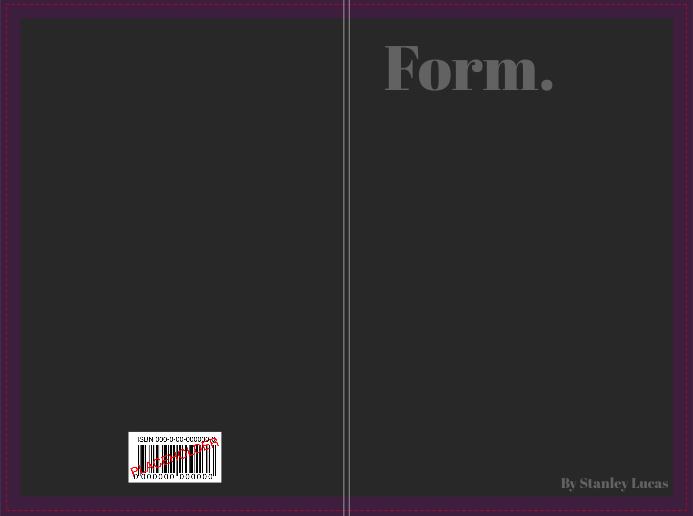

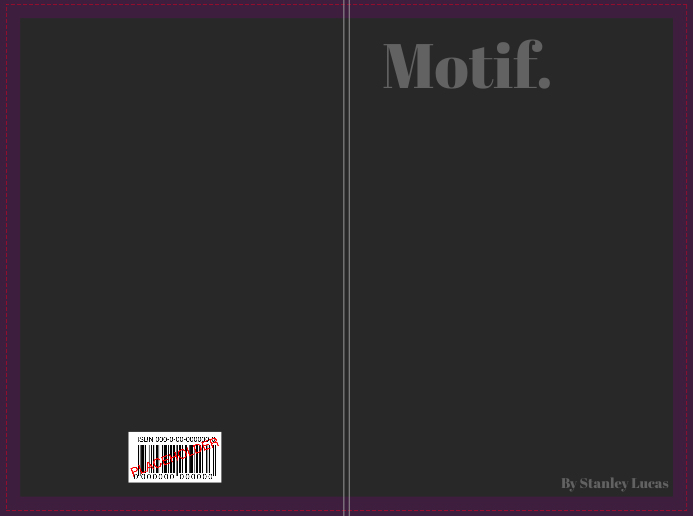

Overall these are the final layouts for each of the books, Motif, Form and Hue. The three books contain a different theme within each looking at colour, texture and pattern, all of which come under my topic title of abstraction and the variety of ways in which it can be portrayed through the camera. Within the books I have included a variety of different page layouts consisting of double spreads, single images and triple photos, all of which I have previously experimented with so that they can transition between the different photos inside s effective as possible. Regarding certain images I have made sure to include a white border around each photo due to how it effectively boxes in the pieces, separating them from the next and creating contrast between the pages which I have used a white backdrop for all pages except the covers. The use of a white backdrop I found was the most effective outcome I could produce due to it not taking away anything from the images like a coloured backdrop would, instead adding definition and that needed bit of contrast on the monochrome imagery. In creating the book I wanted to go straight into the theme portrayed on the covers of each, this meant that the first pages would include my best image from each section so that it set the pace and theme for the rest of the spreads.
Link to Stanley’s Blog:
Megan Woolsgrove: La Motte
Essay: How do the photographers Chrystel Lebas and Mandy Barker explore issues of the changing environment?





I started my project with the intention of exploring issues of pollution and plastic specifically, taking inspiration from the photographer Mandy Barker and experimented in my first shoot by taking images with string infront of the lens looking at rules of manipulation. I then found the photobook ‘The Meadow’ by photographers Barbara Bosworth and Margot Anne Kelley which is what first interested me in photographing and exploring specific areas, as well as gathering objects and photographing them. I also discovered the photographer Chrystel Lebas and her photobook ‘Field Studies: Walking through Landscapes and Archives’ which is where I read about the changing environment. She compared her modern images to the photography of Edward James Salisbury in the early 20th century and walked in his footsteps, going to the same areas he did to explore how the environment had changed over 100 years. This is where I decided that the concept for my project would be looking at how the natural environment had changed over 90 years at the location La Motte. I found archival images from this area and thought i would build my photobook around them, comparing and contrasting them to my own images. I noticed Lebas’ influences from sublime ideologies by Edmund Burkina his book ‘Enquiry into the Origin of our Ideas of the Sublime and the Beautiful’,with her images being vast and other-worldly, which is an aspect I wanted to reflect in my own work. From then on, I did an additional five shoots where i went and took landscape images of La Motte and at the same time gathered natural objects that i found on the island and the beach i.e. rocks, seaweed, flowers. I did multiple shoots where I photographed these objects formally with plain background and edited them to reflect the work of early botanists where they used light sensitive paper to create photograms. I did this as i thought it would give my project and photobook a scientific appearance and reflect that of an investigation into a specific area. Towards my final shoots, I walked around La Motte and tried to find man made objects that I could photograph to perhaps represent how the natural landscape had changed.
Link to Megan’s Blog
Nicholas Gallery: Waste
Essay: In what way have Mandy Barker and Keith Arnatt explored the concept of Anthropocene in their work?



In the final version, I changed the cover images to what was originally the first pages in the book. I felt that these images were more powerful in portraying my ideas as well as captivating the essence of my project.
I summed the topic of my project in one word being ‘Waste’ as it reflects the three concepts behind my work:
- The ‘Waste’ featured in the images
- The action behind humans throwing away the things they do not consider important.
- The consequences of disposing items to ‘Waste’ away.
- The title is written sideways to give a ‘scientific document’ feel.
I repeated the same pattern of images throughout the book, to give an organised aesthetic. The circle images are placed alongside their close-up comparisons to show the detail in the items depicted. I chose to make many of my images full scale, as they all have dark backgrounds. Black is used in a minimalistic style to emphasize the items, as well as being associated with darkness and negativity to reflect the topic of pollution.
Link to Nick’s Blog
Charlie Craig: WATCH OUT



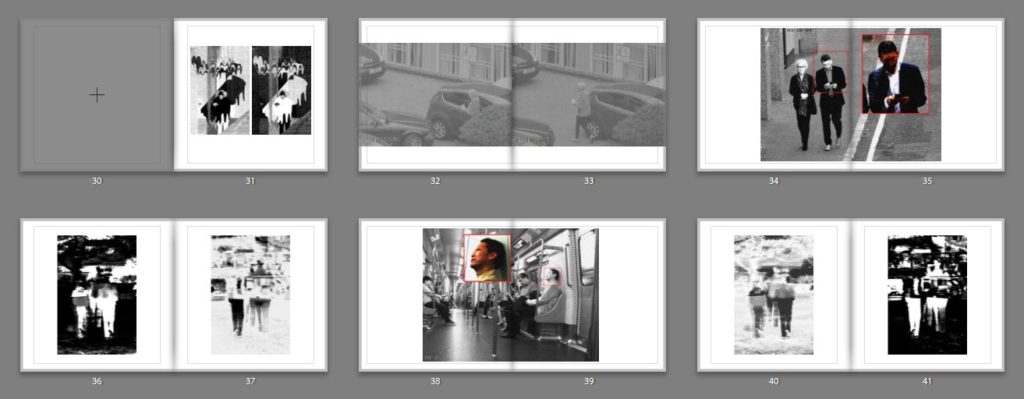
In my design specification I stated ”Some images will be best as full page spreads (single or double), some images will look best with boarders and some will look best grouped together, and therefore I am not going to limit myself by completely sticking to one uniformed layout and will instead lay out my photographs in the way which I believe individually best suits them…The sequencing of images in the book I intend to follow a narrative of how surveillance is evolving/developing. So as the book continues the images represent closer and more personal forms of surveillance, such as surveillance through our own devices. Whereas in the beginning it will look at visual forms of surveillance (birds) and then early forms of technological surveillance (CCTV etc.)” This, as I said, was something which I definitely followed up on and stuck to.
Link to Charlie’s Blog
Zoe Pannenborg: A State of Contentment
Essay: How does subjectivity affect the authenticity of photographs representing third world countries?



I decided the title of my book ‘ A State of Contentment’ when i was actually in Burkina Faso completely submerged in the situation that i was in. The idea came to me when we were on the building site discussing the local community and thinking of all the things we are grateful for that we were getting to go home to. It was evident to us that we would only be in Africa living a minimalist life for a few weeks whereas the reality for the local community was that they would be experiencing this hardship for the most of their lives. Although this seems like a harsh thought we had all noticed that even though the community had so little they were utterly content with what they had and i said during this discussion that it seemed as though they were in a state of contentment, because the community truly were in a state of peaceful happiness. I put the title and my name on the cover so that the writing did not take away from the cover image.
Read Zoe’s BLOG
Daniel Butt: Help
Essay: How can something that doesn’t physically exist be represented through photography?




I decided to portray mental illness throughout my photobook. When I started this project I knew I wanted to tackle the subject of mental health, but it took me a while to figure out the best way to go forward with it. Originally i though of using landscapes as a way to convey emotion, however eventually decided to turn the camera on myself for a set of self-portraits. I feel as though this decision really helped me open up and put as much personal experience into the book as possible. After the original self-portrait shoot, i wanted to continue with creating a really unique and personal narrative in which i can show both my own emotions and feelings that i have been through, but leave parts of it ambiguous enough to be interpreted by other people in their own way.
I then decided to focus on my personnel experience surrounding prescription anti-depressant drugs, or more specifically SSRIs ( Selective serotonin reuptake inhibitors ) which are used when, for whatever reason, there is a lack of serotonin being produced, with it’s aim to boost serotonin levels in the brain. This element was quite difficult to capture, as most of the time you don’t notice anything different, which is why i decided to use a gradual build in saturation inside the book to show the slow but steady changes, however I did want to make sure to capture aspects of medication not working, and the task of changing medications and gradually building back up until it works. I represented this component in my book by showing the rise in dosage levels in text at the bottom of the page.
Study his blog here
Ari Gamble: Untitled
Link to essay: How does the work of Francesca Woodman and Carolle Benitah explore isolation through self-portraiture?



I want to explore how moving from where I have grown up has impacted my life, whilst also adjusting to and finding beauty in a new place. I want this book to primarily focus on family and my relationships with them whilst growing up.
Explore more on her blog here
Eleanor Gilson: Erasure and Uncomfortable Skin
Essay: Can identity be expressed in a portrait?
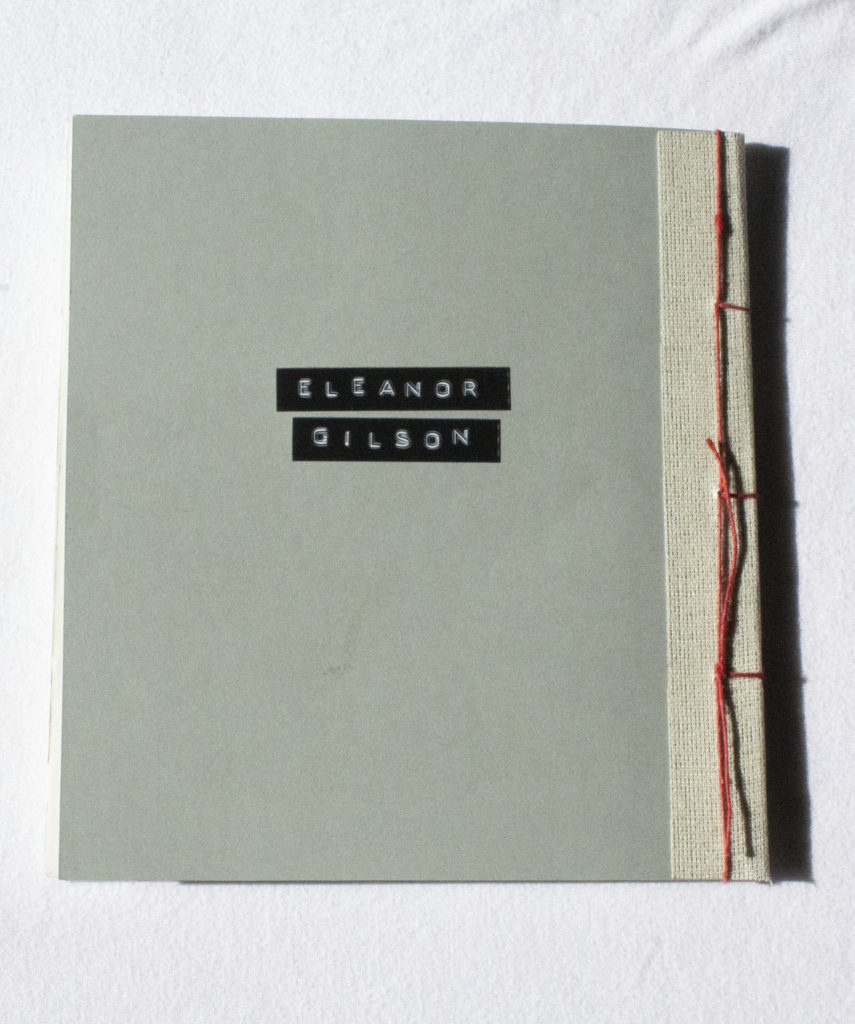


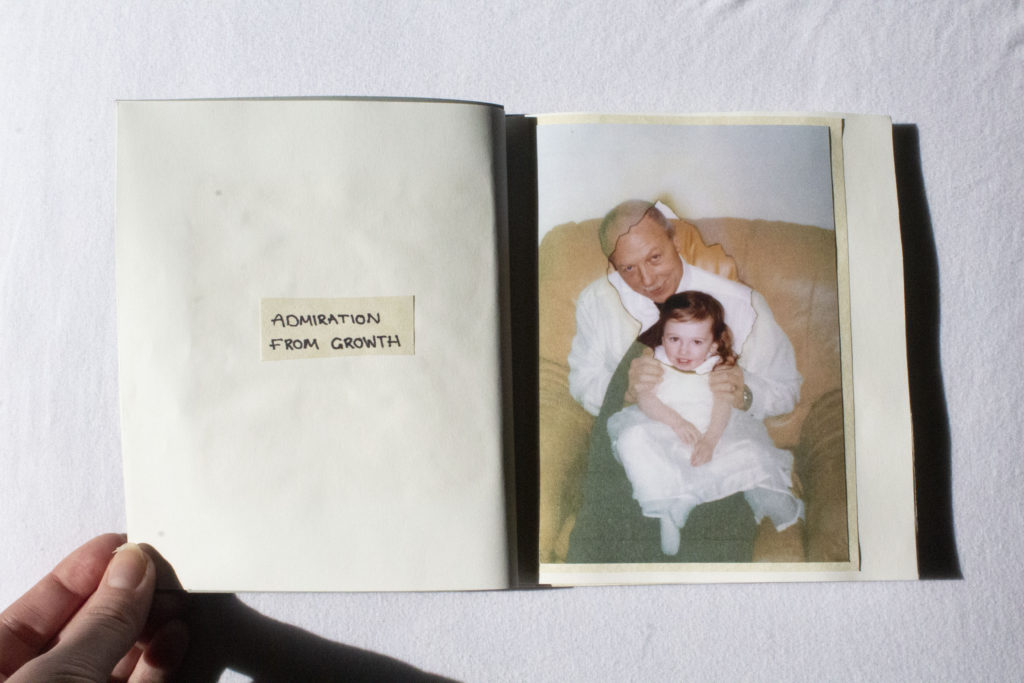
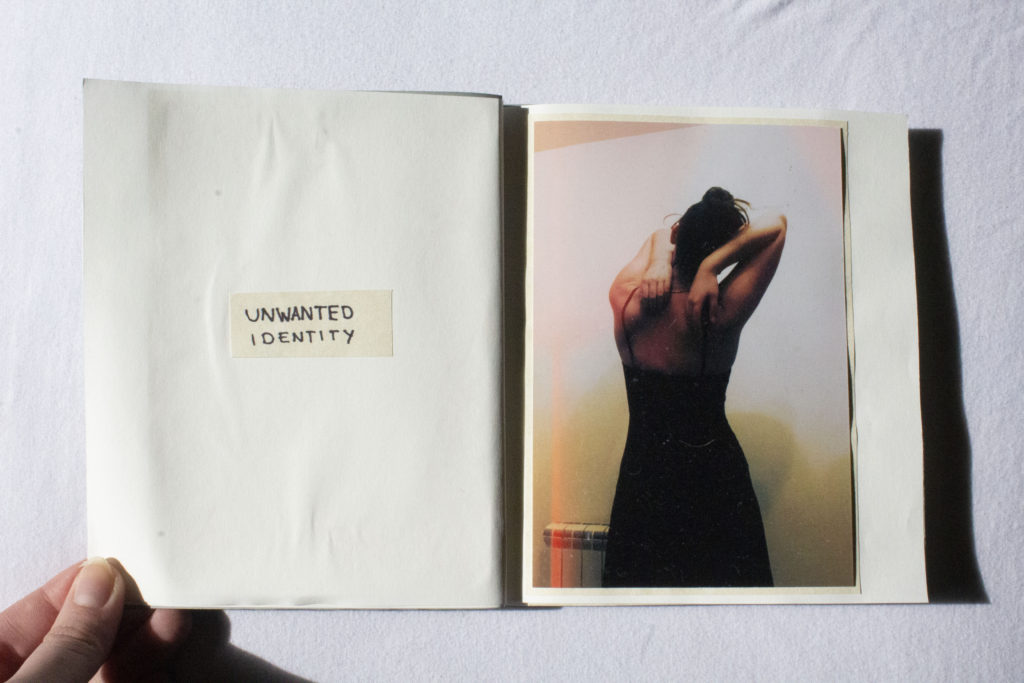
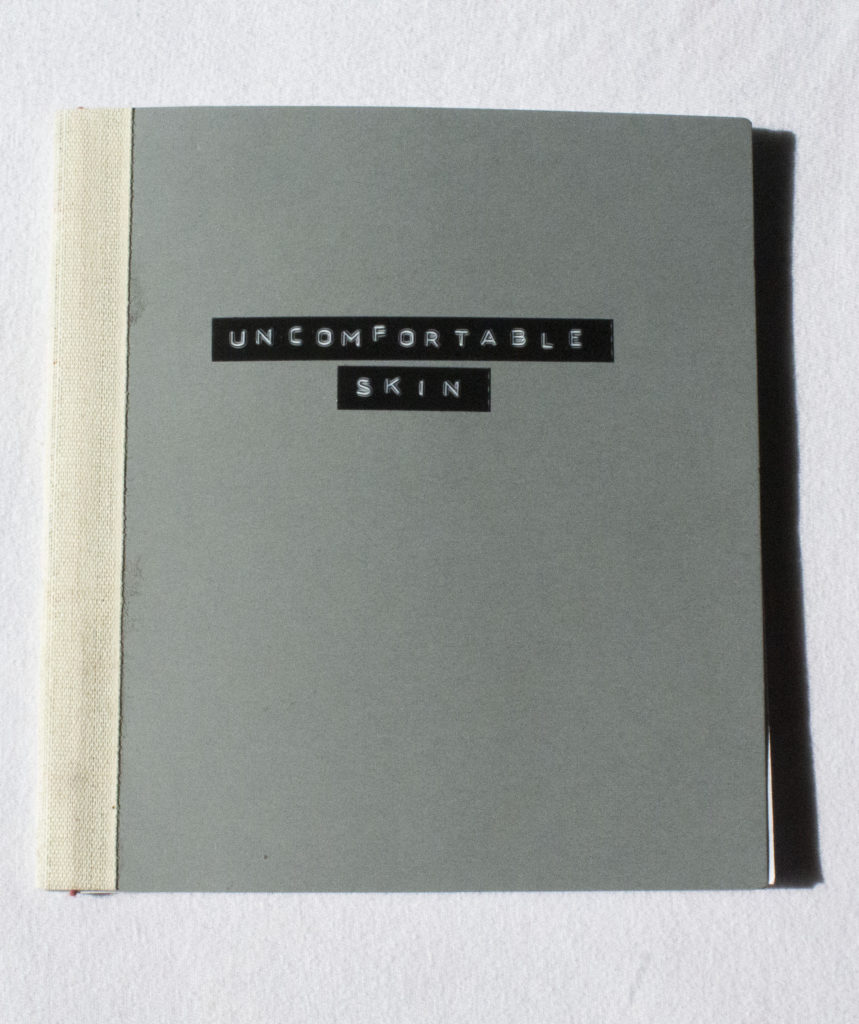

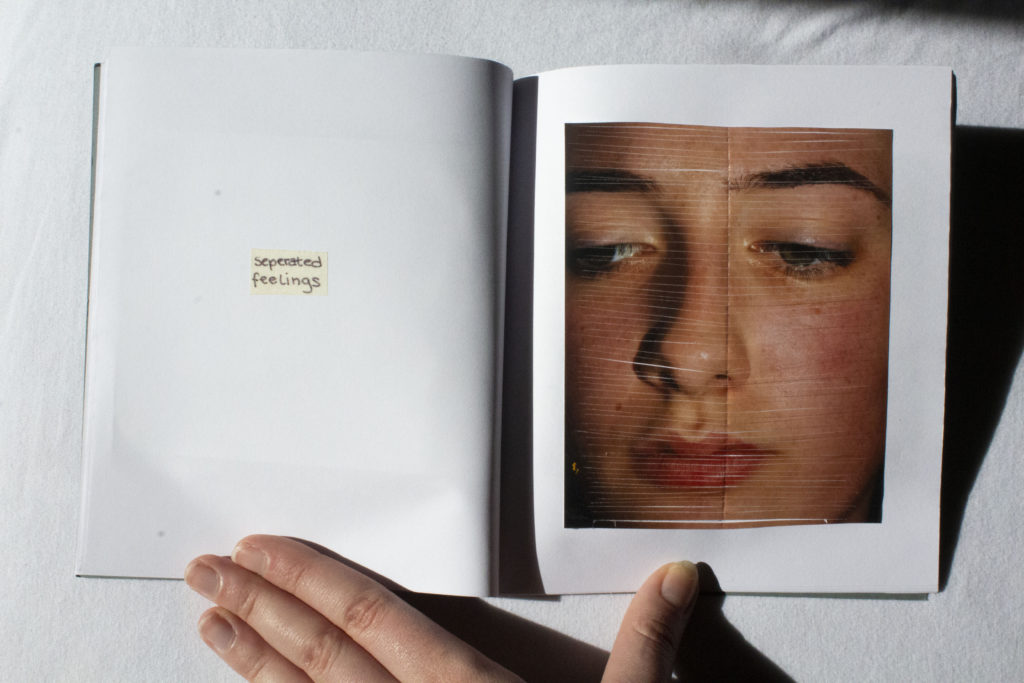

To conclude, this project has overall been successful in terms of recording and capturing the concepts which I brought into the project, focusing on self identity. Given the titles ‘Occupation Vs Liberation’ I had a large range of work I could explore, however I found the idea that suited best was the liberation of personal identity and the occupation of your own thoughts. Initially I wanted to focus on the destruction of self portraits that would reflect a physical emotion towards these pictures, but through experimentation and photoshoots I created images that reflected an identity. Through my responses to Francesca Woodman and Edward Honaker I was able to combine both response imagery together in which they completed each other and formed a narrative. The narrative being the unwanted identity I was given and how I view myself within those images. Within my final zines I utilised self portraits both archival and new so that it was reflected even as I grew, the sense of unease was consistent.
Study her blog here
For my final pieces, I am very proud in how I managed to construct 2 photographic zines, a storage box for them and a mobile for my mounted and hung images. I wanted everything to be done by hand because it was a project about myself and I don’t think something made by a machine would convey the right message.
Kristiana Ambrasa: Le Seuil De Pauvrete

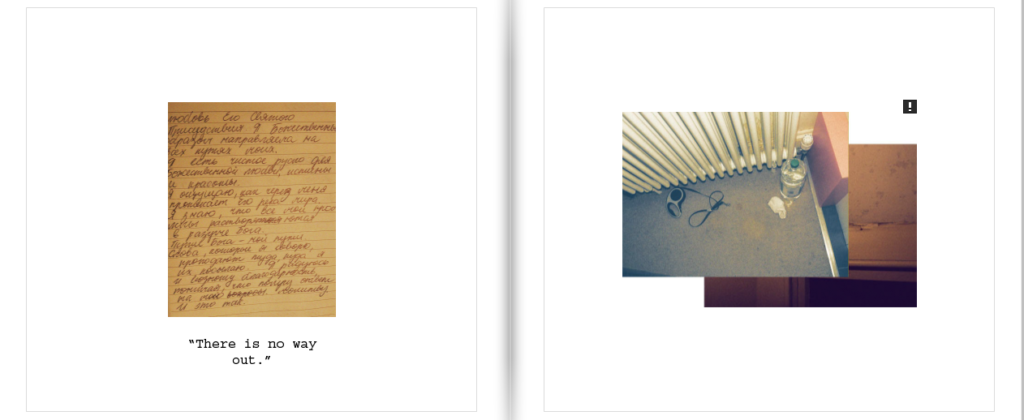

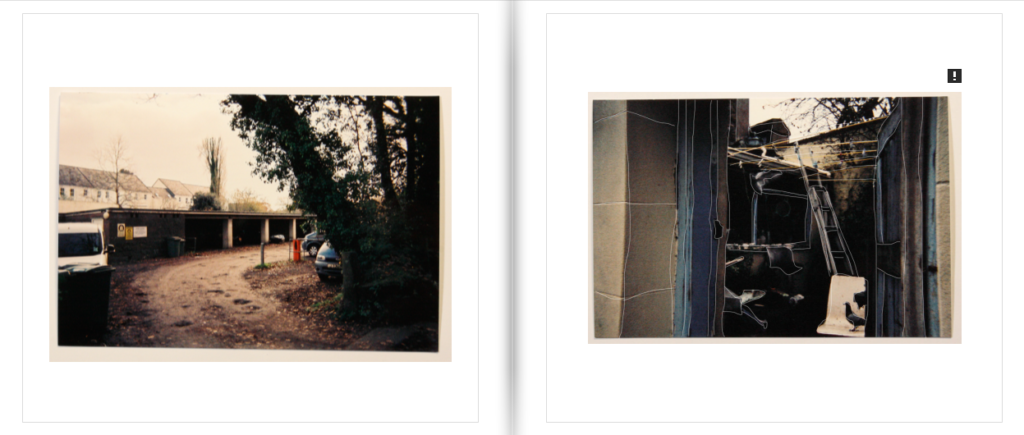


This project has overall been very successful in terms of recording and capturing the concepts which I brought into this project, focusing on three main concepts, the housing crisis, nostalgia and control. I took significant inspiration from the slum photographer Nick Hedges and used his conceptual and contextual intents within my own work, bringing awareness to the housing crisis here in Jersey. In order to respond to my personal study I employed the use of both a film camera and digital camera. As I used the theme of nostalgia, the use of a film camera is an effective way to display this through the grainy and soft nature of the photos themselves. The subject of my images is the low cost, affordable housing which can be rented in Jersey. I contacted estate agents in order to show the contrast of the way in which housing agents glorify these homes in a way which makes them more commercially appealing, versus what the reality of them are. I focused on small and minor details which distinguish each property such as the flooring, bathrooms and kitchen cabinet. I photographed the exterior of buildings, going around the dingier parts of St.Helier which depict the depressing lifestyle some people face by living in the urbanized town center.
Link to her blog
Orla Worthington: Ascension





When developing my final book I wanted to have something unique, something I have never done before, and originality that meant my final presentations will be unlike any others. To do so I started off with developing the book. I Knew for my book I wanted to create a black and white tonal book. This soon transpired to having silver and black ink inverted to create glowing images. I also knew that for my narrative of life from birth to death, told through the story of creation, That I would need a long narrative. To do so I first off assigned myself 100 pages, then narrowing down only the best images to around 87 pages in total. Furthermore, to go in hand with his over exaggeration of visual overload due to the volume, I decided to have an image on every single page, so to go hand in hand with this large effect. In the end I was left with an array of different displays, differing from two full bleeds, to some with black boards to full double page spreads. The distorted array not being continually mimicked was very effective and something which Made the narrative of my book, perhaps, more enjoyable, as you are able to take your time when looking through each of the images. As spoken about previously the finality of my book was found within previous books such as Astres Noirs.
Link to Blog
Niah Da Costa: Espera
For my photo book, the main theme was intimacy and young love. I wanted to explore my relationship with my boyfriend and show a series of different styles of images. I called this photo book “Espera” which means to wait in Portuguese, as this word (besides love) is a word that both Jack and I use frequently. Read more on her BLOG here.


Aimee Low: Nothing Can Come Between Us
Study her blog here
For my personal investigation I intend to create a photo-book project around the theme of documenting the youth of today and our culture, which is rarely portrayed accurately in the media, this may also include certain subcultures that I could decide to delve into. I will try the best I can to capture and achieve a realistic portrait of each individual person. The question then arises, ‘What does a ‘real photo’ even look like: is it something you can hold? Is it something you can see on a screen and alter?’ (Bright, S. and Van Erp, H. 2019: 17.) I hope to answer this question throughout my efforts of trying to capture a ‘real’ portrait of an individual. How much can you really tell about a person through looking at a mere photograph of them?



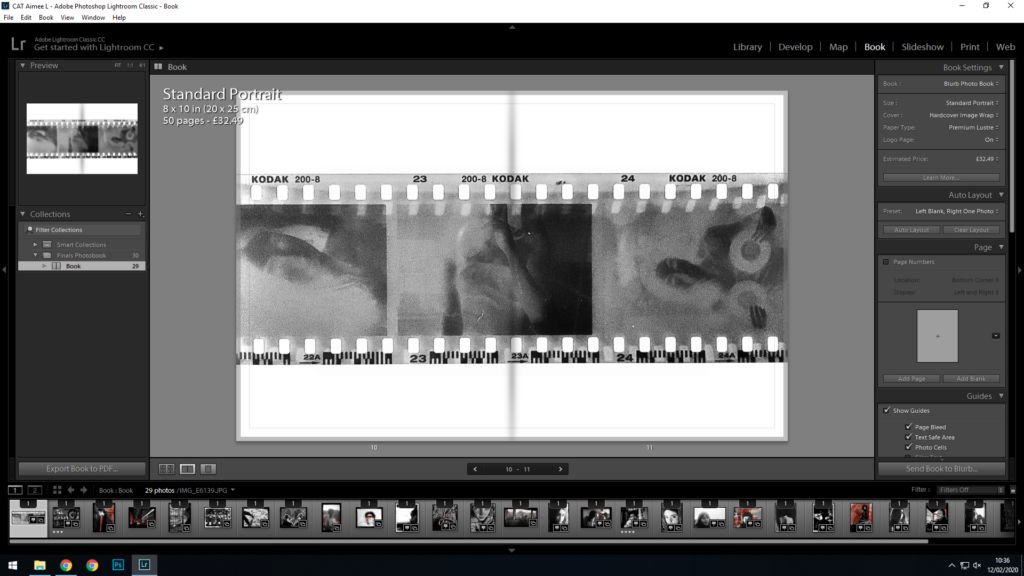

Jasmin Ross: Handle With Care
I have made a book which is called Handle With Care, it is about the history of St Saviours hospital from when it first opened in 1869 to when it closed. The layout of the book starts from the outside, goes inside then, then you meet 3 patients, it stays inside then it goes outside again to finish the book. My book is 108 pages and it has a combination of text, double page spreads and single image pages. My book is split into two parts of Archival material which was the basis of my work which i went a collected and photographed then next part is of my own images which i made of the outside of the abandoned building.
Read more here on her BLOG


Rosanna Armstrong: His Master’s Voice

Overall I have found my personal study project very interesting. Assisting with the wider project in collaboration with the Société Jersiaise Photographic Archive and National Trust has meant that I have been involved with research and discoveries as well as having access to exciting photographic opportunities. I was originally introduced to the collection of Francis Foot’s photographs in October last year while interring at the SJ Photographic Archive and since then have been involved in a lot of work developing a project around it in connection to the building restorations. I started by researching the family and history of the buildings and familiarising myself with the collection by updating the database. One of the most interesting areas of my project was actually visiting the buildings while they were in the process of being restored. This allowed me to connect the knowledge of the past to the present and explore the idea of preserving built heritage in connection to the historical photographic aspect. This relates to my interest in local history and the development of photography as an art form. Having knowledge of the past inhabitants reflects the human side of buildings and memories and traces associated with them. Some of the small details such as the image found behind the mirror and writing on the walls were particularly striking examples of this. It has also been interesting to explore family portraiture throughout time and conduct various shoots with my own family including one specifically connected to the Foot Shops.
Read more here on her BLOG
Nina Powell: Jersey Folklore
Beliefs and superstitions revolving around mythical characters in Jersey, Channel Island are common. The ancient lanes overhung with vegetation look almost like dark tunnels leading into the unknown. Unexplained ruins dotted around the coast add to the air of mystery and Island people with a long and proud history have many stories to tell which have been passed down from generation to generation. In this photo book I have explored three of Jerseys most famous and well-known legends, portraying each one with a series of environmental portraits, studio shots and landscape photographs. The first legend tells the story of the poor Bride of Waterworks Valley, the second shows the demonic presence down at Devil’s Hole and the third looks into the many tales of Witchcraft in Jersey. This project is my response to the provided themes of ‘truth, fantasy and fiction’, as well as the beautiful depictions of myths created by other photographers. My aim for this photo book was to recreate some of our islands most interesting history using beautiful and insightful visuals. By doing this I hope to bring these legends back to life in this colourful yet ominous series.
Read more here on her BLOG

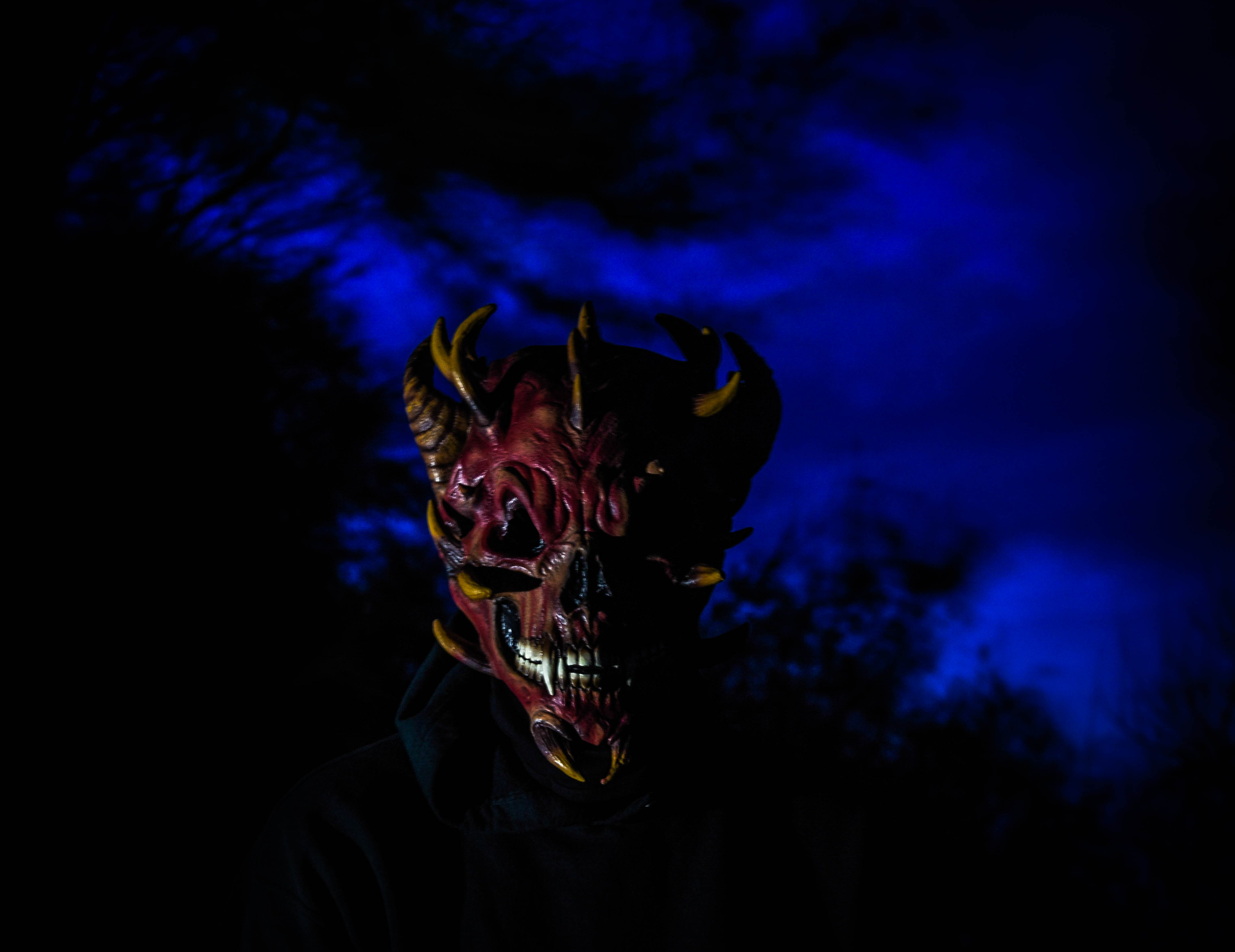
Cerian Mason: Untitled
I produce a large amount of documentary style images revolving around the more shadowed teenage social life. This involves being in a lot of places we shouldn’t be, drinking too much and probably a little more nudity that this blog is ready for. Below is a selection of my project work over the last few weeks presenting a range of locations – from abandoned hotels to out of hours nightclubs – featuring my friends being strange and causing trouble. There are some clear trends in the image I create such as the selective palettes and tight range of colours and the positioning of characters – these images were not directed at all though the figures were of course aware I was photographing them. This photobook was made using bookwright software and will be printed as a portrait A4 project. Many of the design ideas for this projects are inspired from artists and graphic designers I have studied over the last two years such as Lotta Nieminen. Studying the graphic designer’s personal projects. I took particular notice of the image layouts and use of overlapping text. There is a carefully controlled colour palette and minimalistic design which aids the presentation of images in such a publication. Benjamin Koh’s project work again has a strong graphic theme which uses a muted colour palette to emphasize the continued sense of photographic narrative. His pages tend to be uncluttered and minimal which draws attention to the graphic images in each of the carefully constructed double-page spreads. These elements were crucial to my own work, ensuring that images would be easily visible and clearly presented.
Read more here on her BLOG


Max Hillman: The Getaway
There is a consistency of monochrome tones and grainy, heavy contrasted images. Throughout my project I have looked at documentary photographers such as Larry Clark and Jacob Sobol, and upon reviewing their work i have grown a love for their styles. The layout and the order of the images is important as the book needs to flow, almost the same way a story does. I need to find similar groups of images and order them carefully one by one so the book feels as if it has a narrative. I started with a small, shadow filled image of my face as the book is about my teenage life with friends. I followed this by a double sided silhouette of a friend in the school car park leaning up against a car. I wanted to start the book of with images based around friends and our utilisation of cars. These next pages were organised to follow the theme around cars, starting with another image of friends in the school car park between lessons, leading to images in cars at night time.
Read more here on his BLOG



Gio Rios: Home Sweet Home?
In terms of my title, I called my book ‘home sweet home?’. This is of course a common household saying, that I have added a question mark to. Due to the fact that my home life is fairly broken and has been on and off my entire life, which makes it far from ‘sweet’. On the first page within my book I write the quote ‘family means no one gets left behind or forgotten’. This is controversial from the start, as my farther had done exactly this from my birth, which is ultimately what stems my thoughts and feelings towards a lot of my family life and the reasons for the decisions made within this book.
Read more here on his BLOG

Here I feature a stand alone image of an ultrasound of me. This is used to imply that I am the center of this book and that this is my own representation. The inclusion of juxtaposing images, put alongside one another, help to emphasise my emotions towards certain characters within my book.

My granddad is someone who has consistently been in and out of my life, throughout my upbringing. Therefore I feature him alongside a set of spiraling stairs to imply that he has spiraled out of my life.

Rochelle Merhet: Ryan
The first step I took to my project inspired by the work of the artists I have studied and discussed was look at my own archived family photographs. I have a huge selection taken by my parents featuring me and my brother, many appeared very informal depicting me and my brother playing and laughing at each other, which gave the ability to see the relationship between me and my brother and how it has developed. Much like any family album, these photographs share a very personal importance to me. I wanted to use photographs that depicted who I was as well as my brother in my book as a way of a candid reflection of what my childhood was like and how I felt about it. Similar to the work of Carolle Benitah I wanted to make physical alterations to the photographs to further explore the notion of nostalgia, memories and the relationships between family members, in particular between me and my brother. I wanted use their project as a way to further understand myself through the use of memories and photographs to build and develop and understanding of who me and my brother are today and in particular our differences which are created from the notion of ‘nature and nurture’.
Read more here on her BLOG




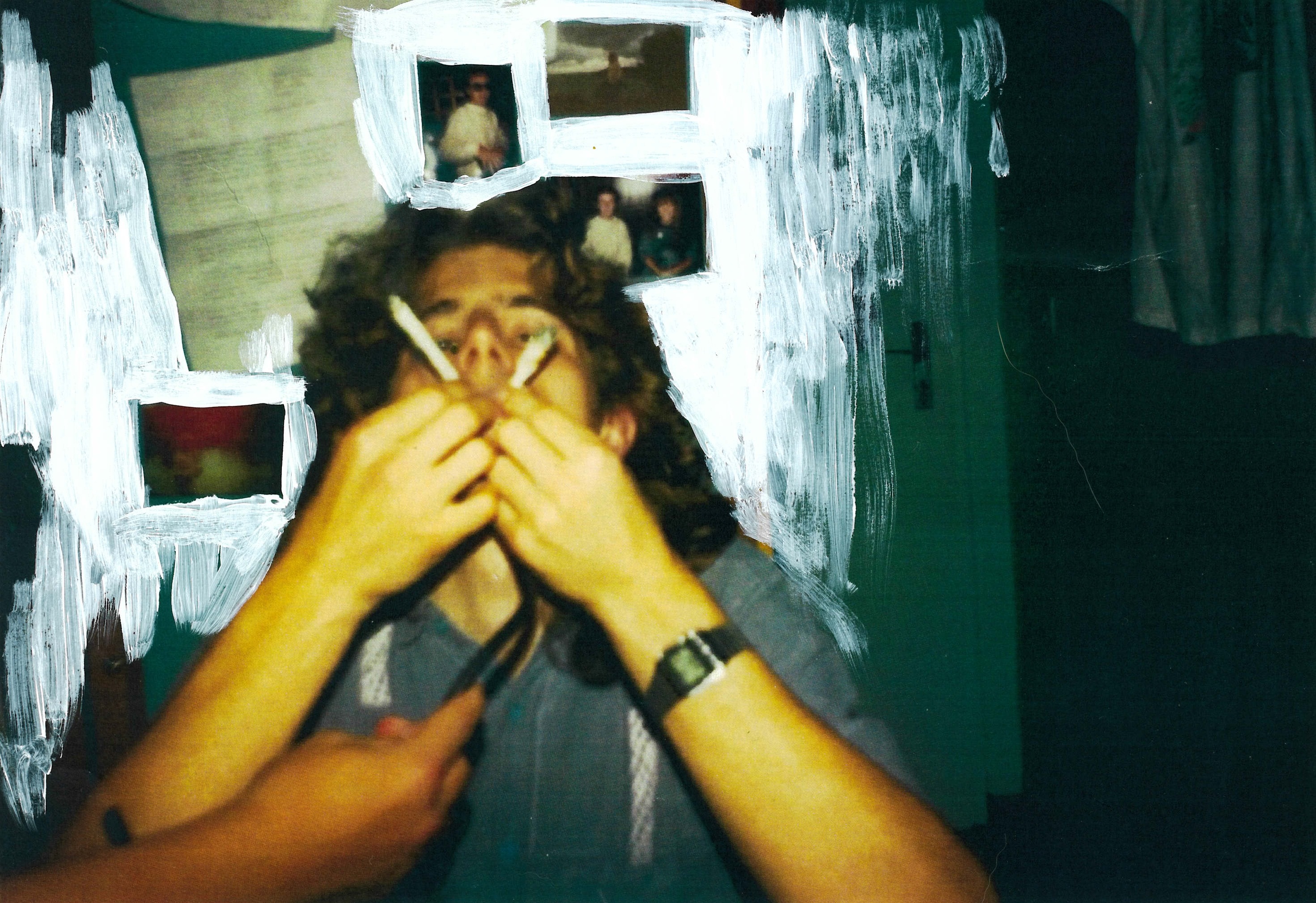

Matthew Knapman: Is that My Blue Butterfly?
The research of both these artists informed and influenced my personal project, which focused on the life of my mother who is currently diagnosed with metastatic breast cancer. She was originally diagnosed with breast cancer in Easter 2014, but when the cancer has spread to other parts of the body, it is called metastatic cancer. The liver, lungs, lymph nodes, and bones are common areas of spread of metastasis. Using art and physical materials, I wanted to draw into and edit the photographs I take in order to illustrate my emotions and what my mother is going through. The physical art would be a visual guide to the audience, telling a story regarding the illness. This is something that I was excited to do, given my passion and abilities in art and design. I can draw, scratch or edit the photograph using chemicals and other kinds of destructive methods. This can demonstrate some kind of investigation into the relationship between traditional art and Photography as mediums. This is something that I touched upon for my AS project.
Read more here on his BLOG







Christianna Knight: Women of Yesterday
During my personal study I enjoyed having freedom to explore my own ideas and take inspiration from artists and photographers that I am interested in. I was very inspired by Cindy Sherman’s work, I wanted to explore themes such as masquerade, costumes and stereotypes which are very present in Sherman’s studio portraits. When first collecting ideas as to what I should base my project on I decided I wanted to explore female stereotypes through costume and studio portraits. However, with so many stereotypes existing within my gender I decided to create a series of portraits depicting stereotypes from each decade of the 20th Century. As I was born in 1998, I was looking at these stereotypes with a retrospective. I also kept feminist theory in mind, relating my stereotypes to important movements in feminist history including the three main waves as well as smaller social victories for women. I felt that this project was very successful and that each decade was well planned and executed and that the nine image work well as a series.

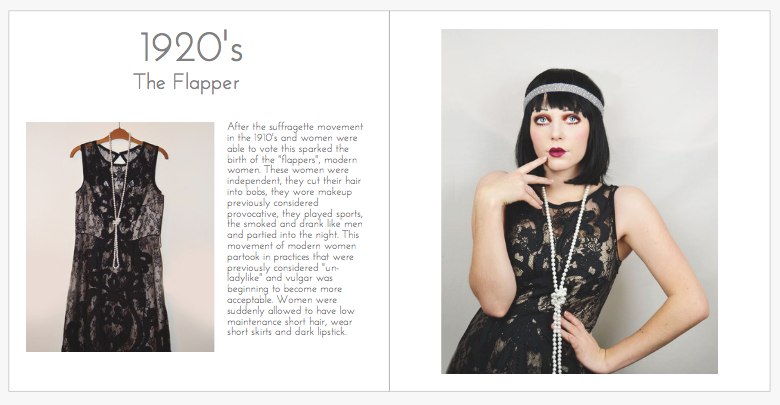



Read more here on her BLOG
Max Le Feuvre: Untitled
My photo-book is based around my Grandfather. He died 30 years ago and so I never got the chance to meet him. I wanted therefore to find out more about him and develop an understanding of what he may have been like if I had got to know him. This project was therefore very much about exploring and investigating the theme of absence, a story based around someone who is no directly part of it. I photographed off and on for 9 months to create this project, re-tracing my Grandfather’s steps and using photography to express my findings. Archival resources in particular have played a huge part in my project, especially through the access I have had from the Société Jersiaise Photographic Archives, and the resources I have found play as much a part in this story as does my own responses. I wanted to make my images and narrative feel as simplistic and personal as possible and so I constructed my photo-book by hand, I style I believe gives my work a quirky, old-fashioned feel.
Read more here on his blog:
https://hautlieucreative.co.uk/photo16a2/author/mlefeuvre05/
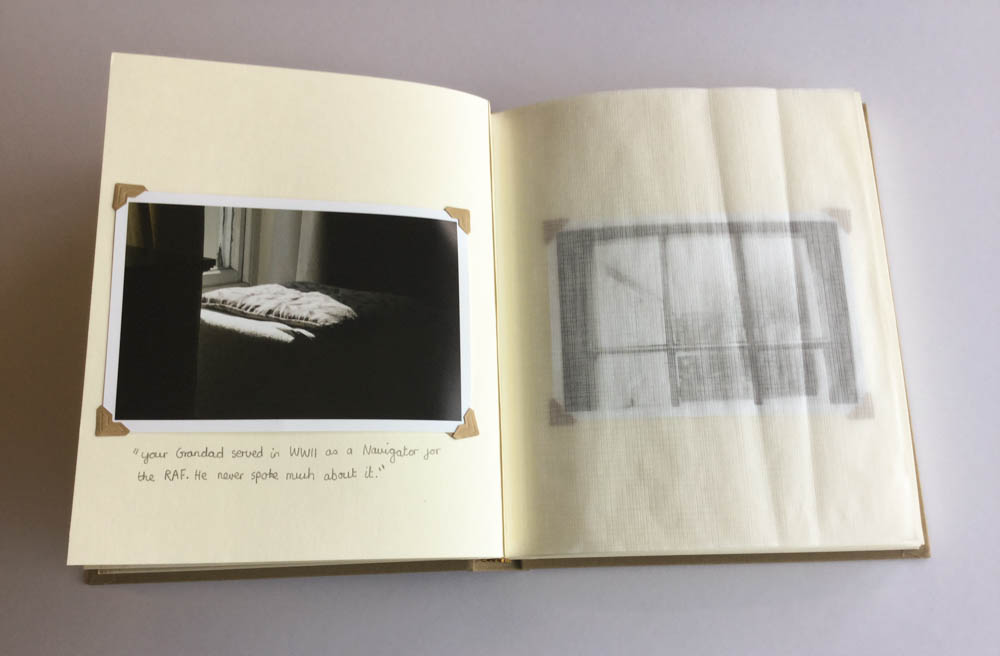



Shannon O’Donnell: Shrinking Violet
Shrinking Violet stemmed from a short film that I created as part of my project of my mother. I made a film based around an interview that I did with my mum and made it up of archival images as well as documenting her everyday life. Part of the interview sparked my interest when she said ‘I’m not one of those shrinking violets in the work place’. This caught my attention as I see her role as simply doing what is expected of her, something that I want to challenge through my photographic work. This brought on the idea for creating a parody shoot where I dress as a persona, similar to my mum, and pose around the house mimicking the role I see my mum portray. I wanted this photo book to embody the traditional role of women our society perceives and for spectators to view the images I have created to recognise themselves, their mothers, their sisters and their wives. Gender defines everyone and, at times, can be limiting. It makes us feel that we need to belong and conform to the expectations placed on us at birth solely on whether we were born male or female.
Explore research, ideas, experimentation on the her blog:
https://hautlieucreative.co.uk/photo16a2/author/sodonnell05/


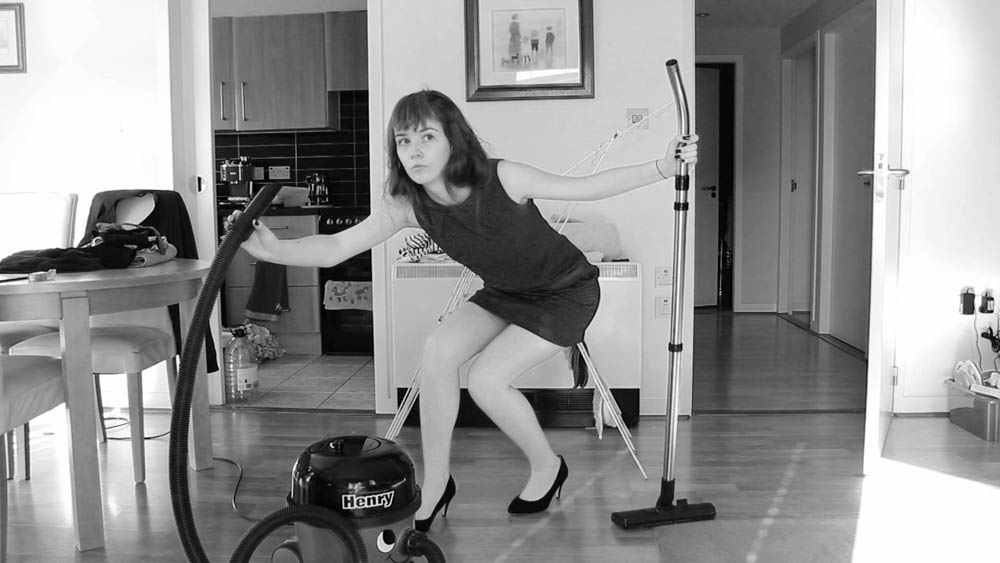
Watch her film below about feminism, her mother and her role in the family. This film was the starting point for her photographs above by re-staging herself as a domisticated female.
Jemma Hosegood: The Memory Box
“Good friends make you face the truth about yourself and you do the same for them, as painful, or as pleasurable, as the truth may be.” – Corinne Day




An autobiography is an account of the life of a person written by that person. In other words, it is the story that a person wrote about themselves. My inspiration for this study came from memories that are forgotten, and the ‘things’ that re-jog our brains to remember them. These could be objects from a childhood collection box or a set of images from a blurry holiday. For this piece of work I attempted to join two ways of memory revival into a book as well as a layout presenting some of my final images.
Read her blog:
https://hautlieucreative.co.uk/photo16a2/author/jhosegood05/

Hayli Ducker: My Bones Hurt
I took huge inspiration from photographers such as Thilde Jensen, Jo Spence and Francesca Woodman, these three photographers all explored their illnesses through photography which I thought would help me come to accept my diagnosis. As Jo Spence explained, photography can be used as therapy, “literally using photography to heal ourselves.” Through taking these photographs to document my illness like a diary I came to terms with it and learnt to adapt and slowly started to be able to have a normal life again just at a slower pace than before. For me this was a difficult subject matter to explore as I try and keep it rather private, friends know about it but I try to keep it private from classmates and the general public. I don’t want people to look at me differently and I found I felt rather vulnerable exposing the one thing I do my best to hide.
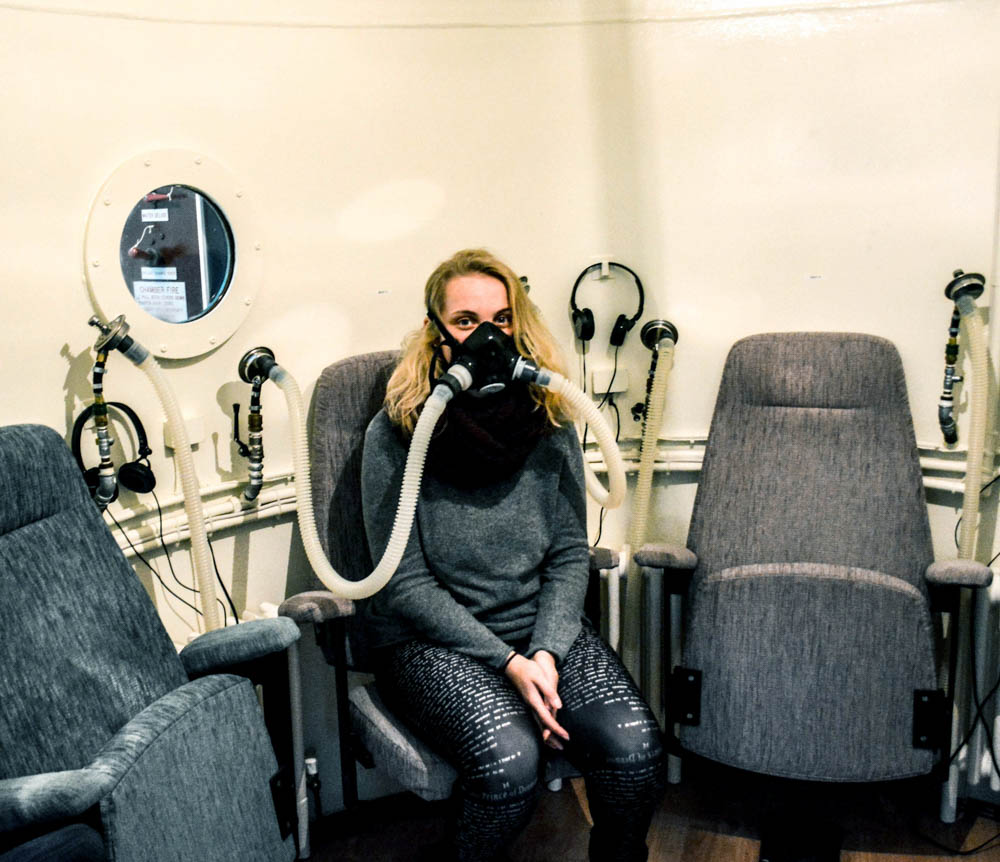
Link to her blog:
https://hautlieucreative.co.uk/photo16a2/author/ckeene05/
Jessica Freire: Domestic
My personal study is about my mother who immigrated to Jersey in 1987, from a disadvantaged background in the hopes of having a better life. My mother is the eldest child of six, who grow up in a village called Machico on the south east side of the Island of Madeira. After leaving school at the age of 9 to work on the land to provide for her family, she developed a hard working discipline. Currently, she is the breadwinner within my family working in five different jobs all within the domestic area. In my personal study I am exploring how my mum’s role as a breadwinner abdicates from her culture and stereotypical role within a household.



Link to her book Domestic

Explore research, ideas, experimentation on the her blog:
https://hautlieucreative.co.uk/photo16a2/author/jfreire05/
Sian Cumming: The Butler
As a photographer, it is important for me to express details about my life to almost create a biography through photographs. I chose to use my dad for my project as his job has impacted my life since day 1. My dad is the Butler for the Lieutenant Governor of Jersey and has enabled me to have an insight into the life of royalty. My dad’s responsibilities are; ensuring the house events run smoothly, he also manages the house staff and liaises with his Excellency and Lady Mc Cole for all their requirements. I have lived in the grounds of Government House all my life and have truly honoured living here. Our tight community has really impacted my life and the way I am, as I also work as a waitress for Government House functions, I have been taught the type of service required for the Governor and his guests by my Dad himself. It was an honour to follow the footsteps of my dad and what he does at work and for the Governor to allow me take photographs of him off duty was a privilege in itself. To me, family is the most important aspect in life, it’s the root to our personality. Family is the single most important influence in a child’s life. From your first moments of life, you depend on parents and family to protect and provide for your needs. They form your first relationships with other people and are your role models throughout life. Researching into the way different photographs express the notion of home was truly inspiring and made me want to produce something that shows how my life has been
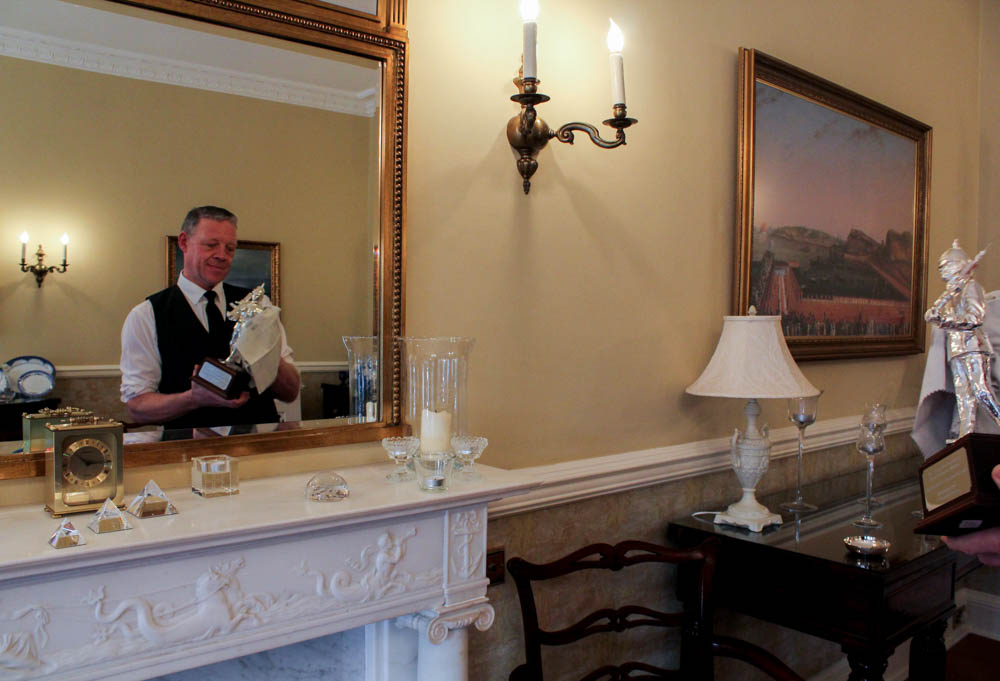
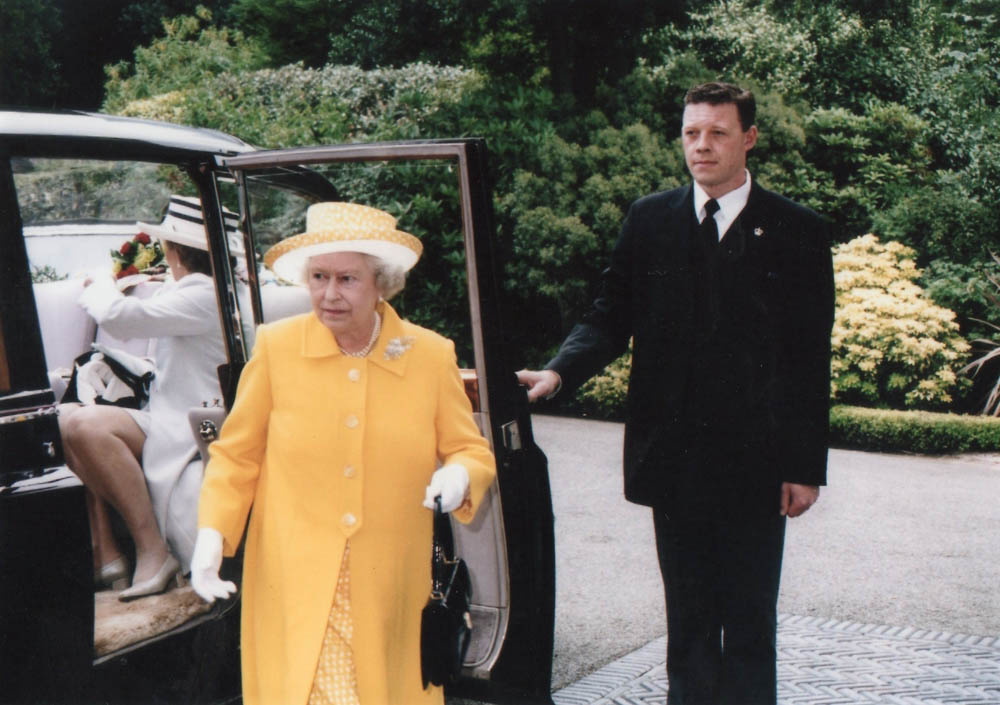
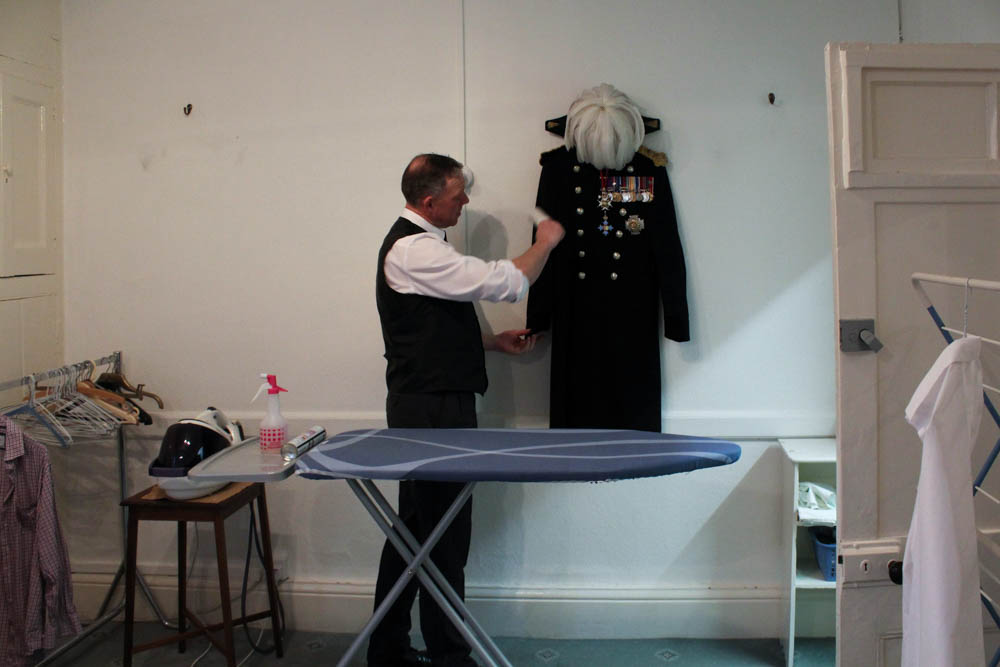
Link to her blog
https://hautlieucreative.co.uk/photo16a2/author/scumming05/
Viviana Maia: Destruction is Creation
I created this photographic book called “Creation Is Destruction” as an outlet to show how not everything we see is the truth. As part of our exam project, I decided to focus on the theme of truth to be able to have a chance of telling my own version of events that have occurred throughout my life. The main theme of my photo book is the sense that when you destroy something, you forget that you are always creating something new. I used that notion to therefore allow myself to create a whole new truth about who I am, where I came from and what it all means to me. I decided to use archival images from when I was a child as well as images taken from family photo albums which I then digitalised and this is when I began my destruction process. I ripped up, stitched together, erased people and added people to my photographs to create a new truth and a new sense of reality that, at that time I still had no idea what it was going to be until I left everything I grew up with behind and started a whole new life in a completely different place.



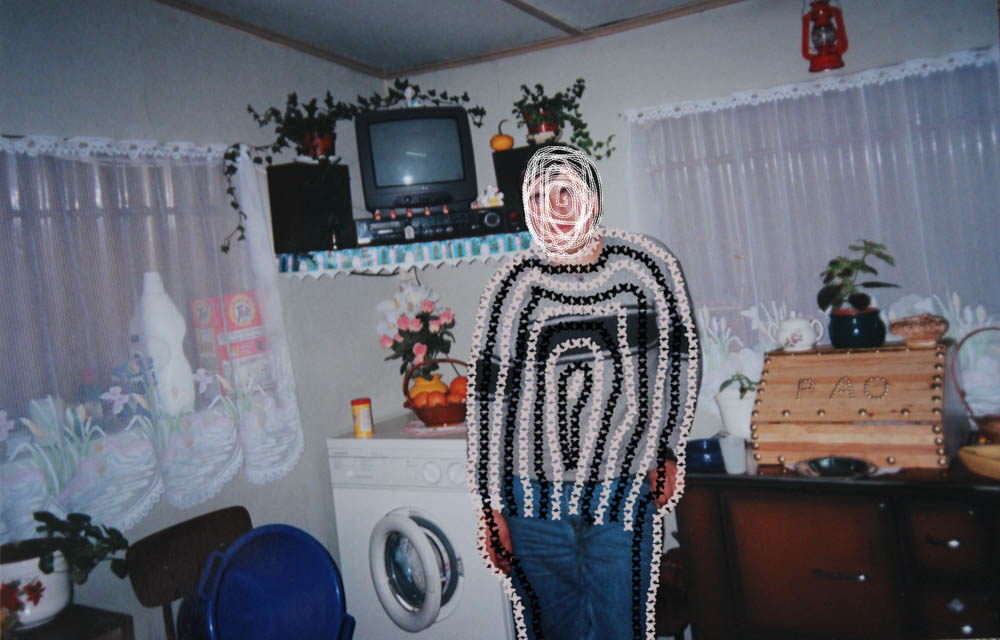
Link to her blog
https://hautlieucreative.co.uk/photo16a2e/author/vmaia05/

Holly Benning: Three Chapters
I have explored how the invisible can be captured and portrayed through the medium of photography. And why memories hold such a powerful influence over our past, present and future. I have looked at what makes a photograph meaningful, what gives a photograph reality and how through photography the memory of a person can live on. My project focused on exploring the invisible through three female generation’s memories; this included my grandmother, my mother and myself. These distinctive viewpoints enabled my project to become more personal and really seek the depths of my grandfather’s life. I think memory is more than simply remembering a once present thought, but it is about connecting with the past in order for it to live on. We are made up of fragmented memories and forgotten dreams. Our entirety rests in the fate of old letters, burnt photographs and meaningless possessions. We never question the invisible, it is as though we are on a relentless pursuit to try and capture what we cannot see. We abide by the rules and limitations that are enforced by the concept of death. But what happens to those who become untouchable, those who are no longer part of the flux. Their existence becomes empty and lost; they are no longer perceptible to the eye. We yearn to cherish the ‘good’ memories and except the restrictions we are faced with, regarding mortality. In doing so, the feeling of life is created; the tangibility of pleasure and pain enters our worlds and consumes us. But, photographs hold heritage and meaning, they have a depth of knowledge and feeling to them.
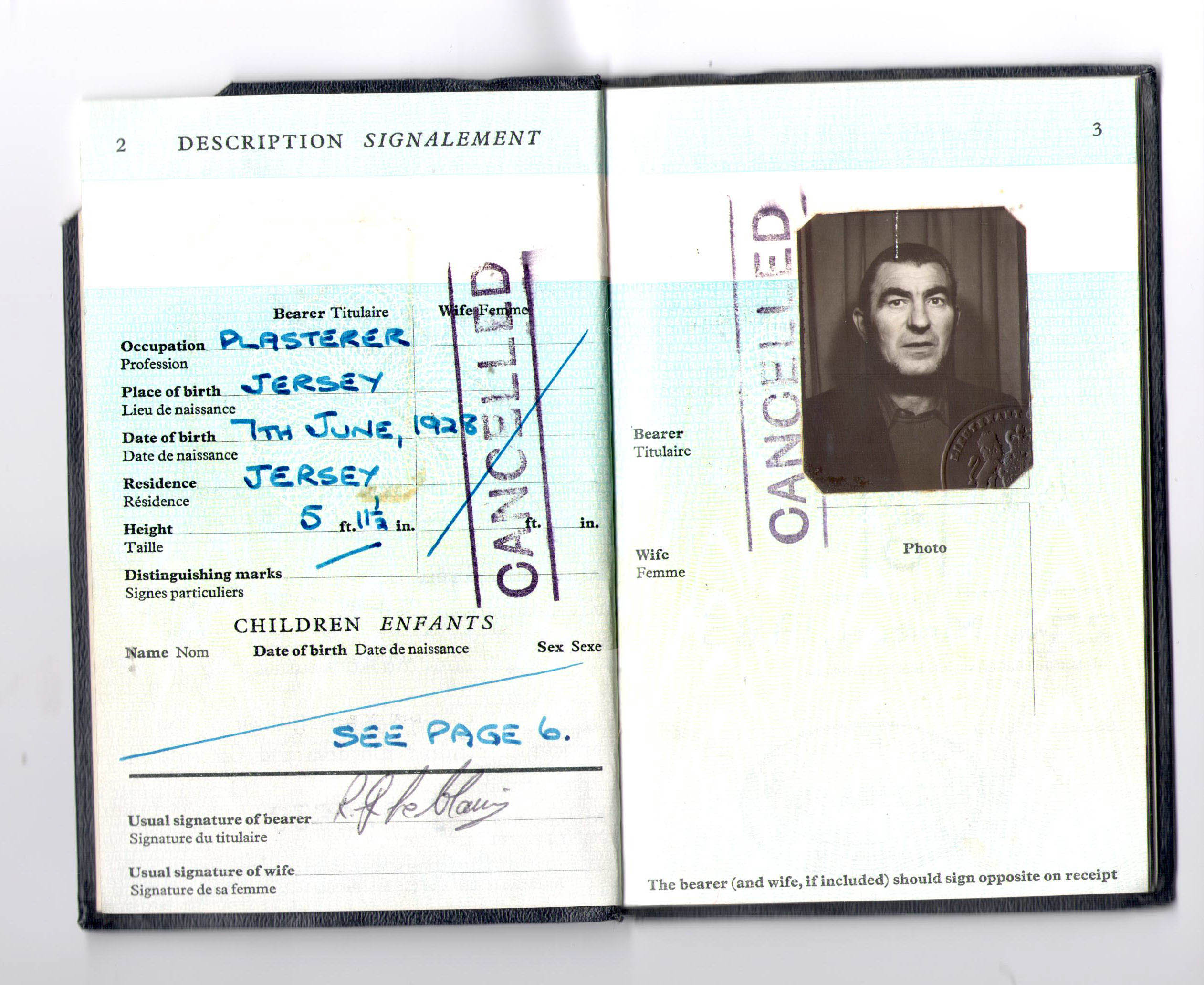


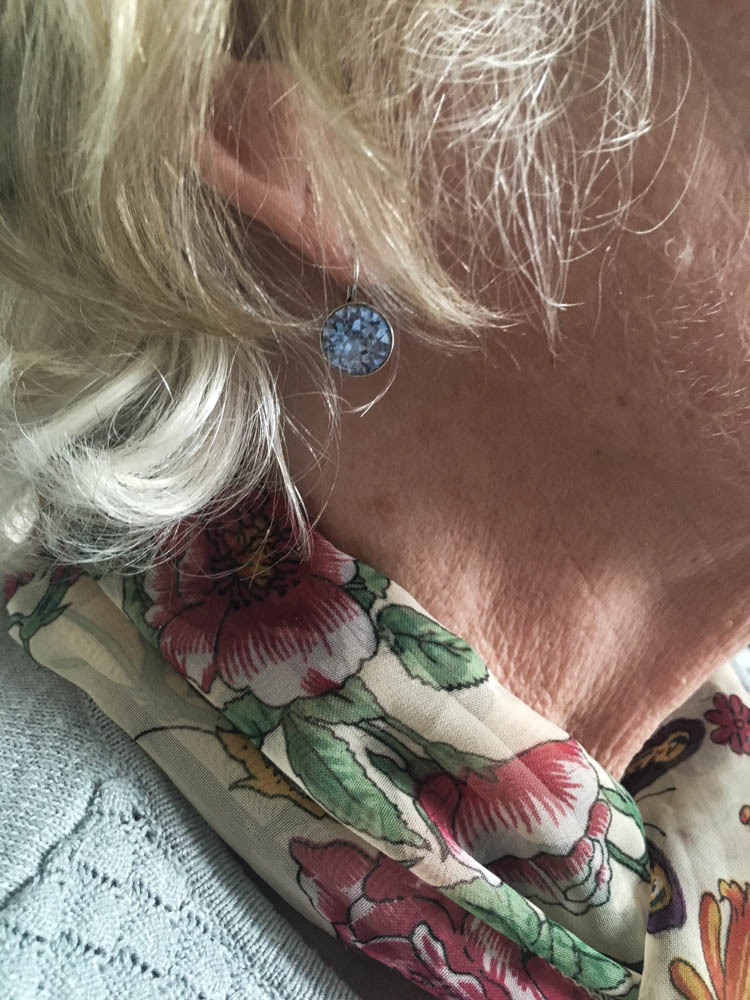
Link to her blog:
https://hautlieucreative.co.uk/photo16a2/author/hbenning05/
Personal Study | 2015-16
Bryony Sanderson: Gie us a wee word wi’ yer Mum:
The title of this work is phrase I would hear both my Scottish Grandparents say almost every time I answered the phone. During this project, I focused on my Scottish Heritage and the difficultly living in Jersey has bought to our relationship with my Grandparents.
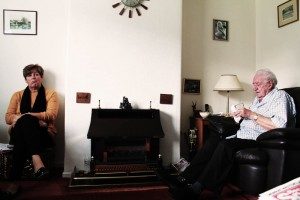


Bryony’s exam project: Artificial
Being surrounded and fascinated in the prosthetic world through my parents’ occupation, I felt that this to be an appropriate area to explore under the theme flaws and imperfections. From the moment the idea sprung to mind, I knew this was going to be a challenge, being well aware it would push my abilities as an amateur photographer. However, I was firm in my decision to pursue this, making it my goal to depict the power, strength and determination of amputees, and how in-fact, their ‘imperfection’ or ‘flaw’ as some would call it, is certainly not a flaw at all. Stuart Penn, the focus of my photographs, was such a pleasure to work and a huge inspiration, giving us the powerful message that anything really is possible. I feel honoured to have had the opportunity of taking his photographs and gaining insight into his incredible lifestyle.



Eve Ozouf A Lekker Christmas
For this project I captured the highlights of my family holiday to Durban, South Africa for Christmas 2014. The images were captured in a documentary style, which is my preferred approach as I enjoy capturing family life as well as landscapes where human activity has occurred. The word ‘Lekker’ which I used to describe my Christmas means ‘good’ in the native language of Afrikaans. My photographs show a variety of environments that South Africa has to offer with its vast land including urban built up areas to the deserted African plains. Some images show the ‘Durbanite’ way of life, including where my 14-year-old cousin demonstrates how to use my grandfather’s rifle to shoot the annoyingly noisy ‘Hadeda’ birds. South Africa is full of vibrant colours and textures which I particularly focused on when producing this body of work as a photograph isn’t just about how it looks, it’s how you imagine it feeling. A lot of experimentation was used to bring out different styles of photography including slow shutter speeds to dramatise events such as the bonfire sprites floating towards the sky. For me, these images capture the quality of life South Africa has to offer and should make the viewers want to visit this beautiful country for themselves.



Oliver Sharman You’s Company, Me’s a Crowd
This photo book is in an autobiographical form, whereby I am re-enacting events that occurred in my recent life, venturing from visiting my brother at university and the hungover pain this brough, to partying and hanging out with friends in all manner of ways and the aftermath of this. So, here is an insight into me, often eventful life of a teen in the island of Jersey.



Matt Palmer: I Need A Shovel
This photobook is the story of my Granddad, the house he has lived in since the 1960s and the clearing out of the house as it is now need to be sold. The name of this project came from my Dad. Him and a couple of others when ahead to my Granddad’s house whilst I went with my Aunt to pick my Granddad up. My Dad had the job of removing the upstairs toilet, which, when it stopped working, my Granddad kept on using it until it overflowed. When my Aunt and I arrived the first thing my Dad said to his sister was ‘I Need A Shovel.’ We all found that line funny when we heard it and then that line just stuck with me.
Lots of people can see little bits of themselves when they see my granddad’s hoarding, be it from collecting newspapers, or postcards, or whatever they’ve collected, it can all be related to what my Granddad has done over the past 50 years.
It is a growing problem. The family need to sell the house as the people next door want to buy the house, however, my Granddad doesn’t want anything to go or be moved. I feel that this could be happening to lots of people across not just the UK but the world. This project will speak to lots of families who are facing the same problem.
Matt Palmer: A Little Bit Longer:
Not all disabilities are visible. You could know some your whole life and never know that they have a severe, life-long condition. On Tuesday 14th July 2009, I was diagnosed with an invisible illness; Diabetes Mellitus Type 1, a condition when the pancreas in the body loses the ability to produce insulin independently. Day to day, my life hasn’t changed; however, I have to inject myself four times a day, and manually balance my sugar levels for the rest of my life.
As diabetes is something you cannot see, it was very hard to photograph it. I took inspiration from Elinor Carucci, an Israeli-American photographer who photographed herself with her children from when she was pregnant, through the birth to her children growing up. Her work involves very revealing, close-up self-portraits to capture her emotions. I found this style to be inspiring in capturing one’s self, and adopted this style into my own.
This is the first time I have ever turned the camera on myself. You would think it would be hard, however, it was just like I was being a model for someone else, and since I’m very open, talking about my diabetes, I found it easy to show my emotions. Photographing events from having low blood sugar level in the middle of the night, to a regular check-up at the diabetes Centre, to an eye-screening at the hospital, and the different physiological outcomes I had to injure, all within one week.
Tom Rolls: Angel; The Perfect being?
With this work, I am exploring Angels in relation to the project brief “Perfection/Imperfection” which I chose as part of my A2 final Photography exam. Throughout the project, my aim was to rekindle an idea of the Angelic being in relation to different people’s perceptions; for faith, protection, happiness, balance etc. I spoke with a number of different people about their definition of an Angel and what it meant to them.
I interviewed my local church vicar who gave me a very brought insight into angels in both a religious and personal sense. I came away bewildered at the fact that Angels are a very important part of people’s lives, and realised that there is a whole other dimension to the subject. Having researched and gained enough primary knowledge, I began transforming these different perceptions into my own interpretations and pieced together a visual binding of all the ways in which an Angel spoke to me through others. I made a film which documents my journey in the sense of exploring what angels actually symbolise today, and how its image and meaning has changed over time. I hope you will also find this a journey for yourself and come away reflecting on this inner dimension from your own personal viewpoint. Are angels in fact the perfect being, or is it in fact their imperfections which make them so sacred?CONTEXTUAL STUDIES, PHOTO LITERACY, WRITING

